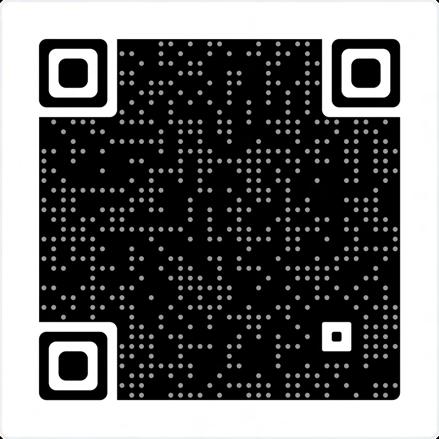
























NOA (Networks Overcoming Antisemitism) offers a pioneering approach to tackle the problem of risingantisemitisminEurope.Withits unique partnership of major Jewish networks,NOAevaluatesEUMember States’policiesacrossdifferentareas, fromeducation,toculture,tosecurity, andhelpsthem
The NOA Profiles, covering the years 2020-2023, were written, edited, and designed by Arianne Swieca and Mladen Petrov of the World Jewish Congress, with contributions from NOA's partner organizations.
to develop holistic national action plans to address and prevent antisemitism.
The word ‘noa’ means ‘in motion’ in Hebrew, reflecting a positive movement towards a society where Jewish life will flourish and antisemitismwillbecurtailed.

Throughout the next pages, you will often come across a QR code. Part of the NOA profiles were developed as videos. Scan the code to watch the video accompanying the article. Happy reading and happy watching!


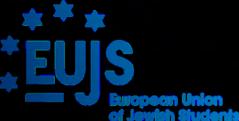
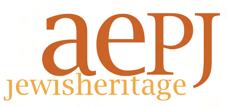

 COODINATOR IN PARTNERSHIP WITH
COODINATOR IN PARTNERSHIP WITH
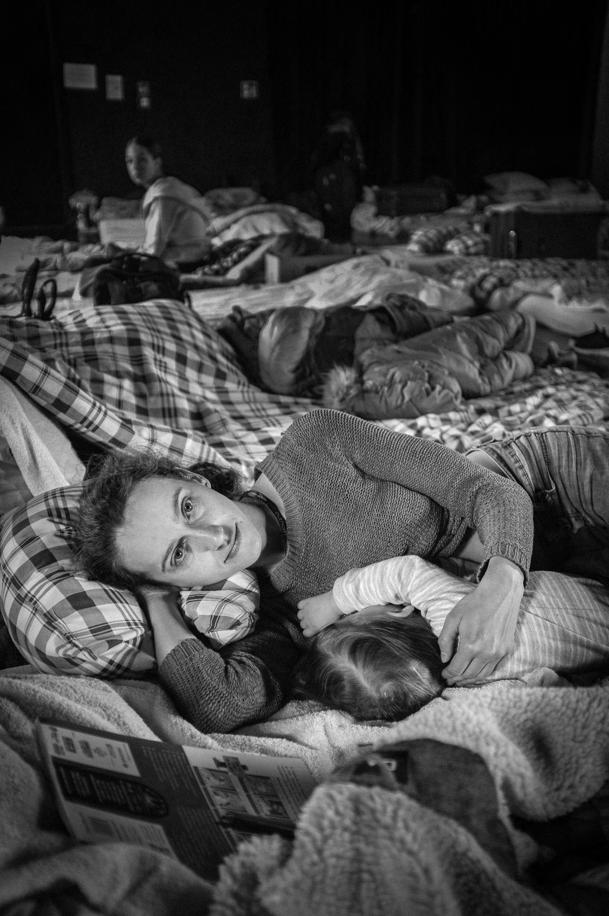
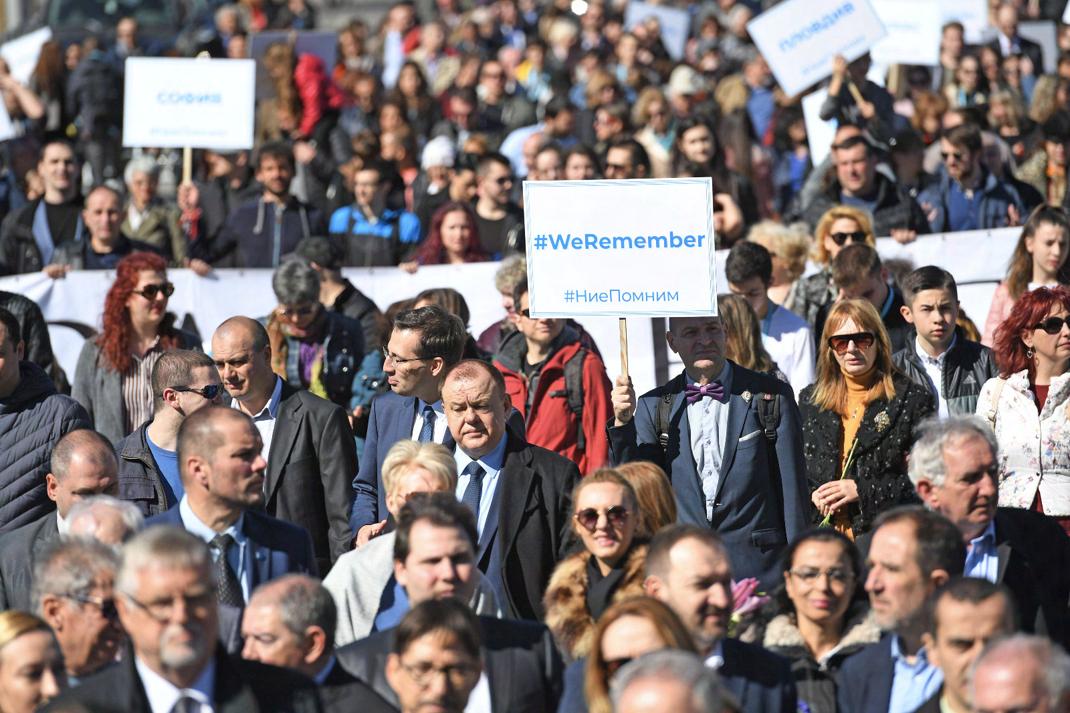


It is with great honour that we present the NOA Profiles, a collection of captivating stories of people, organizations, and initiatives that are contributing to an inclusive and democratic Europe and are fosteringJewishlife.
Through interviews and conversations, we have had the privilege of connecting with individuals from various sectors of societyandfromacrosstheEuropean continent.Fromactivistsandartiststo historians and faith leaders, each personweencounteredhasimparted profound insights and unique perspectives on how to support Jewish life and create inclusive societies.
We want to express our deepest gratitude to the remarkable individuals and organizations that generously shared their experiences withus.
Your authenticity, passion, and personal journeys are beacons of inspiration, igniting a sense of hope and possibility in the hearts of those whoreadyourstories.
We invite you to join us on this remarkable journey. Thank you for beingpartofourmission.
TheNOATeam
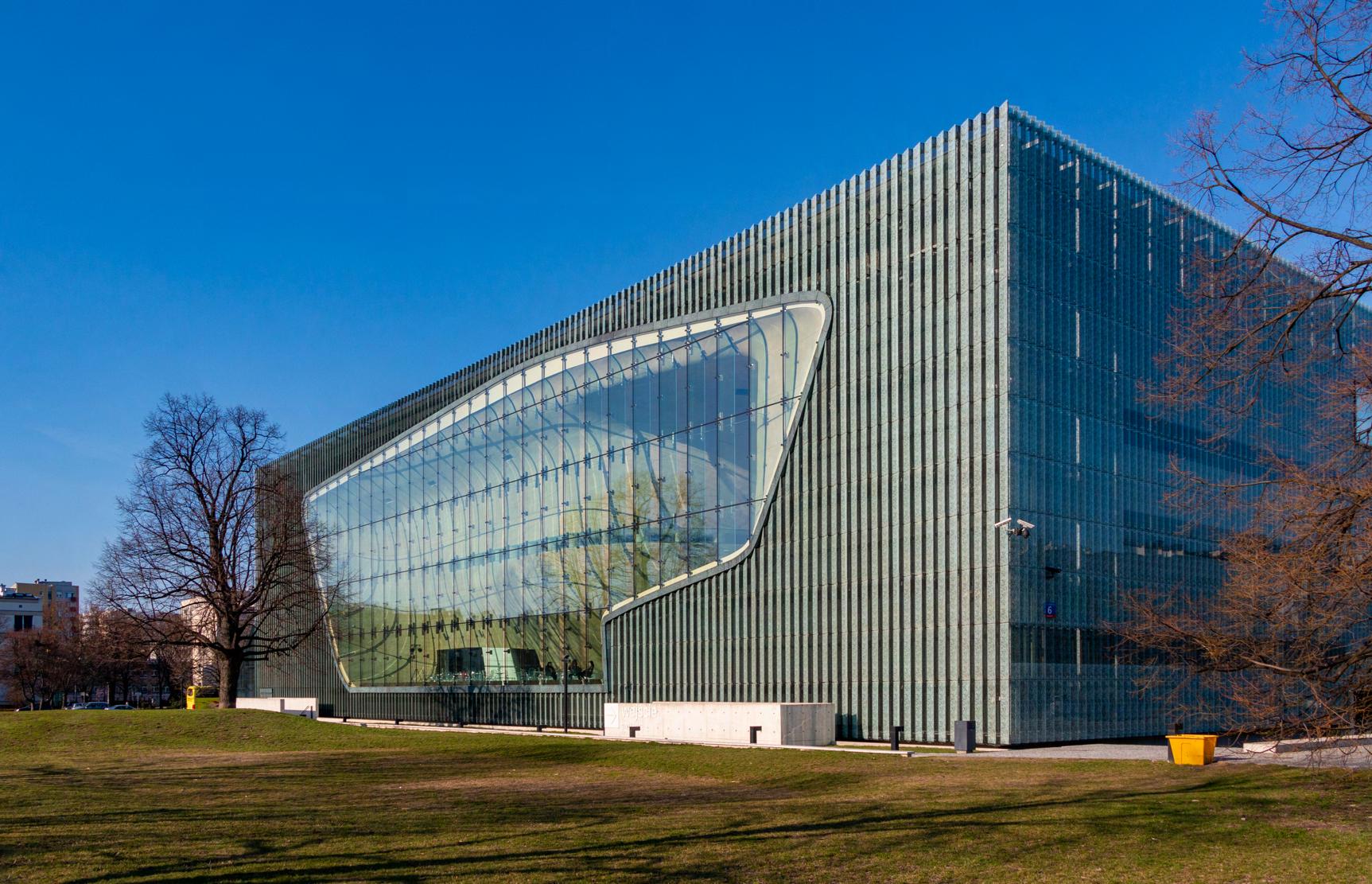
Opened in 2013, the POLIN Museum of the History of Polish JewsinWarsawoffersathroveof knowledgeabouttherichhistoryof JewishlifeinPoland.
Locatedinwhatusedtobetheheart of the Warsaw Ghetto during Nazi Germany’soccupationofPoland,the POLIN Museum is one of the most importantinstitutionsinthefieldof JewishhistoryinEuropetoday.
Fewer than 10,000 Jews live in Poland,yetbeforetheHolocaustthe country was home to one of the largest Jewish populations in the world.
NOA spoke with Joanna Fikus, the HeadoftheExhibitionsdepartment of the POLIN Museum, about their work showcasing 1,000 years of PolishJewishhistory,whilebuilding amoretolerantsociety.
NOA: How do you decide where to begintellingthestoryof1,000years ofJewishhistoryinPoland?
JK: We decided to tell this history fromaspecificperspective–fromthe perspectiveofJewslivingineachtime period.Wechosetoshowitinaway that would make our visitors feel as thoughtheywereinthesameposition of Jews back then, to imagine you have the knowledge limited to that very specific time period, to identify withtheindividualpersons.
Withourtemporaryexhibitionswedo itdifferently.Everytimewechoosea subject, we are trying to find something universal about the experience.Inanexhibitionaboutthe antisemitic campaign of March 1968, we thought: How can we make this relevant to a young person today? Stepbystepwecreatedtheessence ofourmessage:Howwouldyoufeel ifsomeonecametoyouandtoldyou
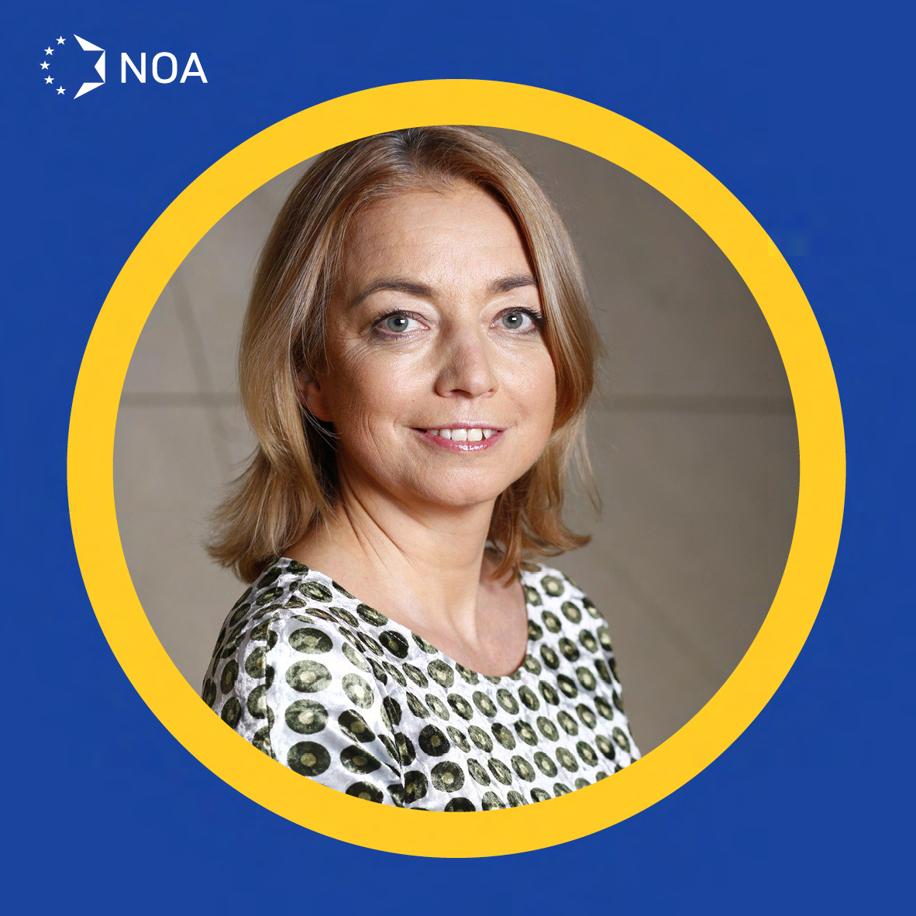
that you are a stranger in your own home, your own country, that you don’t belong here? In March 1968 Jews were simply told they don’t belonginPoland.Andtherearemany othercasesintheworldwherepeople are forced to leave as refugees. Unfortunately, it’s a common experience.
NOA: What has changed in Polish societyinthelast10yearssincethe POLINmuseumopened?
JK:Inthefirstyearsofthemuseum’s operation, our focus was really to bring back the history of Jews in Poland,becausethishistorywasquite unknown among young Polish audiences. After several years we decided to be more ambitious. Why do we want to recall the history of PolishJews?Tocounterantisemitism, discrimination, and exclusion by creating mutual understanding and respect. 6
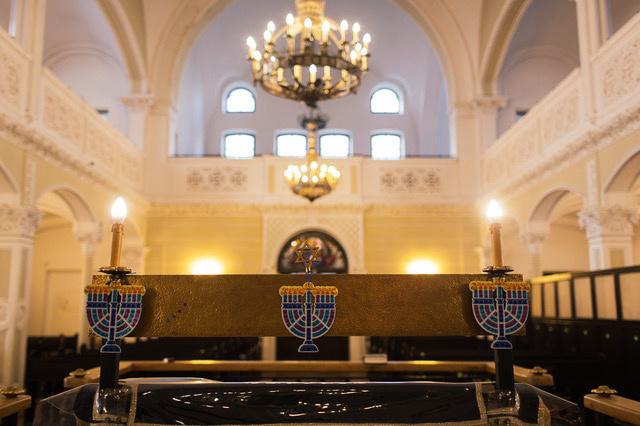
Some people were afraid to come here. Afraid to deal with a difficult subject, they were not ready to be confronted with it. As a result, we have diverse activities for them: Musical concerts, educational programs for kids and parents. We wantthemtocomehereandseethis is not only a museum talking about theHolocaust.Oncewebringthemin and make them more familiar, and willing, and open, then it’s easier to discussthedifficulttopics.
NOA: What has surprised you the most?
JK: I didn’t expect how many people would be interested in the subject that we are dealing with. In Poland withthiscurrentpoliticalsituation, itisdifficult.Wearenotopentoblunt
conversations about dark and bright moments in our history. It’s hard to change the mindset of other people. Butwethought,whowilldothisifnot us?
NOA: Did the war in Ukraine bring changesforthemuseum?
JK:Ofcourse.Therewasahugewave of Ukrainian refugees who came to Poland and to Warsaw. We had to adjust our program and activities to theirneeds,toUkrainianwomenand children. Many of them are traumatized. We wanted to show themthisisasafeplace.
This place is also about their story, aboutthem.Historically,muchofthe storyofPolishJewshappenedonthe historicalterritoryofUkraine.

"You cannot change the past. The only thing that we can change, step by step, is the present moment. Each one of us can do it by being careful and thoughtful of the people around you. You don’t need big gestures. You simply must keep your eyes open, look not to hurt others, and help them. That’s the main lessons of this war in Ukraine."

TheEuropeanDaysofJewishCulture isoneofthemajorJewishfestivalsin Europe. A collaboration between a network of both Jewish and nonJewishinstitutions,takingplacein35 countries, the festival celebrates Europe’sJewishheritageandbringsit tothewiderpublic.
While in 2020 the festival was held online due to the pandemic, the EuropeanDaysofJewishCulturewas able to return to in-person events in September 2021. Victor Sorensen, one of the organizers, spoke about their2021festivalplans.
“2021isauniqueedition.Thecentral theme for the festival is ‘dialogue.’ Dialogue within the community, dialogue between generations, dialogue between cultures, dialogue between religions,” Sorensen explained.
“We’ve been working together on a veryinterestingjourney,withtheaim not only to present dialogue and its historical importance – dialogue as a partoftheDNAofJudaism-butalso with the opportunity of practicing dialoguenowadays.Ofcelebratingthe diversityofourcontinent.”
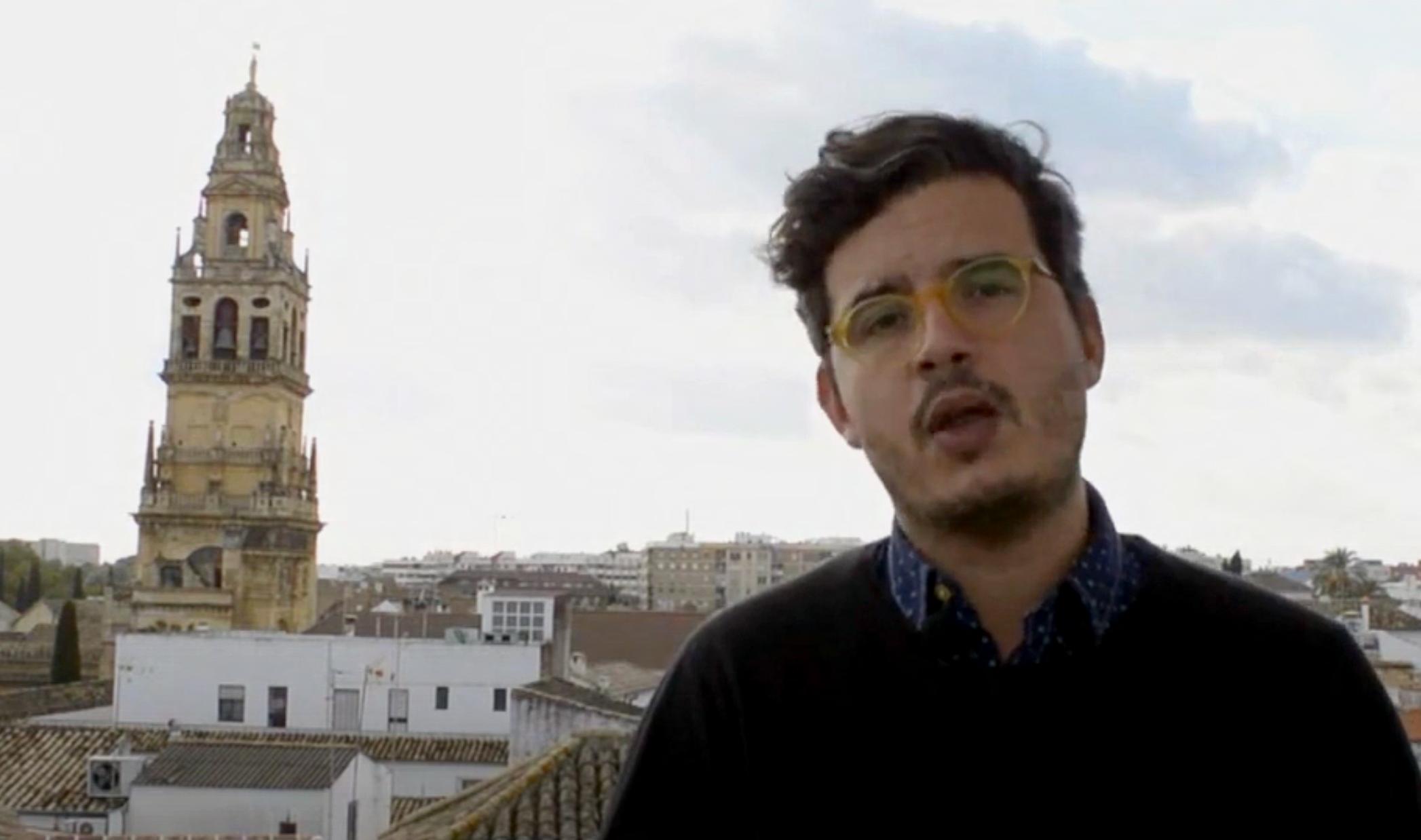
More than 500 years after the expulsion of its Jews, Jewish life is flourishing again in Spain. The southern European country is home to a Jewish community of some 30,000people.
RabbiHaimCasasisthefirstSpanishborn Progressive Rabbi, and works with Jewish communities in France, Spain,andSwitzerland.
“MyexperienceasaJewinthesouth of Spain, my experience as the first AndalusianrabbiinthesouthofSpain in 500 years, is very positive,” Rabbi Casas told the NOA project during a zoominterviewin2020.
Afterobtainingadegreeinlaw,Rabbi Casas committed himself to recovering Jewish life in Spain. “I’m veryoptimisticaboutthefutureofthe

JewishcommunityinSpain.Spanish peoplearerediscoveringtheirroots. And they are approaching the community. Either to study, sometimes to convert back to Judaism or to convert to Judaism. And I think that Spanish people in general will say that each day they feelmoreandmoreconnectionwith theSpanishJewishcommunity.”
In 2005, Rabbi Casas and others founded the Casa de Sefarad, a cultural center and museum in the Jewish quarter of Cordoba. He also opened Casa Mazal, a cultural café devoted to Sephardic gastronomy. Andheisthefounderanddirectorof Makom Sefarad in Seville, which facilitates interactions between Jewish visitors to Spain with local Jews.

“Living in a diverse society can offer us an opportunity for growing together. It is a challenge, but it is worth it,” Rabbi Casas says. “Jews, non-Jews. Let’s create together a betterSpain,abettersociety,abetter world.”
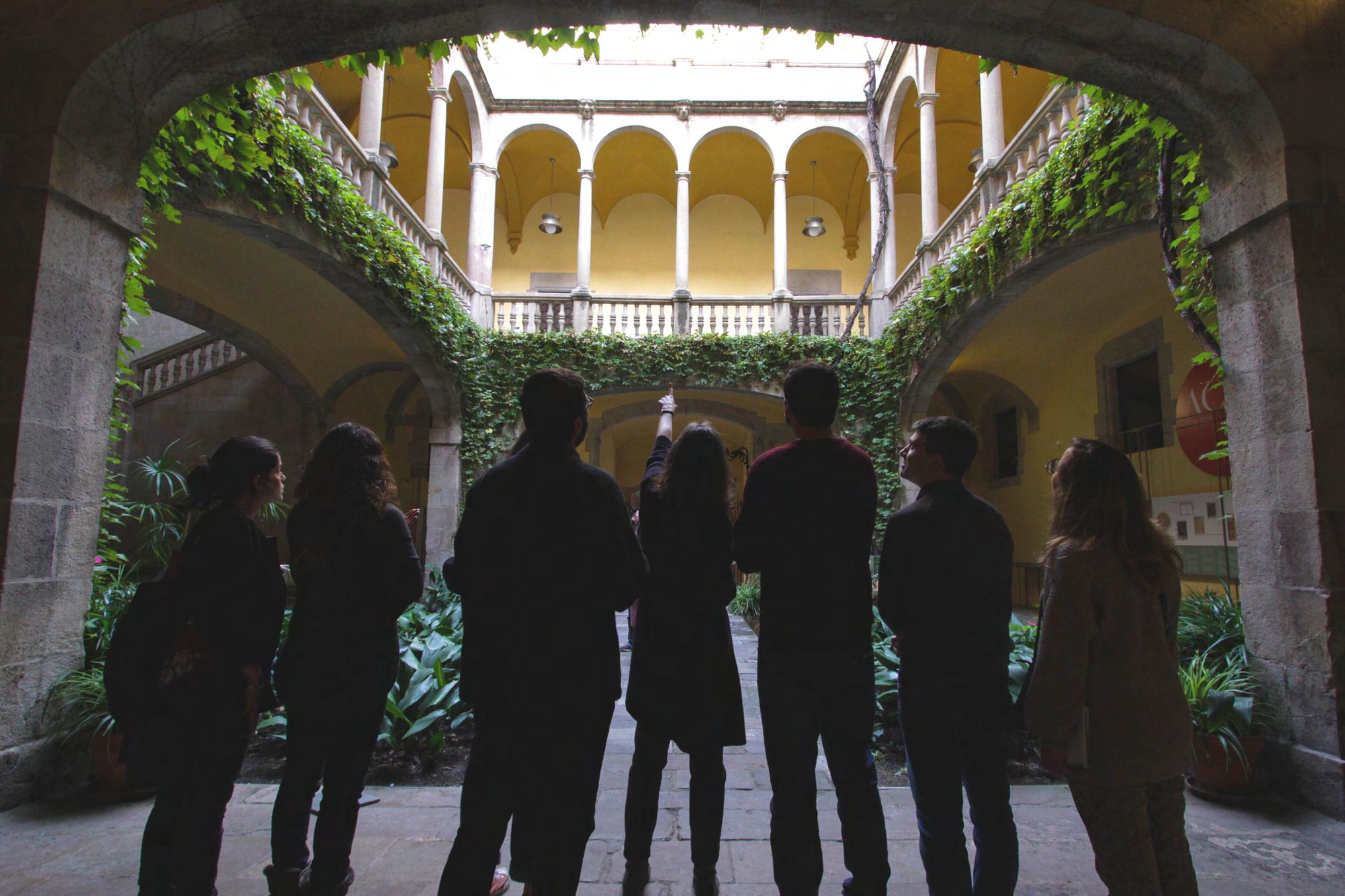
Barcelona’s Mozaika magazine started in 2009 as a project initiated by a group of Jewish friends. Through their self-published magazine, they wanted to share and preserve the history and culture of Catalonia’s Jewish history, while also overcoming a legacy of silence which the Jewish community faced for centuries.
Ontopofthemagazine,Mozaikahas grownintooneofthelargestJewish culturalorganizationsinBarcelona.
TheyhavepopularizedJewishculture, bringing it to a wider audience with literature, art, history, and more. “If you keep your identity private and hidden,it’slikeitdoesn’texist.Weare not ashamed to be Jewish. We are here to stay,” says Mozaika cofounderManuValentin.
Among their activities is organizing ‘Sefer,’ Barcelona’s Jewish book festival. Mozaika’s ‘Toldot Barcelona’ projectrunswalkingtoursshowcasing the places which were crucial in the city’sJewishhistory.
Theyholdsmallcommunaldinnersin private homes featuring different Jewish cuisines, where participants, many of whom are not Jewish, learn aboutthehistory.
The Salam Shalom Barcelona initiative, founded in 2016, unites members of the Muslim and Jewish communities through interfaith dialogue.Theirfirstpubliceventwasa joint celebration of Rosh Hashanah andR’asas-Sanah.

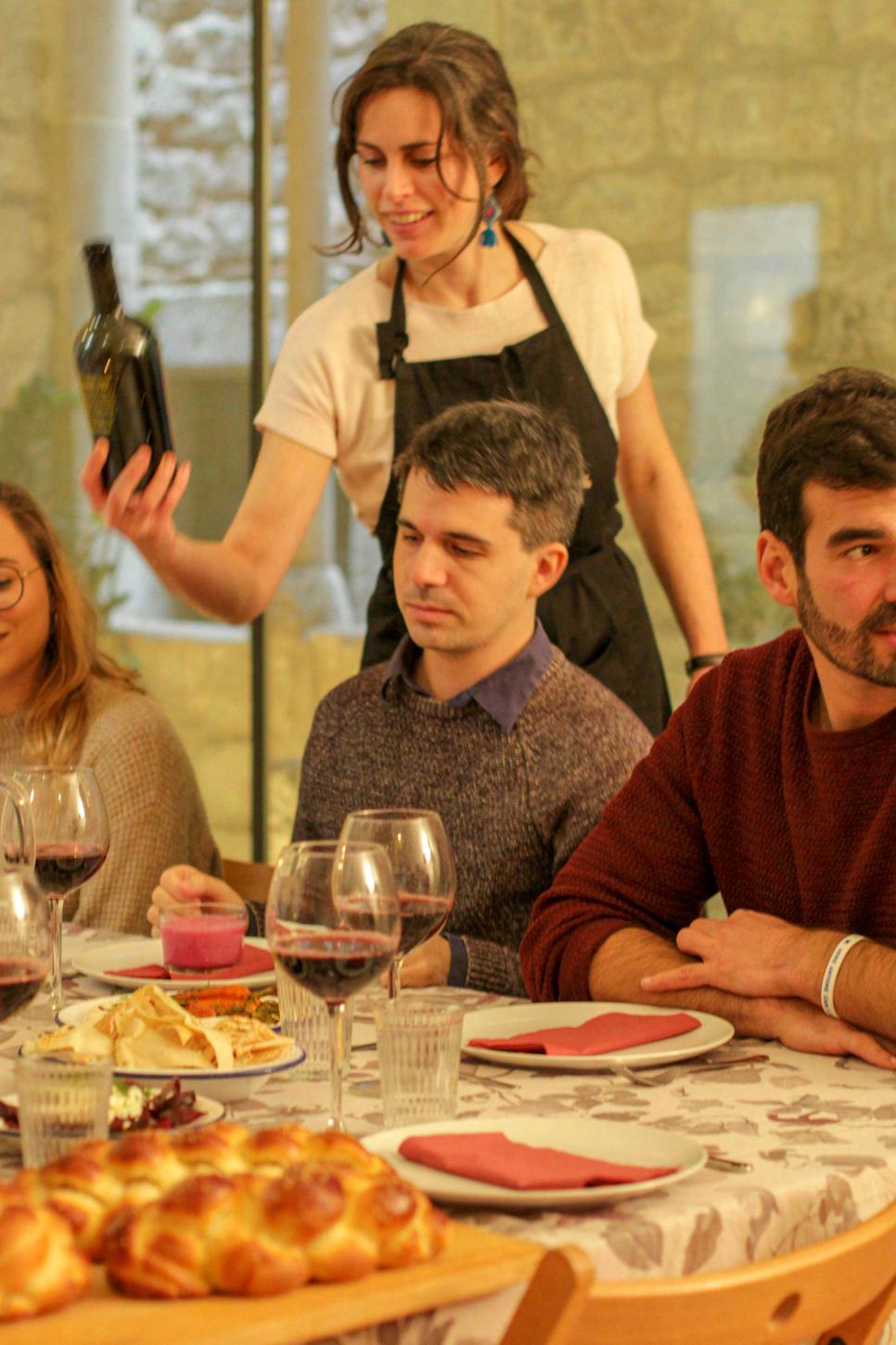
Their goal is to showcase that both cultures have much in common, as well as much to offer to Catalan society. “There are many challenges wehaveasJewsinEuropetoday.The abilitytoworktogether,regardlessof religious denomination, is fundamental,” says Mozaika cofounderVictorSorenssen.

Portugal expelled its 70,000 Jews in 1497. But today, the Portuguese Jewish community is enjoying a Renaissance with synagogue restorations and new museum openings.

About 6,000 Jews reportedly live in Portugal today, split between the country’s two largest cities, Lisbon andPorto.Some are descendants of Morranos, those who secretly continued to practice Judaism after theexpulsion.
Jewsbegantricklingbackinthe19th century, first from Gibraltar and Morocco, then from Eastern Europe. During WWII, Portugal played an importantrole,asthousandsofJewish refugees passed through the country for its ports, attempting to leave Europe.
In 2012, the government allowed descendants of expelled Jews to reclaim Portuguese citizenship. And sothelastdecadehaswitnessed
wasrenovated;aJewishmuseum,and most recently, a Holocaust museum have opened, vowing to fight antisemitism and intolerance in Europe. The Porto community also has an ecumenical approach to relating to their non-Jewish neighbors. They focus on education and outreach, including working on joint projects with the Catholic dioceseandMuslimcommunities.
Amongsomeuncertainties,thefuture of the community holds great potential. “Two millenia of Jewish history in Portugal taught that Jews shouldnotgiveuptheirsecurity,”says Gabriela Cantergi, Board Member of the Porto Jewish Community.” Nor “theteachingoftheirhistorytoothers thanthemselves.”
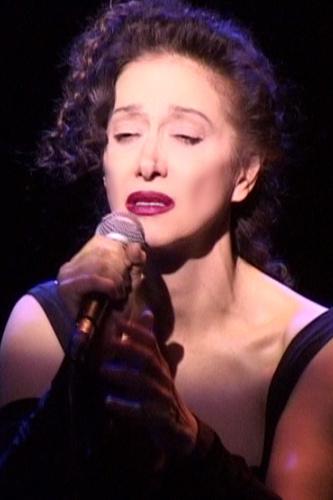
After France’s colonies gained independence after WWII, almost 250,000 Sephardic Jews emigrated, often to Israel, but also to France. Jews from Morocco, Algeria, and Tunisia have turned 21st century France into the home of the world’s third-largest Jewish population – and injected the country with renewed cultural, commercial, and political energy.
On November 30th, we commemorate the plight of these Jewish refugees from the Middle East and North Africa. On that occasion, consider a few FrenchJewishsuccessstories.
Begin with Algerian-born Jacques Attali.Aneconomist,writer,political advisor, and civil servant, he served asacounselortoPresidentFrançois Mitterrand from 1981 to 1991 and launched the European Bank for Reconstruction and Development. Outside of politics, he’s a prolific author writing essays, novels, biographies, memoirs, and even children’sstories.
On a musical note, listen to Sapho [pictured above], a singer born in Marrakesh as Danielle Ebguy. She emigratedtoFranceattheageof16 and helped bring North African soundsintotheFrenchmainstream, singing in French, English, Arabic, Spanish,andHebrew.
Other Sephardic Jewish singers include jazz pianist Frank Ansellam, born in Oran, pop singer Patrick Bruel, originally Patrick Benguigu, and DJ David Guetta, son of a MoroccanJewishfamily.
Many of the country’s most distinguished philosophers and literarycriticsdrawtheirrootsfrom NorthAfrica.

Algerian-born Helene Cixous and Jacques Derrida created deconstructionism. Bernard HenriLevy, born in 1948 in Beni Saf, Algeria, became the quintessential activist philosopher, launching the “Nouveaux Philosophes” (New Philosophers) movement of the activist thinker engaged in pursuing social justice for, among others, BangladeshisandKurds.
When Jews think of France, they often focus on terrorism, antisemitismandaliyah.Theyshould addanotherjust-as-importantfocus: Success.

It’s a running American joke: Without Jews, there would be little laughter. It now has become a French joke, too, as Jewish immigrants to France are generating chuckles.
Its leading proponents include Michel Boujenah (center), Yvan Attal (right), andGadElmaleh(left).AllareofNorth African origin. Boujenah comes from Tunisia, Attal has Algerian roots, and Elmaleh was born and raised in Morocco.
French comedians play the anxiety of being a rootless outsider. Boujenah’s firsthitwashisone-man-showbackin 1980called‘Albert,’whichdrewonhis Jewish Tunisian origins and his experienceleavingtheserootstosettle inFrance.Oneexampleofhishumor: Afterpraisinghiswifeof25yearsfor her cooking as “my dream,” his friend asks why he continues to heap such generous praise on her. “Because I forgotherfirstname,”heresponds.
Elmaleh became a star in France for playingcharacterssuchasChouchou,a NorthAfricantransvestite,andCoco,a Sephardic businessman who alienated hisfamilywhileplanninghisson’sbar mitzvah.

FilmmakerAttalscoredabighitwith his spoof about French antisemitism “TheyAreEverywhere.”Inthefilm,he pokes fun in a series of sketches skewering antisemitic myths, such as “Jews killed Jesus,” “Jews have money,” and “Jews play up the Holocaust.”
In recent years, Jewish French and American humor has merged –literally. “They are Everywhere” is nowavailableonNetflix.Soarethree of Elmaleh’s shows. He moved in 2015 to New York. “I’m sure you’ve heard this story about the man that moved to America with one dollar in hispocketandheworkedsohardand hemadeafortune,”hesays.“Imoved here with a fortune.” His breakthrough American performance, appropriately, came on Jerry Seinfeld’s show, “Comedians in Cars Getting Coffee,” with Seinfeld and Elmaleh driving around in a 1950 Citroënandtradingjokes.

In Budapest, Hungary, blind Jewish musician Tomi Juhász is a role model in many ways, demonstrating that culture plays an important role in inclusion and activism.
THIS NOA PROFILE WAS CREATED FOR JEWISH DISABILITY AWARENESS, ACCEPTANCE, AND INCLUSION MONTH, WHICH OCCURS IN FEBRUARY, TO RAISE AWARENESS AND FOSTER INCLUSION OF PEOPLE WITH DISABILITIES.
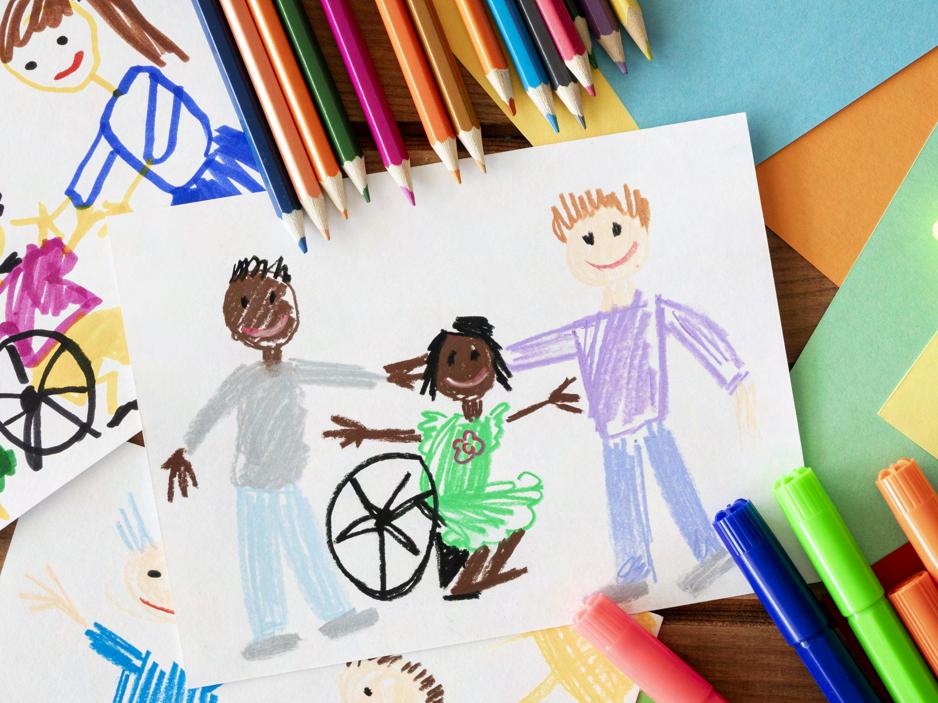
Aguitarist,singer,andwriter,Juhász has been performing in a klezmer group for several years. Juhász says his experiences growing up in Budapest's Jewish community – and the interpersonal exchanges of culture and religion – greatly affect his music-writing, with a sound that mixes new-wave, alternative rock, andfolk.
The group, called Juhász Tomi –Vaklárma (or ‘Tomi Juhász – Blind Noise'), sings about the problems of their generation, about love, finding one’s way, and acceptance –something which Juhász says he knows a lot about through his blindness. An avid writer as well, the themes of Juhász's novels have also centeredonJewishidentity.
But perhaps most importantly, Juhászsaysamaingoalofhismusic andtheband’spublicplatformisto raise awareness of pressing social andpoliticalissuesinthecountry.
“These are the things that I am surrounded by,” he explains. They have advocated for environment and climate protection in Hungary, encouraged their followers to join them in community service activities, and raised money for projects that are helping people with disabilities. Juhász wants his listeners to understand the importance of facing the problems that are in front of them: “Learn frommistakes,andfromhistory,to avoidrepeatingit.”

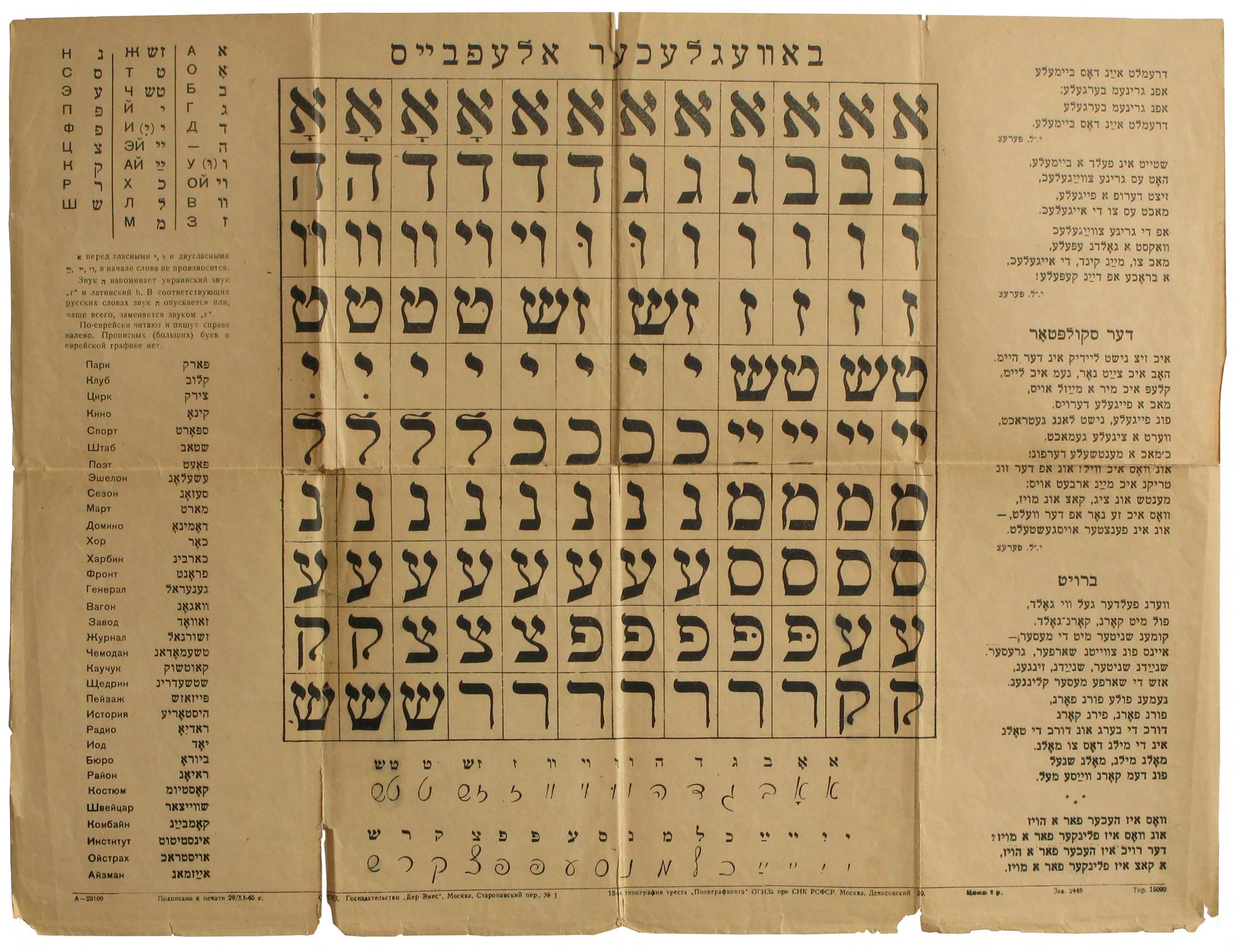

This is how one country in northern Europe has gone on to become a large producer of contemporary Yiddish content.
In 1999, Yiddish was declared an officialnationalminoritylanguagein Sweden.
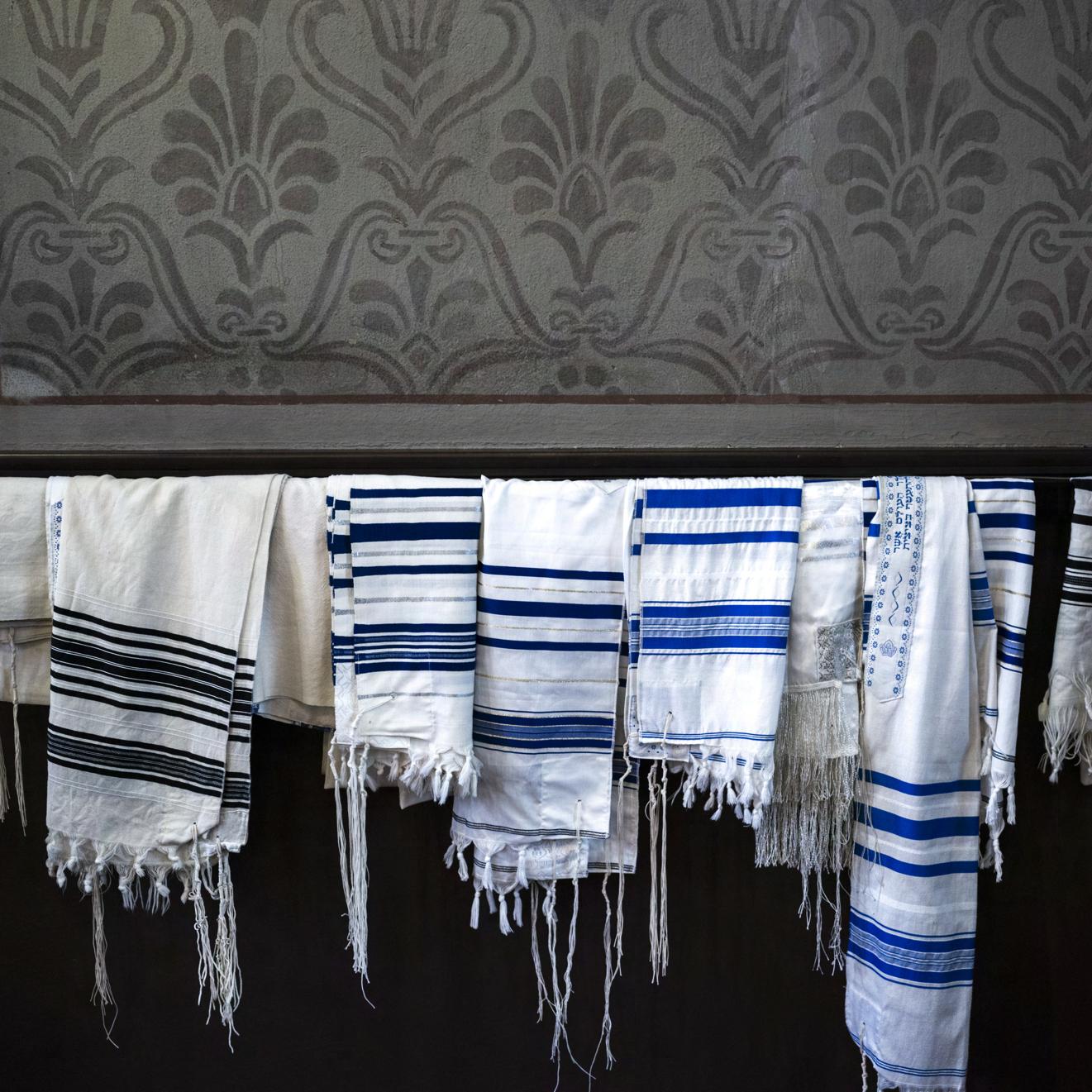
It’s been spoken there by Ashkenazi Jewsforhundredsofyears.Thereare 20,000 Jews living in Sweden today, and,accordingtoestimates,between 1,500 and 3,000 Jewish Swedes are nativeYiddishspeakers,mostofthem elderly. The official status given to minority languages assures that Yiddish speakers can conduct government business in their native language.
Sweden also offers Yiddish-language courses in universities, supports Yiddish language TV and radio programming, including a focus on children’s programming, and book publishers are creating media in Yiddish.
Malmo-based journalist Thomas Lunderquist produces a monthly Yiddish-language radio show for Sverige Radio, the national radio channel,whichexploreslittle-known connectionsinYiddishlanguageand culture. Sweden’s state television previously produced a four-part travelserieswhichfollowsYiddishist TomasWoodskiashetravelstofour cities(Bucharest,TelAviv,Paris,and London) and talks to local Yiddish speakers.
There are also Yiddish-language versions of well-known Swedish children’s shows. The Sveriges Jiddischförbund, Sweden’s largest Yiddish cultural organization, released a series of music videos teaching Yiddish songs to children, alongwithYiddishvocabulary.

Georgia is a multiethnic country in the South Caucasus, home to different ethnic groups and religions. But with high levels of intermarriage and assimilation, Georgia's Jewish community is dwindling in size.
TODAY
AN ESTIMATED 2,600 - 6,000 JEWS LIVE IN GEORGIA, MANY OF THEM ELDERLY.
ThroughHillelTbilisi,theGeorgian branch of the global student organization, KetiChikviladzeand herpeersareworkingtorebuildan activeyoungJewishcommunity.
In Tbilisi, members of the organization are helping young people reconnect with their Jewish roots. Keti and her friends host regular Shabbat dinners, Jewish history and culture talks, heritage trips,aswellasgroupenvironmental clean-ups.
“Iwas16yearsoldwhenIfirst‘met’ the Jewish community,” Chikviladze told the NOA project during an interview in the Georgian capital TbilisiinOctober2021.
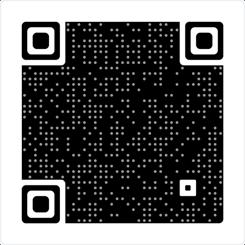
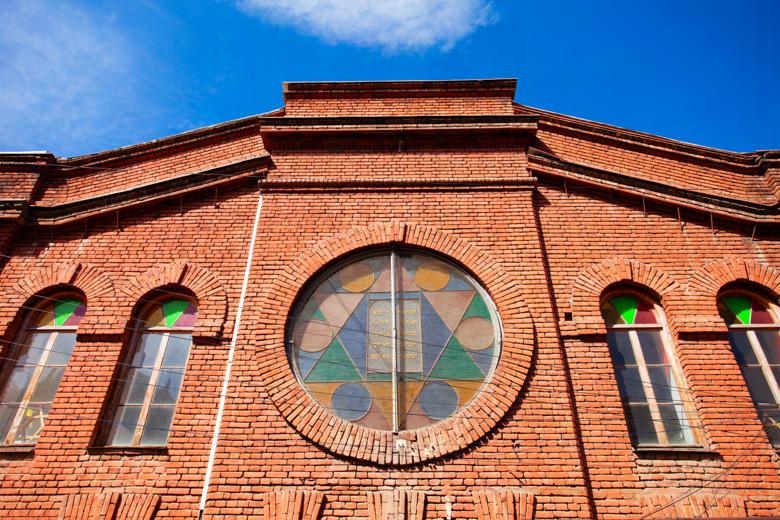
"Before that, I only knew that my grandmaisJewish.Athomemy motherwouldsaythatourgrandma isJewish,butmygrandmaherself wouldn’ttalkaboutthatmuch.”
“We have many young people who hadnoideaabouttheirJewishroots.
In Hillel, they saw and learned for thefirsttimewhatisShabbat,what isPesach,RoshHashanah.Theysaw everythinghere.”
The group is creating young Jewish leaders who are active in Georgia's diversesociety.
“Unfortunately, Jews are hugely assimilatedinGeorgia,andmanygo toIsrael,”Chikviladzecontinued.
“Ihopeverymuchthatwiththehelp ofHillel,wewillplantthisimportant seed in young people, which they will pass on to their kids, and their kids,andsoon.”
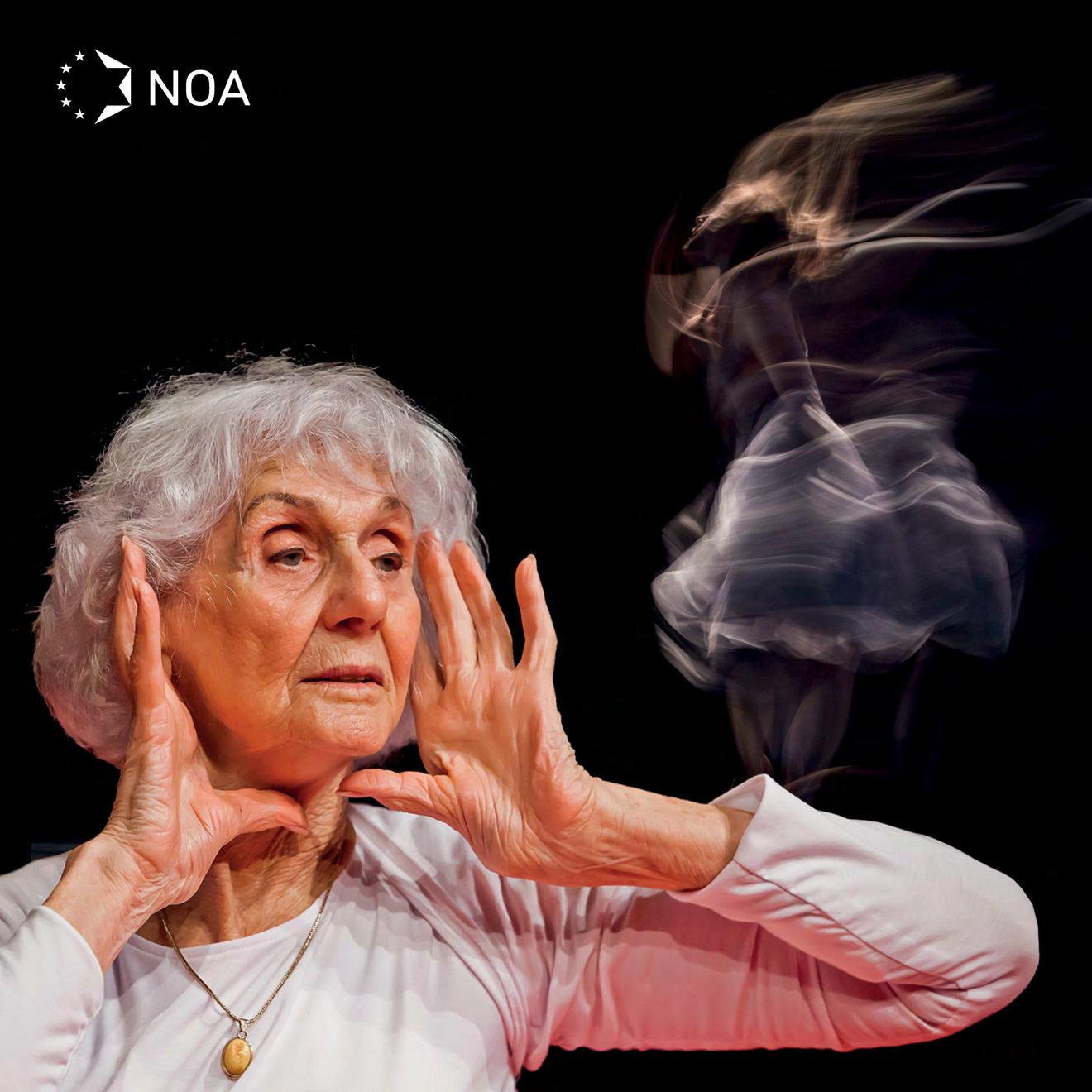
Eva Fahidi was 18 years old when she was deported to Auschwitz with her family from their home city of Debrecen, Hungary. Her mother, father, and younger sister perished there. In recent years, Fahidi has become outspoken in expressing what happened in the Holocaust, using dance as her medium.

Fahidi's performance, “Sea Lavender or The Euphoria of Being,”aduetwithdancerEmese Cuhorka, who is 60 years her junior, premiered in 2015. The title was inspired by a plant that cangrowinpoorsoil,symbolizing Fahidi’s difficult life. The duo performed altogether 95 times in Budapest,aswellasinothercities inEuropeincludingVienna,Berlin, Weimar, Stadtallendorf, Subotica. It was Fahidi’s first time performing in front of an audience. “All my life, I knew it [dance]wasawayIcouldexpress myself best of all,” Fahidi explained in an interview with DW.
For decades, Fahidi was silent, unabletospeakaboutherterrible memories from the Holocaust era.
But a 2003 visit to the notorious death camp where she lost her family pushed her to put pen to paperandwritehermemoirabout herinterruptedyouth.
Fahidi also advises several Holocaust memorial foundations, and has spoken before parliamentarians at the German Bundestag. A 2020 Hungarian documentaryfilmaboutherdance performance, “The Euphoria of Being,” won multiple international awards.
Now, Fahidi’s goal is to reach young audiences, at a time when populismisrisingagaininEurope. “Ibelieveinyouths,”shesaid.“My generation made so many mistakes. The young generation should learn a lesson from our mistakesandexperience.”

90,000 Jews lived in Latvia before the German invasion during WWII. But only 200 Jews survived the HolocaustonLatvianterritory.
As a teenager, historian Marģers Vestermanis was imprisoned in the Riga ghetto with his family. He was the only one of his family to survive theRumbulamassacrein1941,when theNazisandtheirlocalcollaborators shot over 25,000 Jews from the ghettointhenearbyRumbulaforest.
When the Riga ghetto was liquidated, Vestermanis was sent to several concentration camps. He escaped a death march and joined partisangroupsintheforest.Today, Marģers Vestermanis is one of the last Holocaust survivors in Latvia. Born in Riga in 1925, he has dedicated his life to education and documenting Latvian Jewish history and culture. He has received numerousawardsforhis work
"Peace is the main thing that our ancestors were dreaming of, and that we, the generation that went through all the flames of hell, bequeath to the entire world."

in Holocaust research and remembrance, including the Austrian Holocaust Memorial Award and the Order of the Three Stars, Latvia’s highest honor. The 2022 Latvian documentary film, ‘Mēs tikai tagad sākam’ (‘We are just getting started’), tells his story ofsurvivalandlooksathowhe madelivingpossibleaftersuch traumatic experiences. Mr. Vestermanis is considered nothing short of a living treasureinLatvia.
LikemanyHolocaustsurvivors, those who suffered the worst are often the first to advocate for tolerance. “Peace is the main thing that our ancestors weredreamingof,andthatwe, thegenerationthatwent
through all the flames of hell, bequeath to the entire world,” hesays.
After WWII, Vestermanis received a PhD in history and worked in the Latvian state archives,buthewasfiredafter writingaresearchpaperabout the Holocaust – during a time when the topic of Jewish suffering was highly censored by the Soviet authorities. He continued his career as a high school teacher. Soon after Latvia gained independence from the Soviet Union, Vestermanis founded the “JewsinLatvia”museum.Even now in his late 90s, he is writing a book about those who saved Jews during the Shoah.
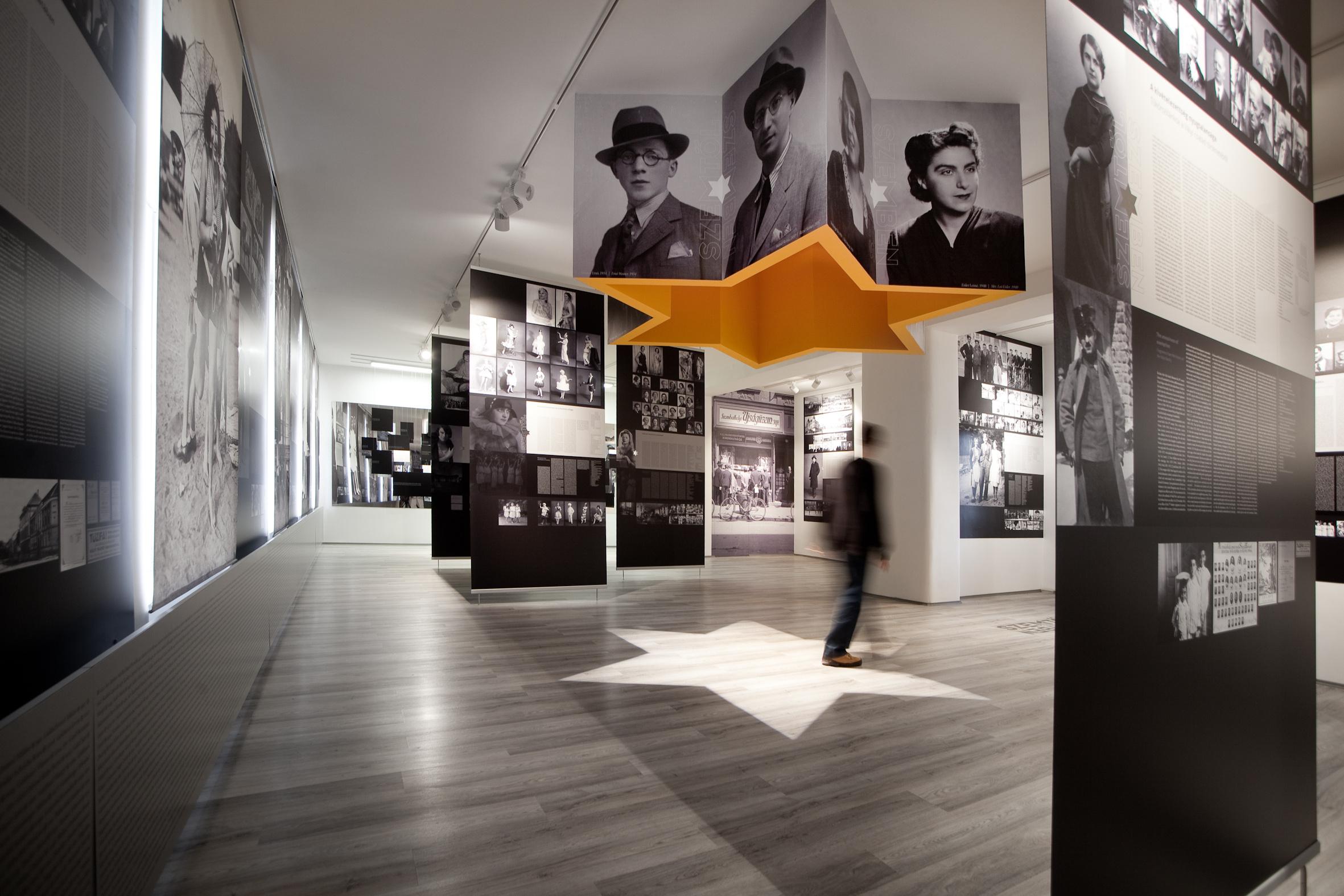
In July 1944, nearly 3,000 Jewish citizens of Szombathely were crammed into wagons and deported to Auschwitz. Only 300 returned after the war.
Today,apermanentphotoexhibition in the town, “Eye to Eye,” gives insightintotheeverydaylivesofthe Jews of Szombathely, and attempts torendertangiblethevoidthatwas leftbytheHolocaust.
The story behind the discovery of photos is remarkable in itself. Hungarian historian Krisztina Kelbert foundanarchiveofforgottenphotos documentingJewishcommunallifein the1930s.
Consisting of over 20,000 glass negatives,shewasabletomatchthe identities of the people in the negatives with the archives. Kelbert worked with the Hungarian Jewish community, the Szombathely municipality,andtheSavariaMuseum to exhibit the photos. Perhaps most importantly, students are taken on school trips to visit the exhibition, where they are encouraged to ask questionsandlearnabouttheJewish community’spastandpresent.
Symbolically, the exhibition is hosted in the former classrooms of the NeologJewishPrimarySchool,where generations of Jewish students studied.

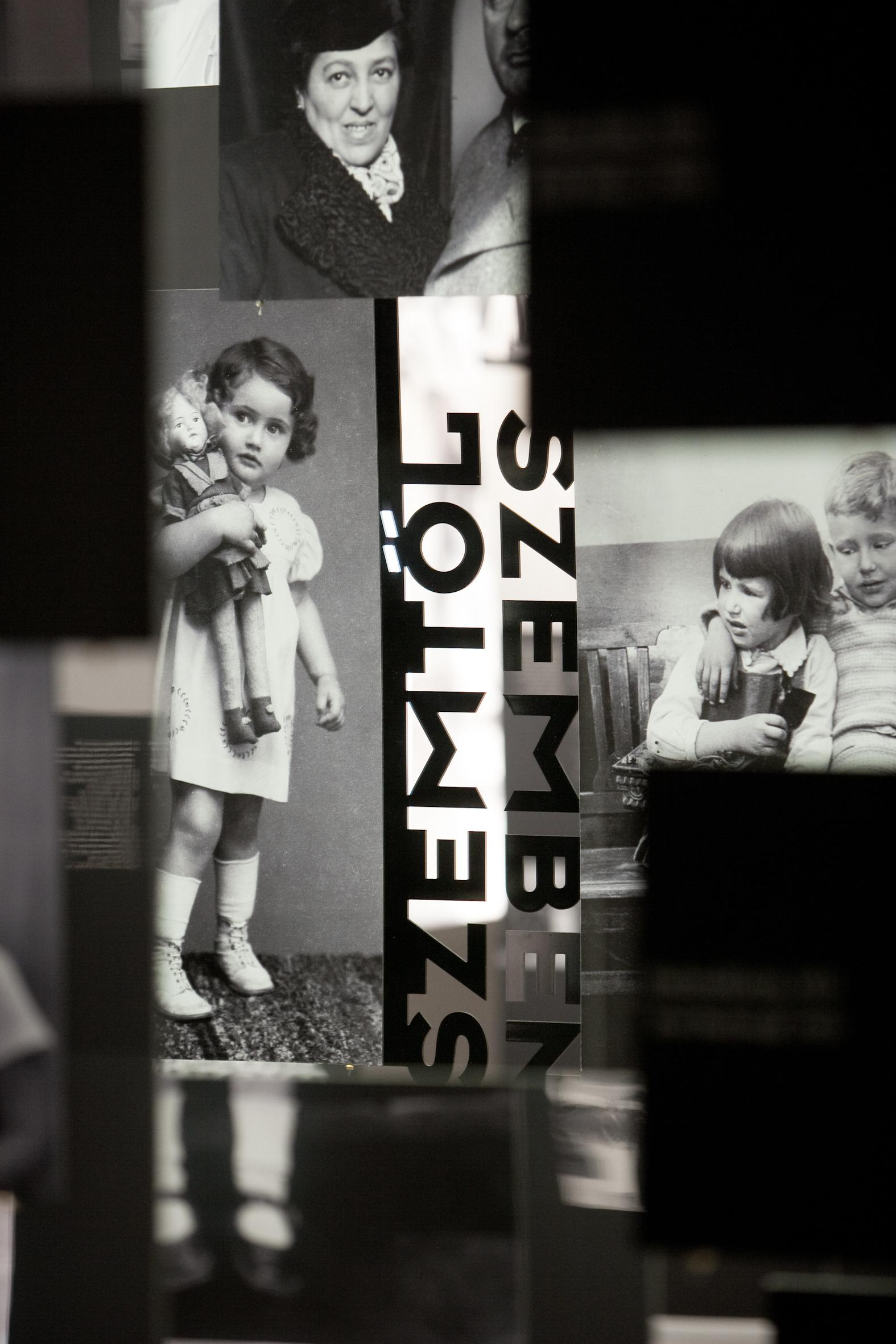
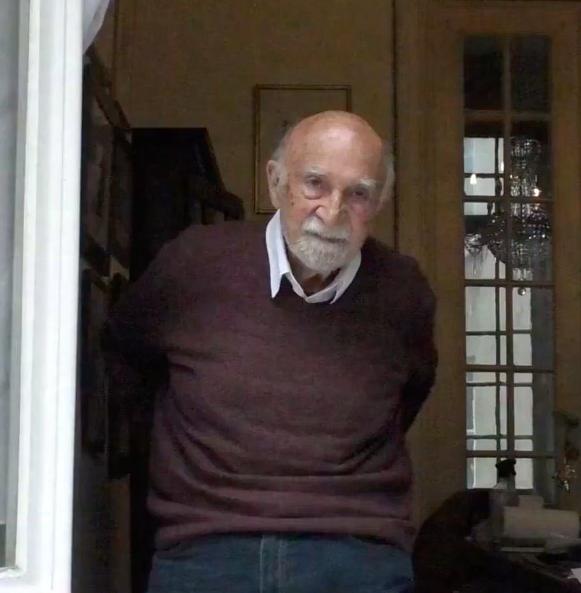
When the COVID-19 pandemic forced everyone inside, Holocaust survivor Simon Gronowski lifted his spiritsbyopeningthewindowofhis Brussels apartment – and playing pianofortheneighborhoodtohear.
The NOA project had the honor of meeting with Mr. Gronowski in May 2021.“MydaughterKatiasaidtome onedaythatsheseesthatIamdown becauseofthelockdown.
Shetoldme:‘Dad,openthewindow, and play for the neighbors, for the passers-by. It will lift their morale. Andyourstoo.’”
InMarch1943,an11-year-oldSimon GronowskiwastakenbytheGestapo inBrussels,Belgium,togetherwithhis mother Chana and sister Ita. The youngJewishboywasbeingdeported to the Nazi concentration camp Auschwitzwhen,“byamiracle,
"To defend today’s freedom and democracy, we must be aware of yesterday’s evils... I tell young people: 'Never forget, long live peace and friendship between men."

I jumped from the train and escaped,” he recounts. His mother and sister died in Auschwitz,andhisfather,Leon, leftdevastatedbytheirdeaths, also passed away within monthsoftheendofthewar.
The young Gronowski was left aloneintheworld.
“I adored my sister. She was a great classical pianist. And she loved jazz. So after the war, thinking of my sister, I started playing the piano. And I became a jazz pianist,” Mr. Gronowskisaid.
During the first lockdown in Belgium,Mr.Gronowski,then
90 years old, opened his apartment’s ground floor window every evening and let his fingers move. Neighbors opened their windows and clapped in approval. The New York Times featured his impromptu concerts, and the New Orleans jazz group Tuba Skinnyarrangedtoplayazoom concertwithhim.
SimonGronowskihasimportant wordstoimpart,asrecordedin previous interview: “To defend today’s freedom and democracy, we must be aware of yesterday’s evils…. I tell young people: ‘Never forget, long live peace and friendship betweenmen.”
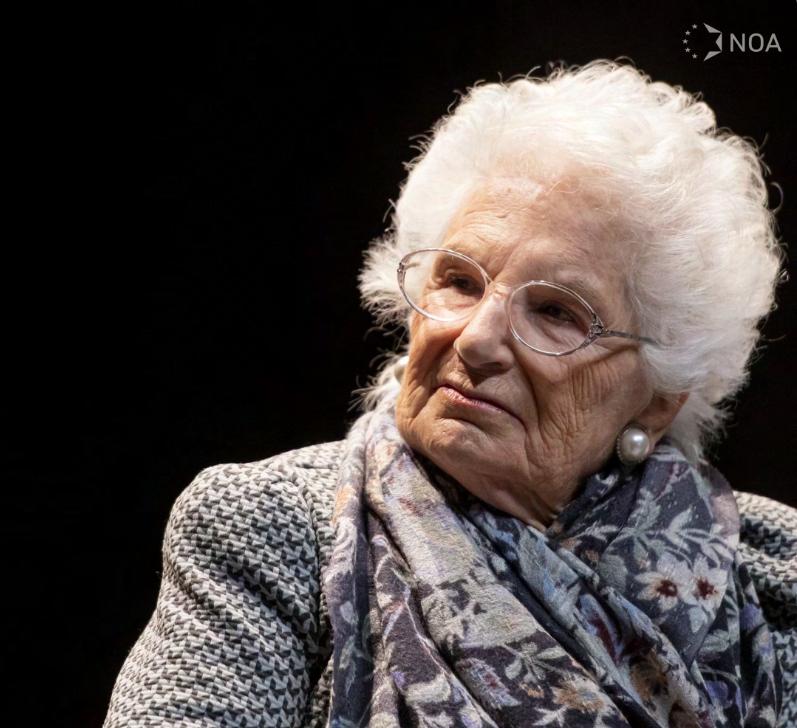
Nonagenarian Liliana Segre is one of Italy’s most active and vocal Holocaust survivors. She has been speaking publicly for decades at schools and events about her experience during the Holocaust, warning about the dangers of hatred.
In2018,Segrewasawardedthetitle of ‘Senator for Life’ by Italy’s prime minister for her efforts. That year marked the 80-year-anniversary of when racial anti-Jewish laws were passedbyMussolini’sItalyin1938.

Withthecoronaviruspandemic,Segre encouraged others to overcome vaccine skepticism and to get vaccinated. But because of her position, she became the target of online antisemitic attacks, and is underpoliceprotectionsince2019.In response, Segre spearheaded an initiative to create a parliamentary committee tasked with fighting hate, racism,andantisemitism.
It is a warning she understands from herlife’sstory.Segreisoneofonly25 Italian child survivors of Auschwitz.
Born in Milan in 1930, Segre was deported in January 1944 together withherfather.Theywereseparated upon arrival, and she never saw her fatheragain.
Segre’s early experience has marked herapproachtoherfellowman.“We need to think of those millions of people in the world today who are hungry - and knocking at our door,” shesaid.


Eric Mark was a “secret listener.”
Along with other German-speaking émigrés, he worked for British intelligence during WWII, eavesdropping on the conversations ofimprisonedGermangenerals.
Eric passed away in 2020 at the age of98,thelastofthelistenerstoleave us,andleavingalegacythattestified to the horrors and happiness of Jewishlifeoverthepastcentury.
Born in Magdeburg, Germany, Eric remembered clearly the hyperinflation of the 1920s, his parents’ anxiety at Hitler’s rise to power, the forcedclosureofthefamilybusiness, and his parents’ struggle to buy enough food after Jewish bank accountswereblocked.
Evictedfromhisgrammarschoolasa Jew, Eric’s parents sent him away in 1935toobtainaneducation.Hesaw hisparentsjustoncemore,duringthe 1936 summer holidays. In 1943, the Nazis sent them to Treblinka and gassedthemonarrival.
When the UK joined the Common Market in 1973, Eric joined the European Commission. He soon acquired fluent French on top of his English, Dutch, and German. He workedasatransporteconomistand directed a Common Transport Policy unit. In this role, he improved road safety, imposing speed limits and flexible motorway crash barriers throughoutEurope.Hisachievements include regulations requiring compulsoryseatbelts,themutual
Born in Magdeburg, Germany, Eric remembered clearly the hyper-inflation of the 1920s, his parents’ anxiety at Hitler’s rise to power, the forced closure of the family business, and his parents’ struggle to buy enough food after Jewish bank accounts were blocked.
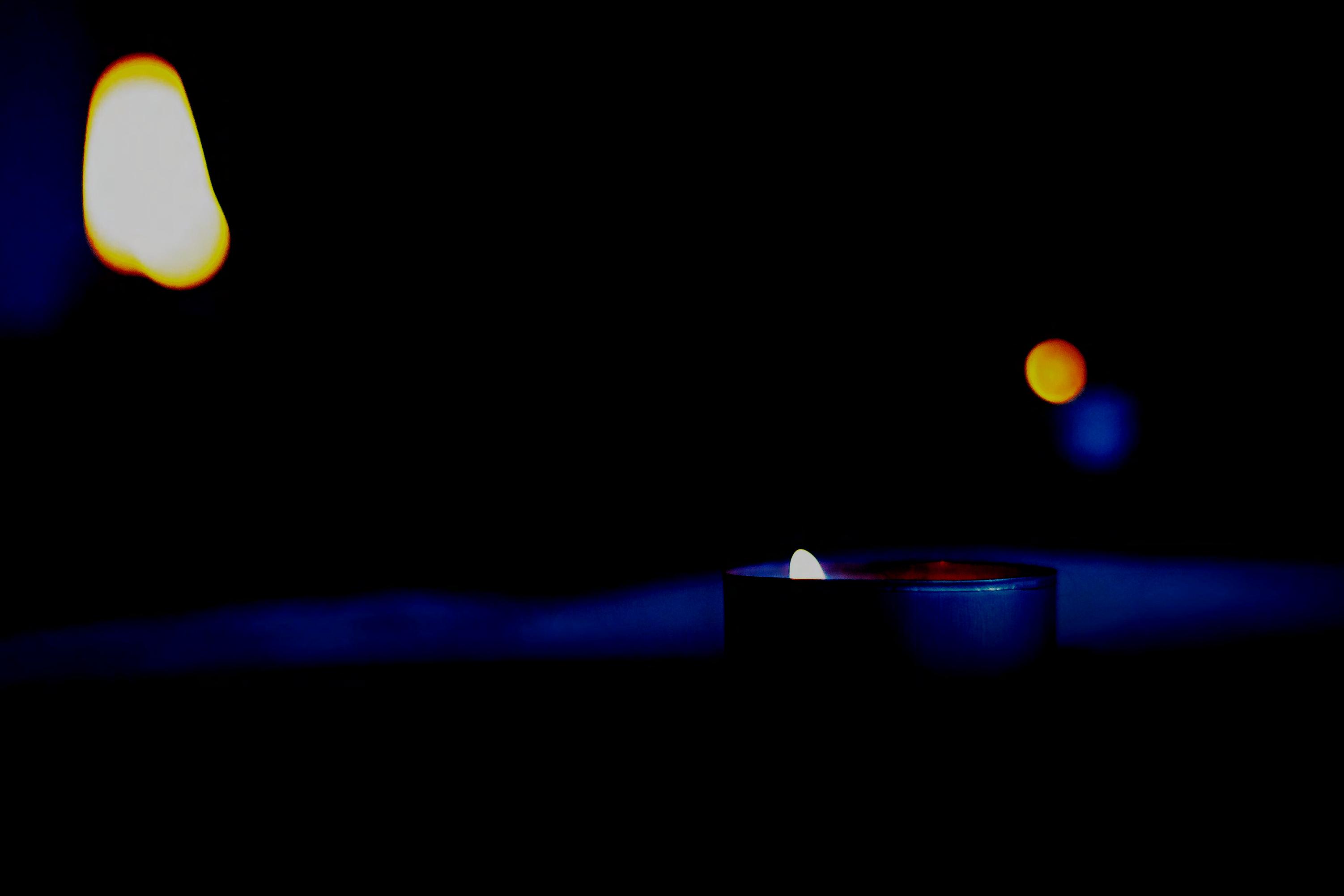
recognition of driving licenses, and helping manage the engineering for the Channel Tunnel.
In 1987, Eric retired to his adopted homeland Belgium. Until the classified files were released between 1999 and 2004, the story of the “listeners” was classified. Eric didn’t speak about it. Once they were made public, a rivetingbook,“TheWallsHave Ears,” published in 2019, told abouthisexperiences.
Each Yom Kippur at the Brussels International Jewish Centre,Ericreadoutthenames ofthedeceasedatYizkor.Later in his life, Eric slowed down and his wife Miriam read the names by herself. At the time of writing this article, Miriam, 89, remains in the hospital, recuperatingfromCOVID-19.
Eric leaves three children, David, Anne, and Sandra, and four grandchildren. He also leaves a long and remarkable legacy.
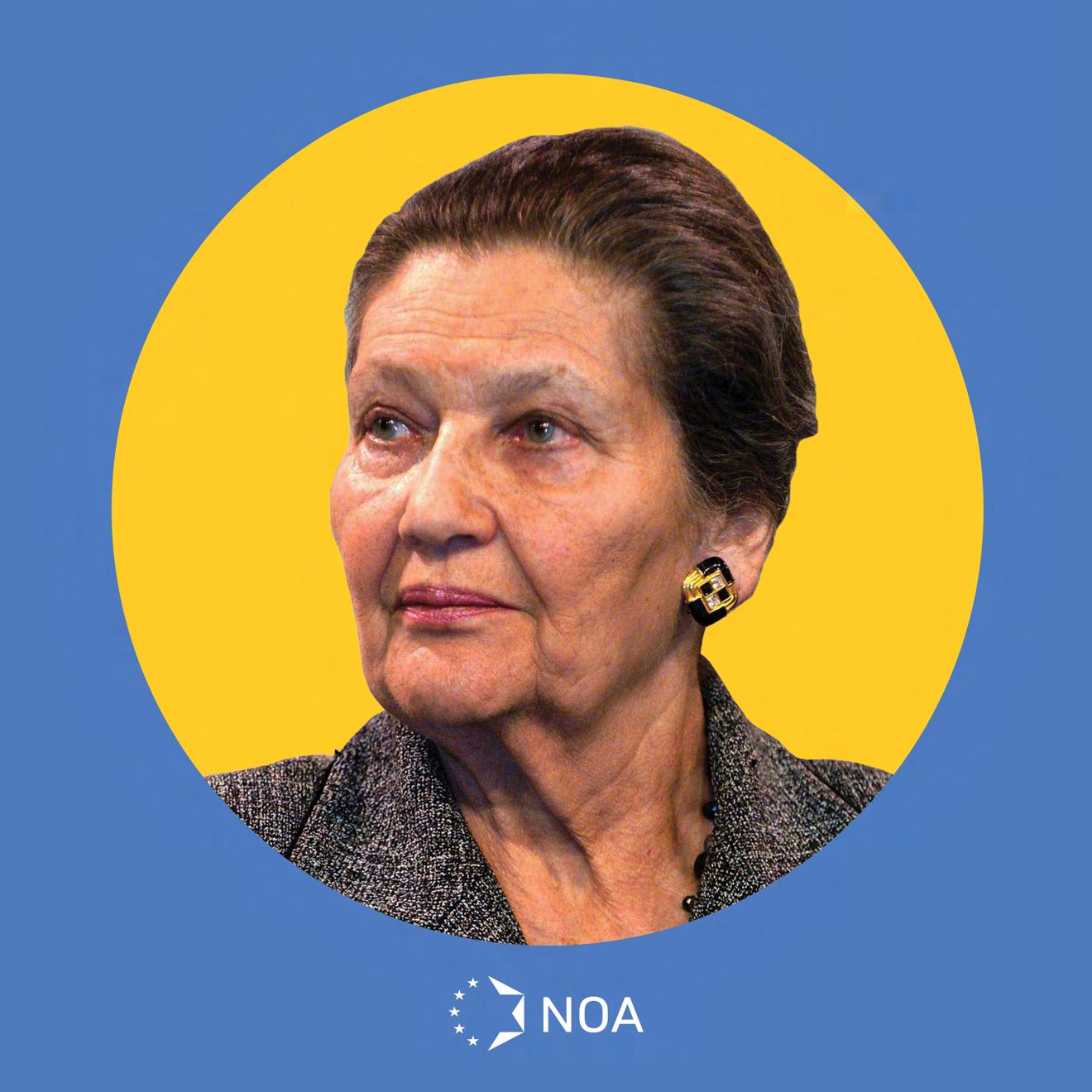

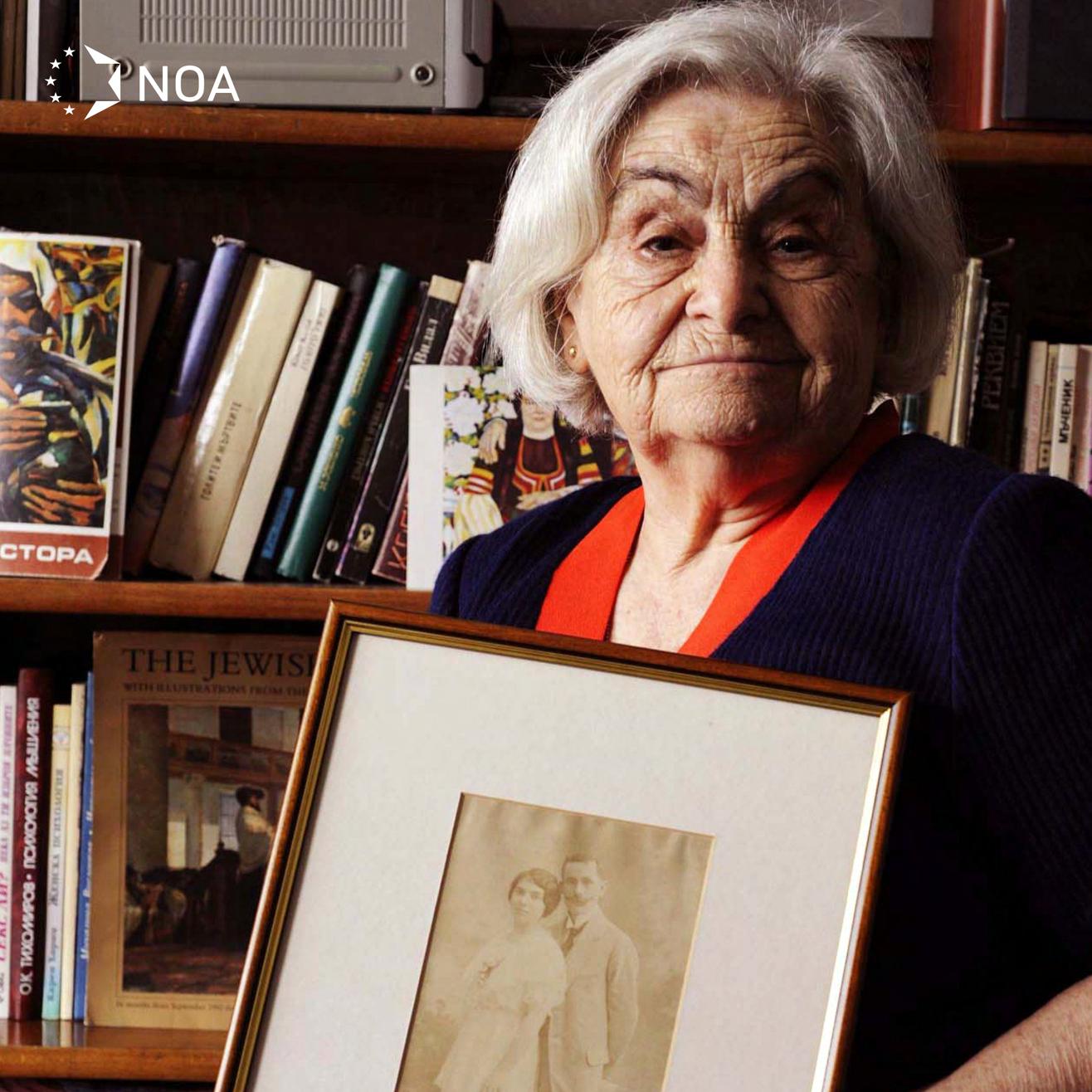
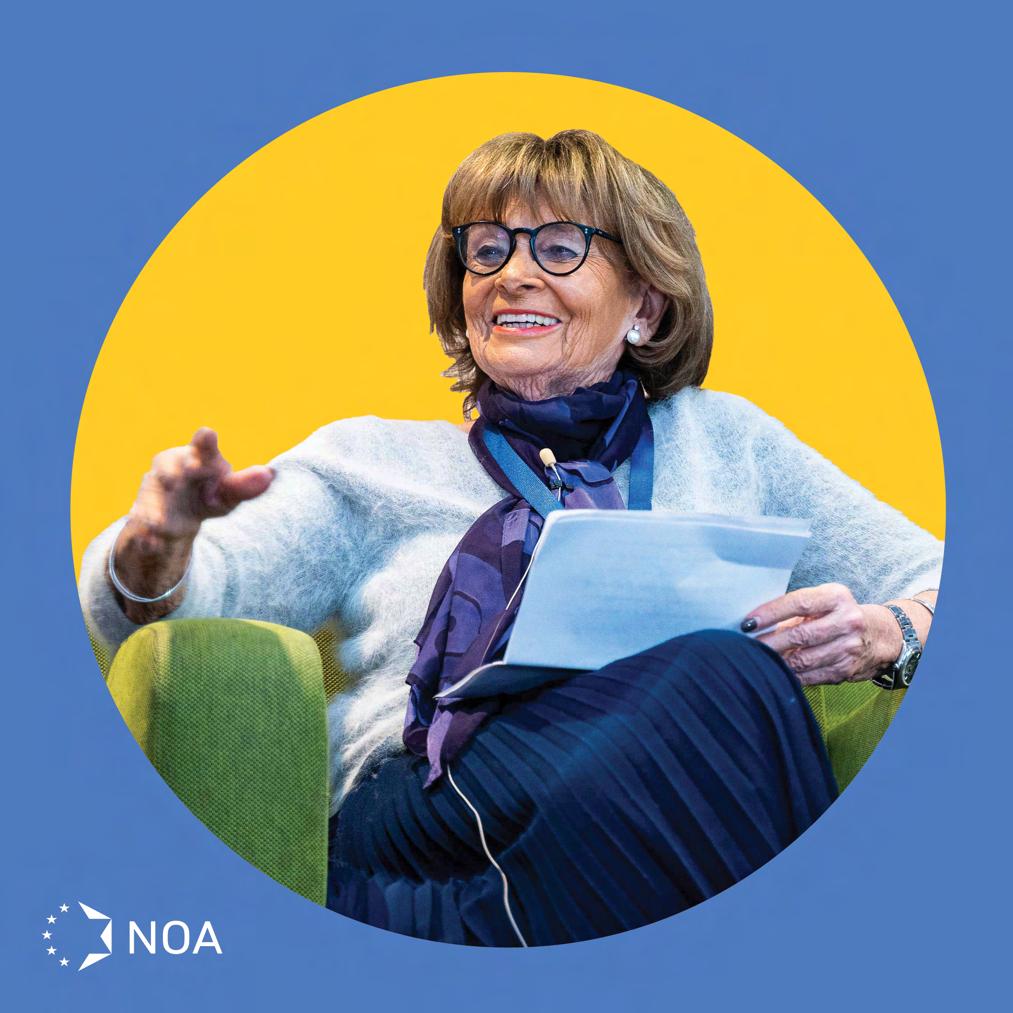
For International Holocaust Remembrance Day, NOA shared the stories of several survivors who stayed in Europe after the war, and created meaningful impact in their societies.

December10thmarksHumanRights Day,whentheUniversalDeclaration of Human Rights was adopted in 1948,proclaimingthateveryperson is entitled to inalienable rights as a humanbeing.
French-born Simone Veil – a Holocaust survivor, feminist, lawyer, and politician – was a champion of humanrights.Sheisrememberedin
France for improving the lives of women and the conditions of prisoners. Veil served as France’s health minister, and pushed to legalizeabortion.In1979shebecame the first female president of the EuropeanParliament,apostsheheld until 1982. Veil is also known for honouring and preserving the memoryofthesixmillionJewskilled duringtheHolocaust,
and for her commitment to Europeanvaluesandunity.
Veilwasbornin1927inaJewish familyinNice,France.In1944her familywasarrestedanddeported to Nazi concentration camps. Simone was sent to Auschwitz. WhileSimoneandhertwosisters survived,herparentsandbrother died in the camps. It was Veil’s traumatic experience which shaped her commitment to the ideaofaunifiedEurope-toa

Europe where such atrocities cannothappenagain.
Veil served 14 years in all in the European Parliament In the later yearsofhercareershereturnedto French politics. She was the first presidentoftheFoundationforthe Memory of the Shoah (Fondation pourlaMémoiredelaShoah),and wasawardednumeroushonorsfor her work. She passed away in 2017, and is interred in the PanthéonmausoleuminParis.

“Hateiseasy,loverequireseffort.”
MarekEdelman,whopassedawayin 2009,wasthelastsurvivingleaderof the 1943 Warsaw Ghetto Uprising. Bornin1919or1922,hewasoneof the founders of the Jewish Combat Organization (ZOB) in the Warsaw Ghetto during the Holocaust, and was the ZOB’s last commander. Edelmansurvivedtheghetto
uprising,andalsofoughtinthe1944 Warsaw Uprising. He chose to continue living in Poland after the war, but didn’t speak about his experiencefordecades.
Hepursuedacareerasacardiologist andwasapioneerinthefieldofheart surgery. Edelman wrote books documenting the history of Poland’s resistancetotheNazioccupationof
WWII. Every year, on the anniversary of the Warsaw Ghetto Uprising in spring, he placed yellow daffodils at the MonumenttotheGhettoHeroes inWarsaw.Itisa
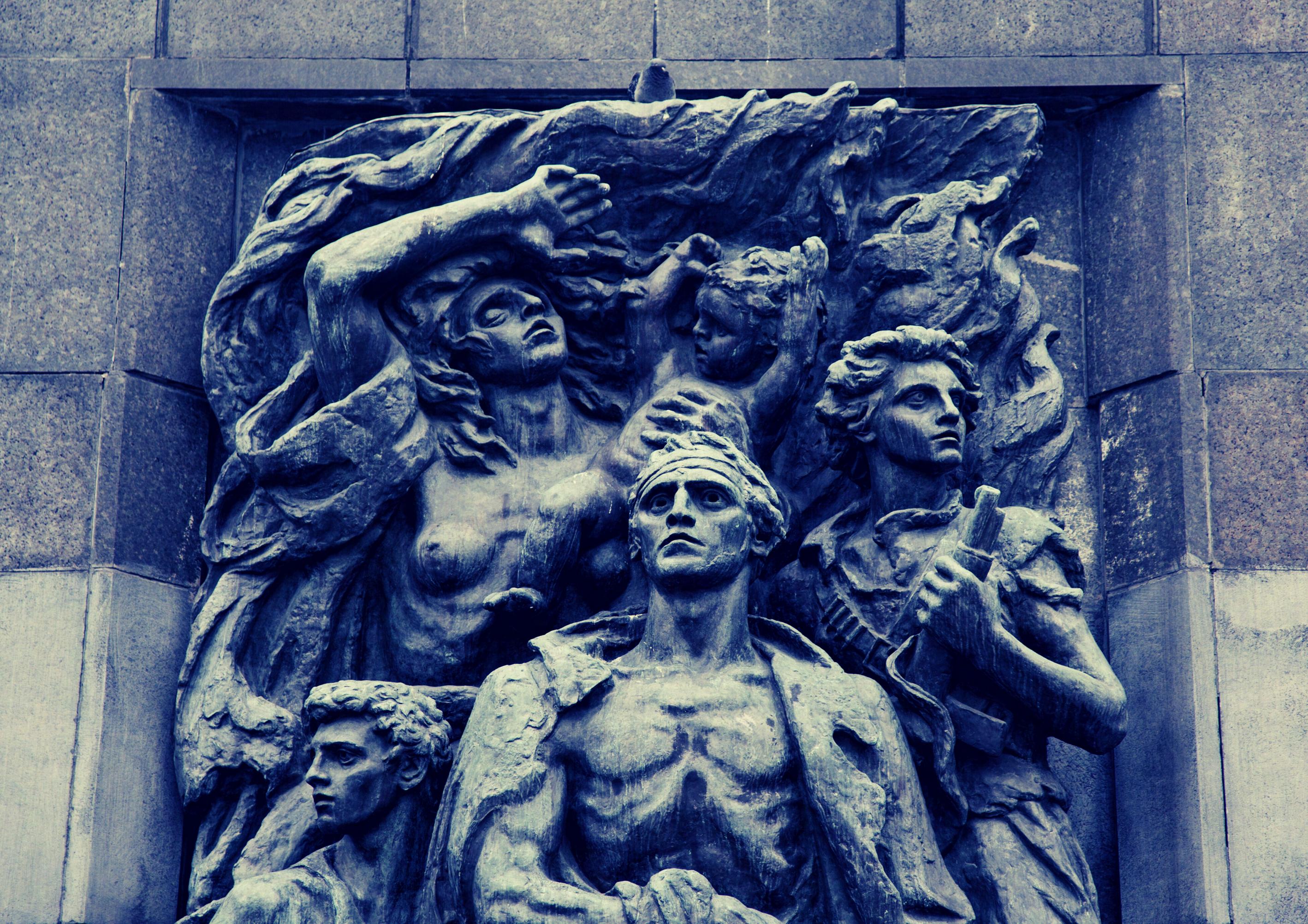
traditionwhichcontinuesinPoland today.
Edelman was awarded the Order of the White Eagle, Poland’s highest decoration, as well as the FrenchLegionofHonour.

In December 2020, just a few days before her 101st birthday, Yvette Anavi (maiden name Kalo), a Holocaust survivor from Bulgaria andinspiringwriter,passedaway.
BorninPlovdiv,anancientcitywhich hadalargeJewishcommunity,Yvette studiedFrenchliteratureincollegein Strasbourgin1938.Itwasaturbulent time,andafterWWIIbeganshehad
to return to Bulgaria. Nazi soldiers were placed in the building of her college in Strasbourg; some of her fellow students were sent to concentrationcamps.
YvettecontinuedherstudiesatSofia University and graduated in 1943, eventhoughmostJewswerebanned fromuniversities.Whilethe‘Lawfor theProtectionoftheNation’in
BulgariadidnotallowforBulgarian Jews to obtain university degrees, Yvette was already a French student and managed to persuade herBulgarianprofessorstoaccept her.
As a Jew from Plovdiv, she was underthreatofexpulsion.In1943, on the night that Jews in Plovdiv weresupposedtobe

be deported to concentration camps, the main Christian Orthodox priestofthecity,PatriarchKiril,said thatifJewsaretobesenttodeath, he would be going with them. YvetteAnaviultimatelysurvivedthe Holocaust.Duringherlifeshewrote several books about Sephardic cuisine, culture, and language, and contributedimmenselytopreserving BalkanSephardictraditions.

HungarianJewishwriterImreKertész was born in Budapest, Hungary in 1929.DuringWWII,attheageof14, he was deported to Auschwitz and fromtheretoBuchenwald.
His first novel, ‘Sorstalanság,’ which translates as ‘Fateless,’ is a semiautobiographical book based on his experiences in Auschwitz and Buchenwald,publishedin1975.
It became the first instalment in a trilogy reflecting on the Holocaust, thetwoothernovelsbeing‘Akudarc’ (‘Fiasco’) and ‘Kaddis a meg nem született gyermekért’ (‘Kaddish for a ChildNotBorn’).
Aftertheendofcommunismin1989, Kertész made more public appearances, was translated into morelanguages,andtookonalarger
"When I am thinking about a new novel, I always think of Auschwitz."
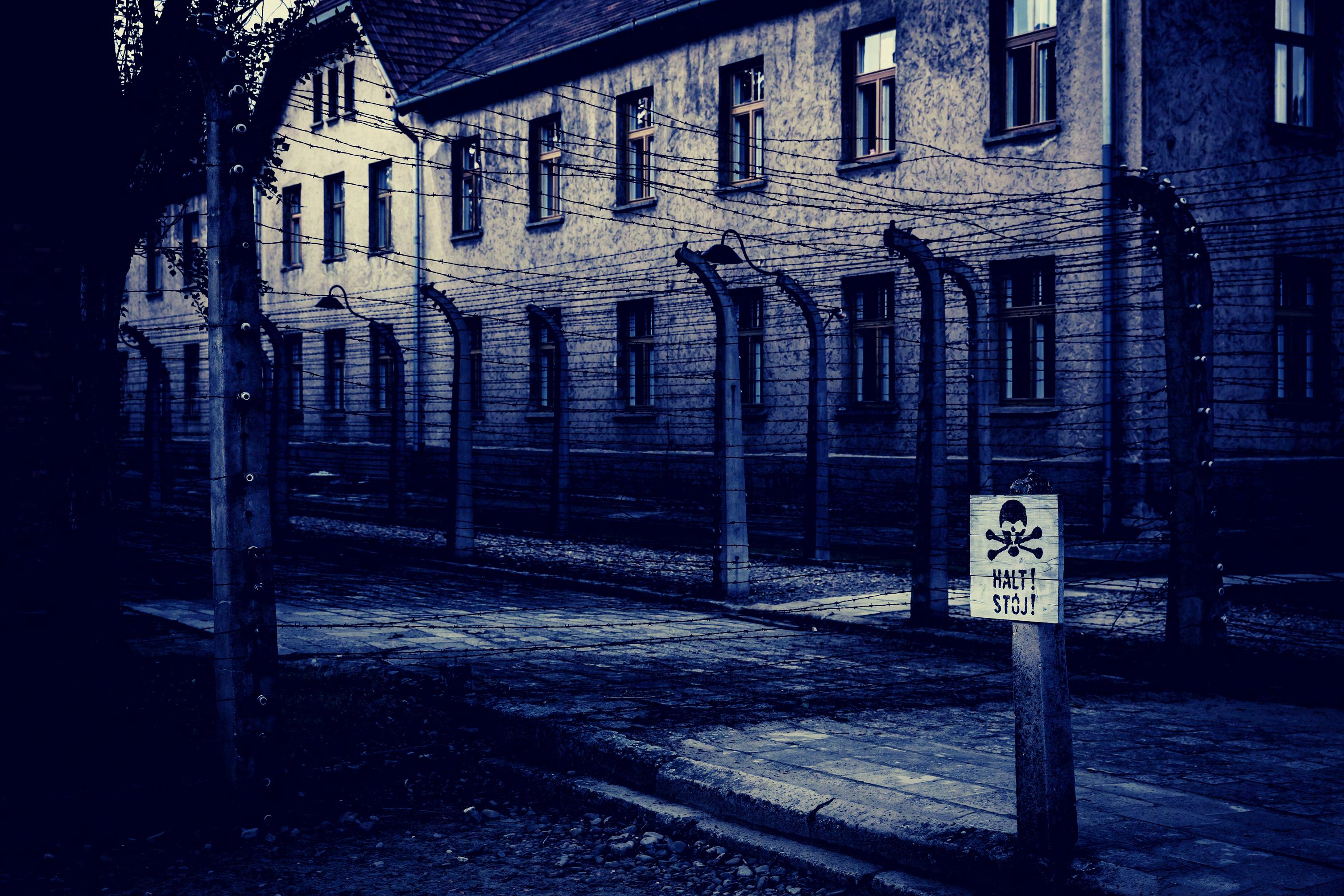
literary role in Europe. Among his numerousdecorationsforhiswork, he won the Nobel Prize for literaturein2002,“forwritingthat upholdsthefragileexperienceof
the individual against the barbaric arbitrarinessofhistory.”
Hepassedawayin2016attheage of86.

Charlotte Knobloch survived the Holocaust in hiding with a Christian familyonafarminnorthernBavaria, Germany.
After the war, she and her husband, alsoaHolocaustsurvivor,plannedto emigrate to the US, but they abandoned their plans and stayed in Germany. Decades later, Dr. KnoblochwentontoleadtheJewish
communityofMunich,servingasthe community head beginning in 1985 and serving as the president of the Central Council of Jews in Germany from2006-2010.Itwasthefirsttime a woman was elected to lead the organization. She dedicated her effortstotherevivalofJewishlifein Germany. Among her major achievements was the opening in 2006-2007ofMunich’s

Ohel Jakob synagogue, the community center, as well as the Jewish museum. In 2008, Dr. Knobloch was awarded the Grand Order of Merit of the Federal Republic of Germany. She has servedasVPoftheWorldJewish Congress since 2005, and since 2013,astheWJC’sCommissioner forHolocaustMemory.
Despite the rising tide of antisemitism in Germany and Europe, and the threats the community faces, Dr. Knobloch is optimistic: “I have great faith in young people, and I mean both Jewish and non-Jewish. I think theywilltakeontheresponsibility, and that is ultimately all that matters.”
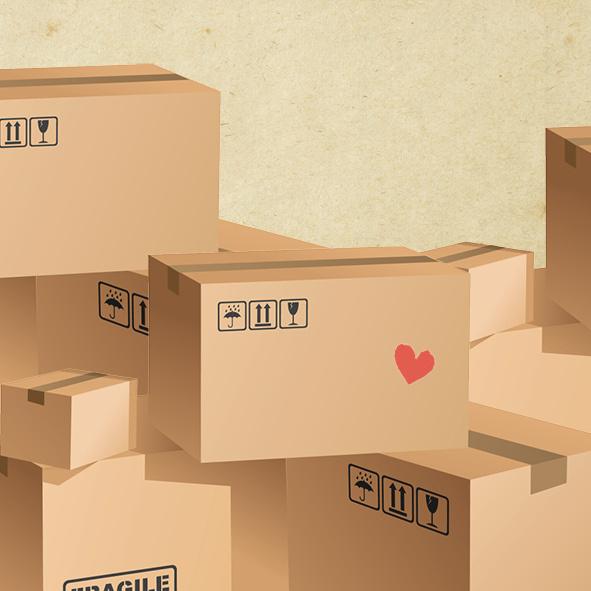
Jewish communities in Europe, and particularly those in countries bordering Ukraine, stepped up to help the refugees entering their countries. Their actions speak directly to the Jewish mitzvah of ‘Tikkun Olam’ – repairing the world.
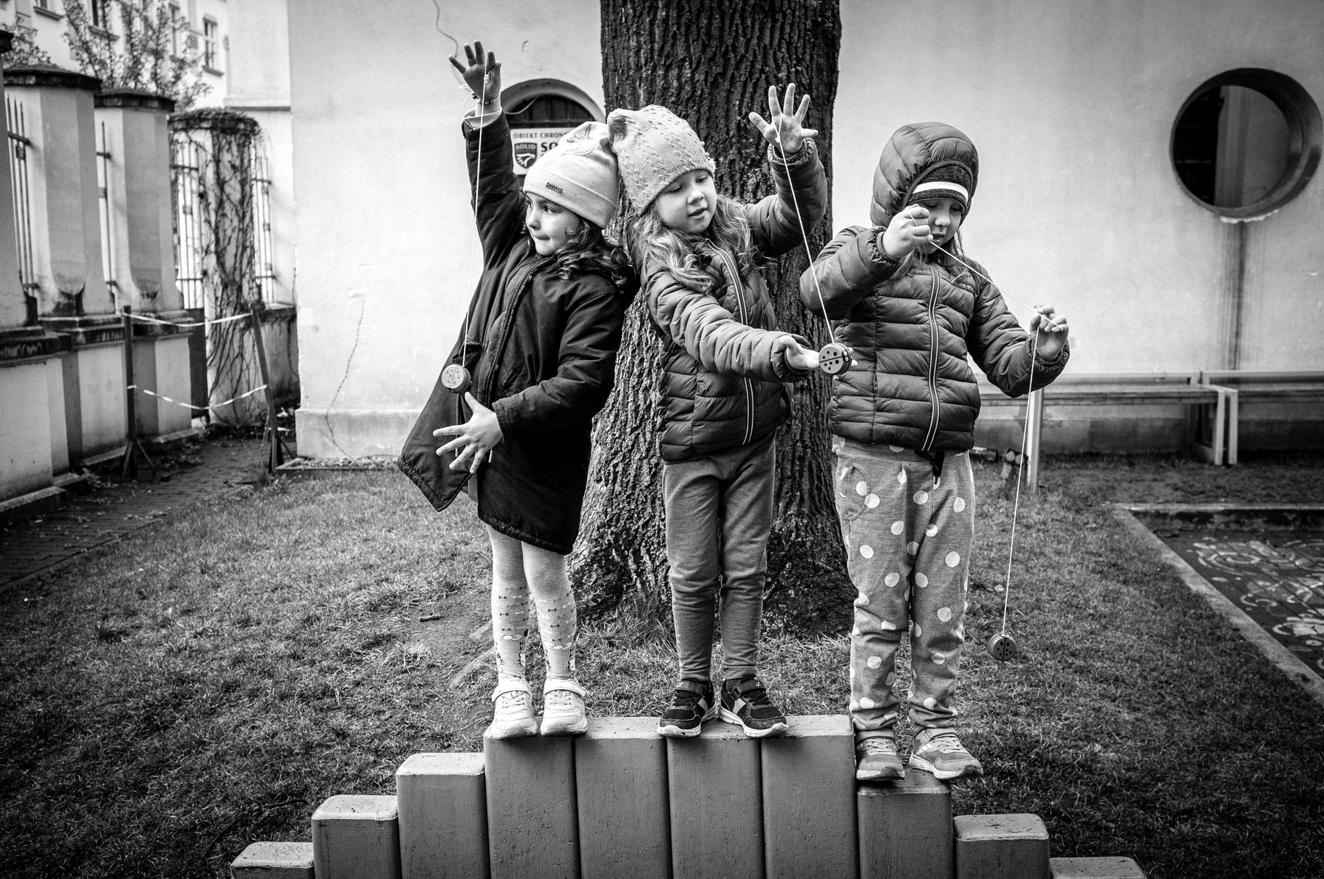
published March 2022, updated May 2022
Krakow’s Jewish Community Centre isworkingroundtheclocktohelpas many refugees from Ukraine as possible.
Over 450,000 refugees have crossed intoPolandfromUkraineasofMarch 2, 2022, according to the Polish borderpolice.JCCKrakowquicklyset outtogathersuppliesfortherefugees – blankets, clothing, medicine, hygiene products, food, and donations. They are providing housing, are offering psychological counseling, and also launched a Ukrainian-languagehotline.
“Wehavefullyfocusedoureffortson helping Ukrainians, Jewish and nonJewish,hereinKrakowandwhen
possible, in Ukraine,” Jonathan Ornstein, the Executive Director of JCCKrakow,toldtheNOAproject.
“Ourcommunity,[located]socloseto Auschwitz,knowswhatitistosuffer, and therefore has a particular responsibilty," Ornstein said. “We have turned our center into a collection point for food, clothing, medicine,andhygienicsuppliesaswell asprovidinghousing,information,and assistancetoanyonewhocomesinor thatweareawarethatneedshelp.In addition, together with local partners, we are offering psychological counselingandlegaladvice,andarein theprocessofequippingandopening an off-site Safe Room space for mothersandchildren."


"Our community, [located] so close to Auschwitz, knows what it is to suffer, and therefore has a particular responsibility."
JCC Krakow opened in 2008. Decades after the Holocaust, it is dedicatedtorebuildingJewishlifein the city, providing social and educational services to the Jewish community of Krakow, while also offering programming to the larger society and fostering Polish-Jewish relations.
With this latest humanitarian mission,theyareavehiclethrough
which the Jewish community can givetheirsupporttoothersinneed.
“We have been positively overwhelmed by the response of the local Krakow community and Poland in general in the desire to help our Ukrainian neighbors. Our worldwide partners and friends havebeenincrediblygenerous.We are incredibly thankful,” Ornstein said.
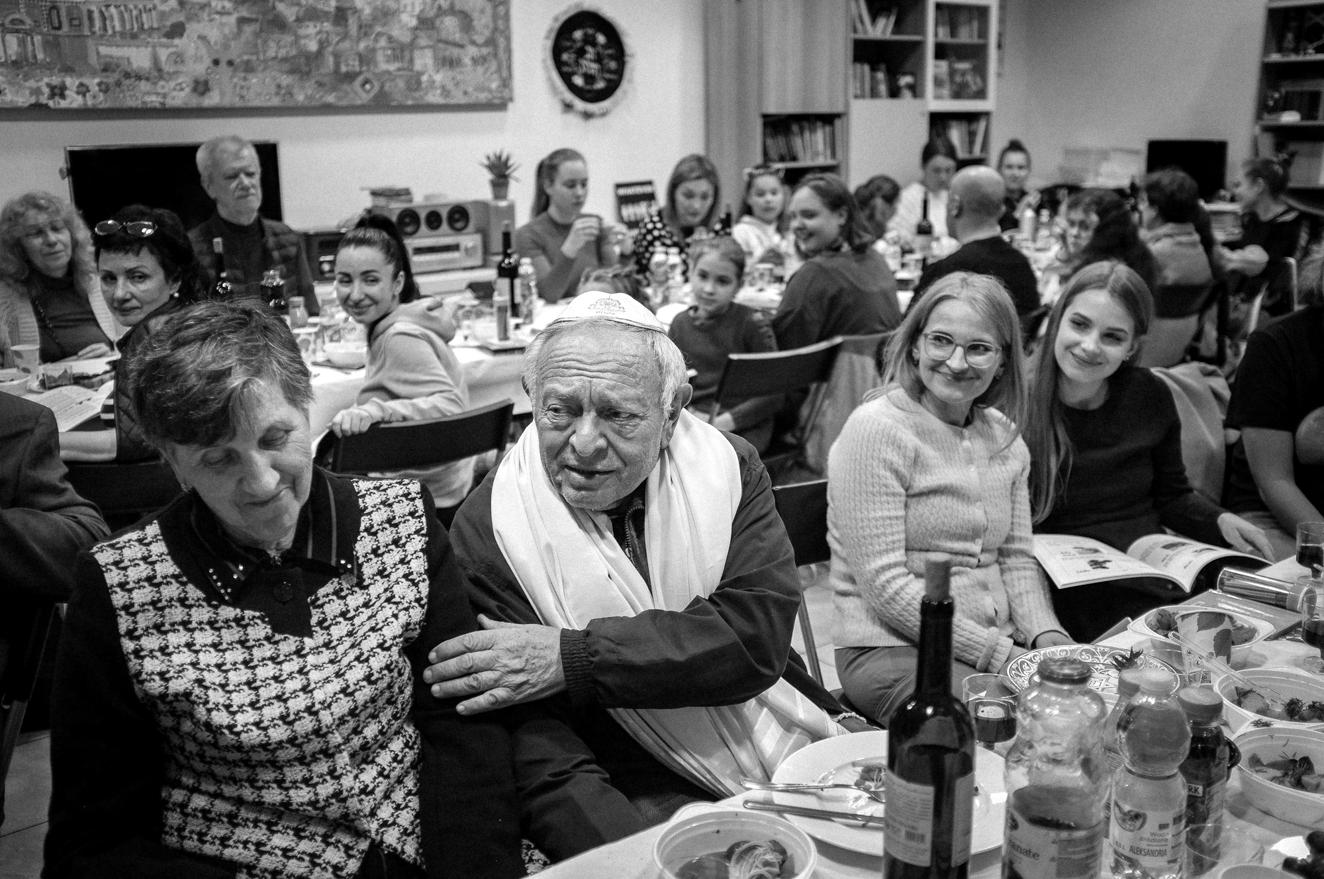
AsoflateMay2022,over60tonsof suppliesweredistributedtoUkrainian refugeesfromtheJCCbuilding;more than 70,000 refugees were helped directlybyJCCKrakow;andaneven greater number by its partners in Krakowandbeyond.Thecenterheld Passover seders, including one for JewishUkrainianrefugees,andhosted aUkrainianOrthodoxEasterparty.
“Our community was decimated by theHolocaustbecausetheworldwas mostlysilent,”JCCKrakowExecutive Director Jonathan Ornstein told the NOAProjectintheearlydaysoftheir volunteerrefugeereliefefforts.“Now we have the opportunity to help others,andwearedoingjustthat.”
as of July 2023
5.9
1.6
No. of millions of refugees from Ukraine recorded in Europe
No. of millions of Ukrainians under protection in Poland due to the war
Source:UNHCR

InthewakeofthewarinUkrainein 2022,JewishorganizationsinPoland immediately took action to help displaced Ukrainians refugees. Photographer Chuck Fishman documented the moving scenes and efforts that were underway at the JCCKrakow.
“InApril2022,attheinvitationofJCC Krakow, I traveled to Poland to photograph ‘survivors saving survivors.’ To photograph the efforts of the JCC in its commitment to helping all Ukrainian refugees fleeing theirwar-torncountry,”Fishmantold theNOAproject.
“WhatIsawistestamenttoacentral concept in Judaism, tikkun olam, repairingtheworld,socialaction,the pursuit of social justice, helping people in need. Upwards of 600 Ukrainian refugees per day, seven daysaweek,patientlywaitinlineto gain entry to the JCC’s distribution center. Primarily women and children,theyaremetbyUkrainianspeaking workers and volunteers to assistthemandrestockshelveswith food, clothing, medicine, diapers, hygienicsupplies,toys,andessential items,freeofcharge.Iwasprivileged tophotographwithinitsspace.”

Jewish communities bordering Ukrainehavesteppeduptohelpthe refugeesenteringtheircountries.As of March 13, 2022, an estimated 400,000 Ukrainian citizens entered Romania since the conflict began, accordingtoRomanianborderpolice, and thousands continue to come each day. Jewish groups mobilized immediately.
“If not us, then who?” Eduard Kupferberg,theExecutiveDirectorof the Federation of the Jewish Communities of Romania said in a phone interview with the NOA Project. “This is our responsibility as Jews. It is our moral obligation… We have to help them. It’s not even a choice.”
The Federation of the Jewish Communities of Romania has two welcome centers on the borders with Ukraine:OneatSiret,whichisthemain border crossing, and one at Sighetu Marmatieti.Alltheireffortsaremadein partnership with JDC Romania (the American Jewish Joint Distribution Committee). The Jewish organizations have a welcome tent at each border point,openforallrefugeesregardlessof ethnicity or religion. They are serving 2,000hotmealsperday,andvolunteers are distributing clothing and blankets. Theyalsohavea24/7helplineavailable inEnglish,Russian,andHebrew.
The Federation of the Jewish Communities of Romania has carried out at least 30 transports from the border,
either to other places of accommodation throughout Romaniaortotheairport. Theskies are closed over Moldova, meaning that the refugees who crossed into MoldovafromUkrainethenneedto reach Romania before boarding planestofurtherdestinations.
In addition, the Jewish Federation is currentlytakingcareofapproximately 2,000 Jewish refugees, providing accommodation, food, and medical care. “We have hundreds of calls every day, we are guiding them for everythingthattheyneed,”
Kupferbergexplains.“Butweevendo itwithpleasure.”
Still, there are many logistical challenges.TheborderwithUkraineis aremotepartofRomania.Itcanreach minus10degreesatnight,andthose working at the welcome tents often go36hoursinarowwithoutsleep.“It is a challenge for us because we are not a big community,” says Kupferberg.“Andwearenotayoung community. But we are managing to do everything. A lot of people are involved. And they are doing their best.”
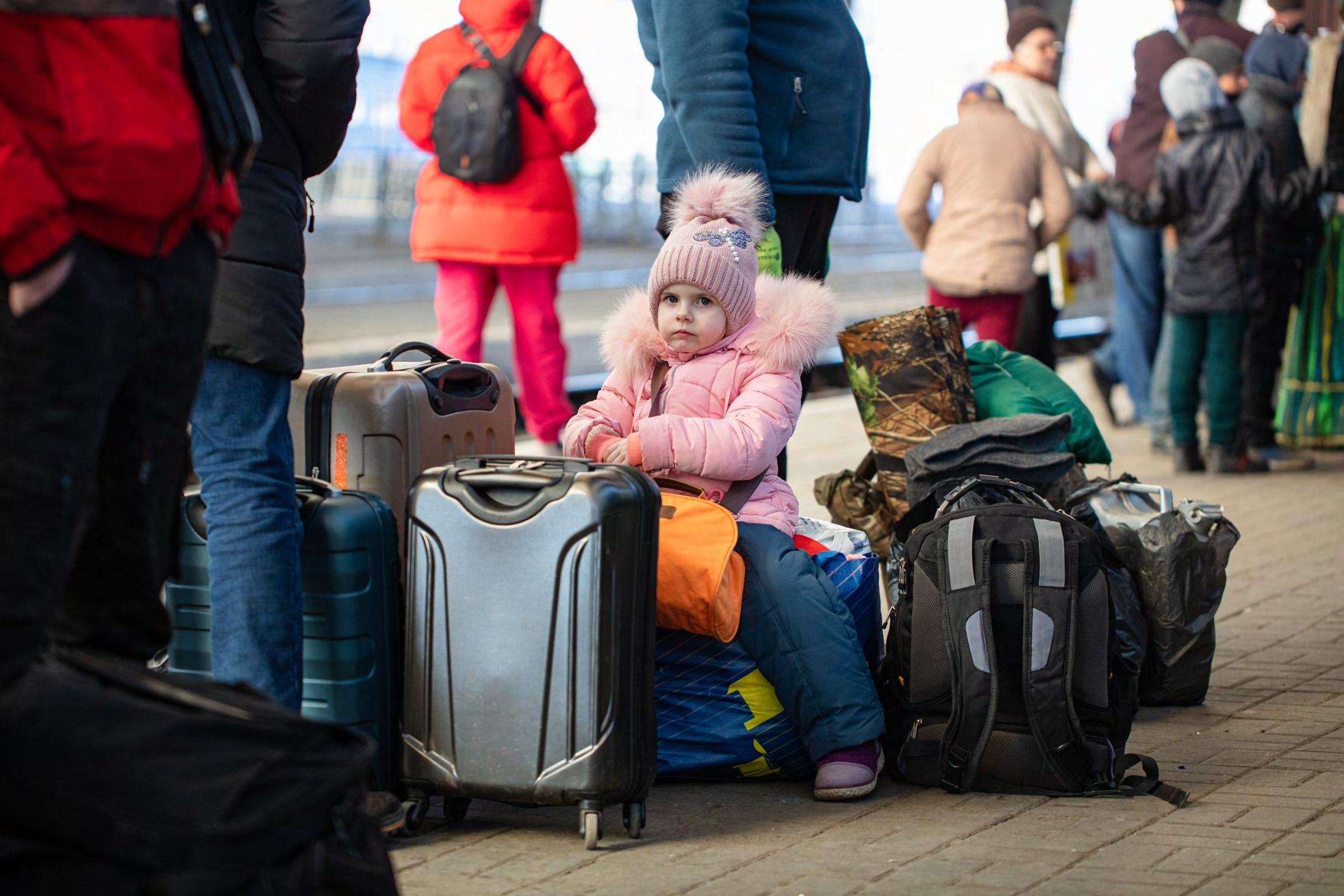
"This is our responsibility as Jews. It is our moral obligation… We have to help them. It’s not even a choice."
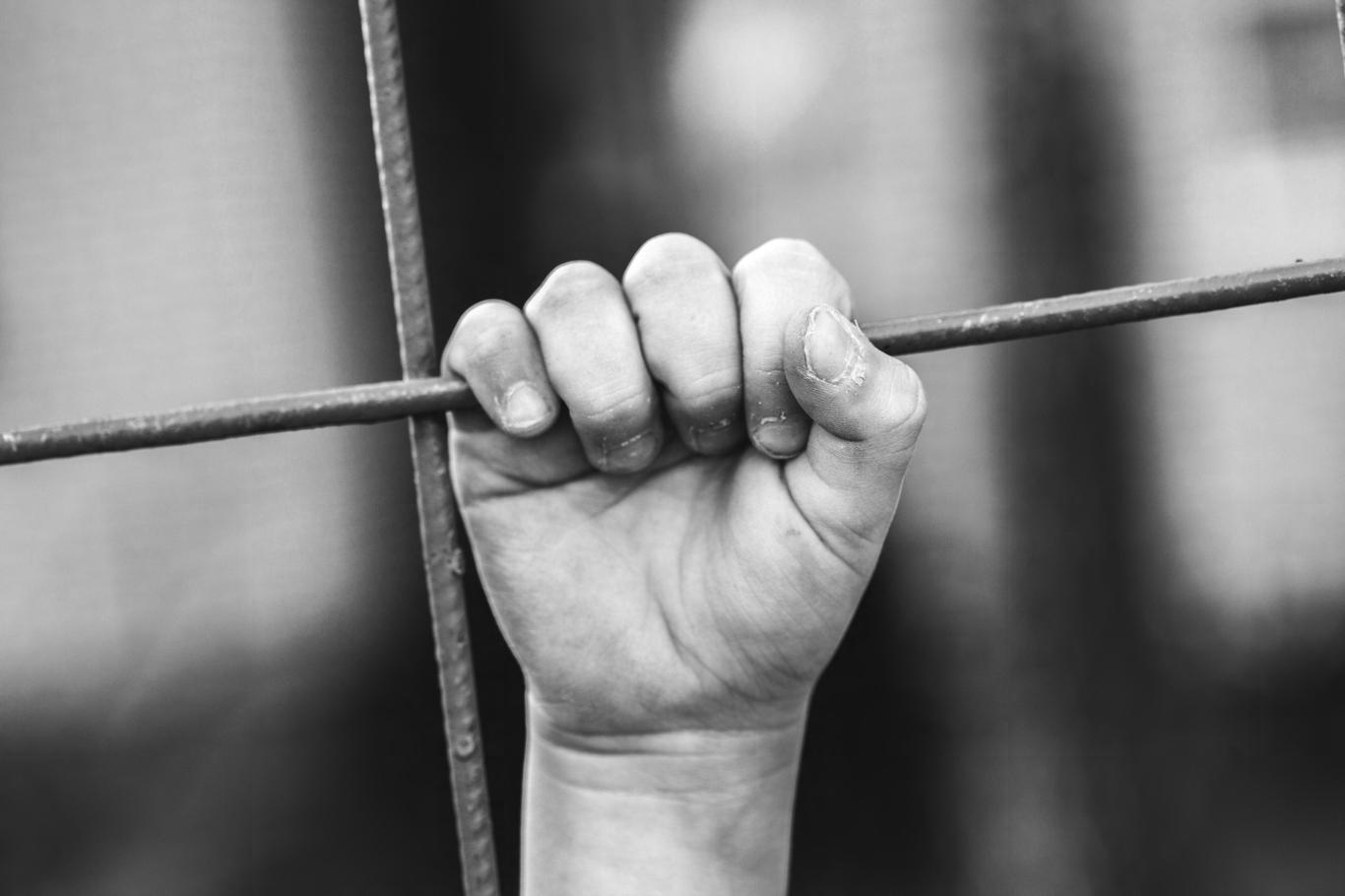
In Budapest, over 50 Jewish NGOs formed a crisis team to coordinate their efforts for refugees, among them Mazsihisz, the JDC, JAFI, JCC Budapest, and the World Jewish Congress. As of March 8, 2022, an estimated180,000peoplehavecome to Hungary from Ukraine, according toHungarianborderpolice.
When the refugee influx began, Mazsihisz met them at the border, providing assistance with accommodation, meals, medical supplies, transportation. They’ve launched a large-scale fundraising campaign to help Ukrainians Jews, while Jewish NGOs have also established a crisis hotline. “Beyond sympathywealsowanttotake
action,” JCC Budapest wrote on Facebook. “We [will] provide assistance to refugees from Ukraine regardless of their ethnic or religious affiliation.”
Now with the crisis team in coordination, Jewish groups will have information points at the two main train stations in Budapest where refugees are arriving. They also have an information point at the Záhony border crossing, which is the main crossing between Hungary and Ukraine, with buses to bring refugees to Budapest, in addition to another fourinformationpointsatotherborder points.JCCBudapestisalsosettingup awebsiteconnectingorganizationsand individuals that give help with those whoareseekinghelp.
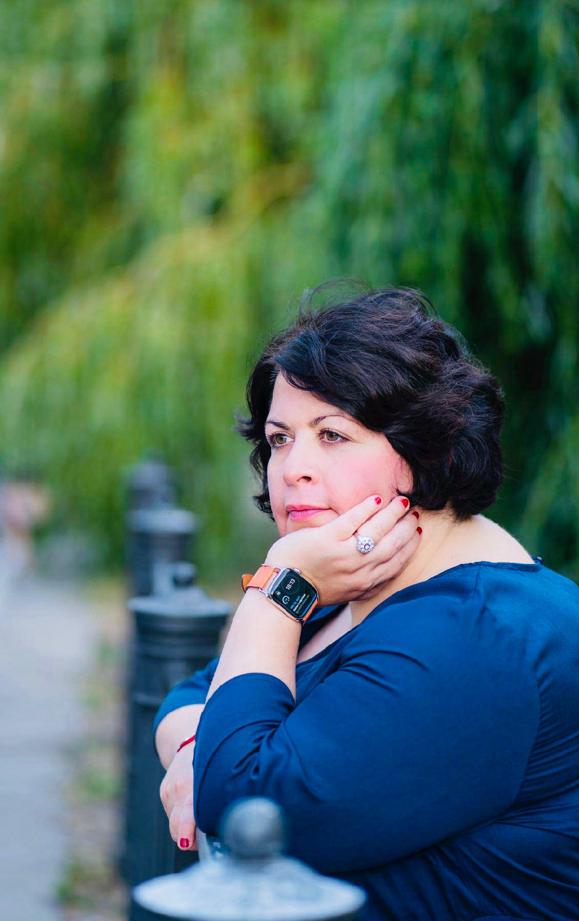
In March 2022, Bella Zchwiraschwili encountered one of her most challenging tasks, when she and her rabbi received a phone call from a rabbiintheUkrainiancityofOdessa. They were evacuating 120 children from two orphanages in Odessa because of the war, as well as the children’scaretakers.Thegroupwas arrivinginBerlinintwodays.
Fordecades,BellaZchwiraschwilihas been working for the Jewish communityofBerlinandvolunteering for Jewish causes. A professional events manager, she worked for the Central Council of Jews in Germany, organizing conferences and seminars. She has organized Hanukkah celebrations at Berlin’s Brandenberg Gate;YomHaShoahmemorialevents; and put together kosher and Israeli food markets. She is a key contact person for German government ministries when it comes to Jewish affairs,andalsocoordinatesevents
andprogramsfortheIsraeliembassy. Zchwiraschwili immediately came to theaidoftherefugees.“Thatwasthe hardest time for me mentally,” she told the NOA project. They had 48 hourstofindhousingforthem,which they did quickly through their networks, in a hotel owned by a Jewish family. They prepared water, food,andclothingforthechildren.A group of 100 volunteers, mostly women, was also assembled to help thechildrensettlein.“Withoutthem, these ‘mamas,’ we couldn’t manage,” Zchwiraschwiliaffectionatelysays.
The challenges, of course, didn’t end there.Mostofthechildrendidn’thave passports, yet they had to cross numerousborderstoreachGermany. Zchwiraschwiliandherrabbiwereon the phone the whole time with the authorities to coordinate and get the children across every border. Access tohealthcareforthekidswasanother issue.
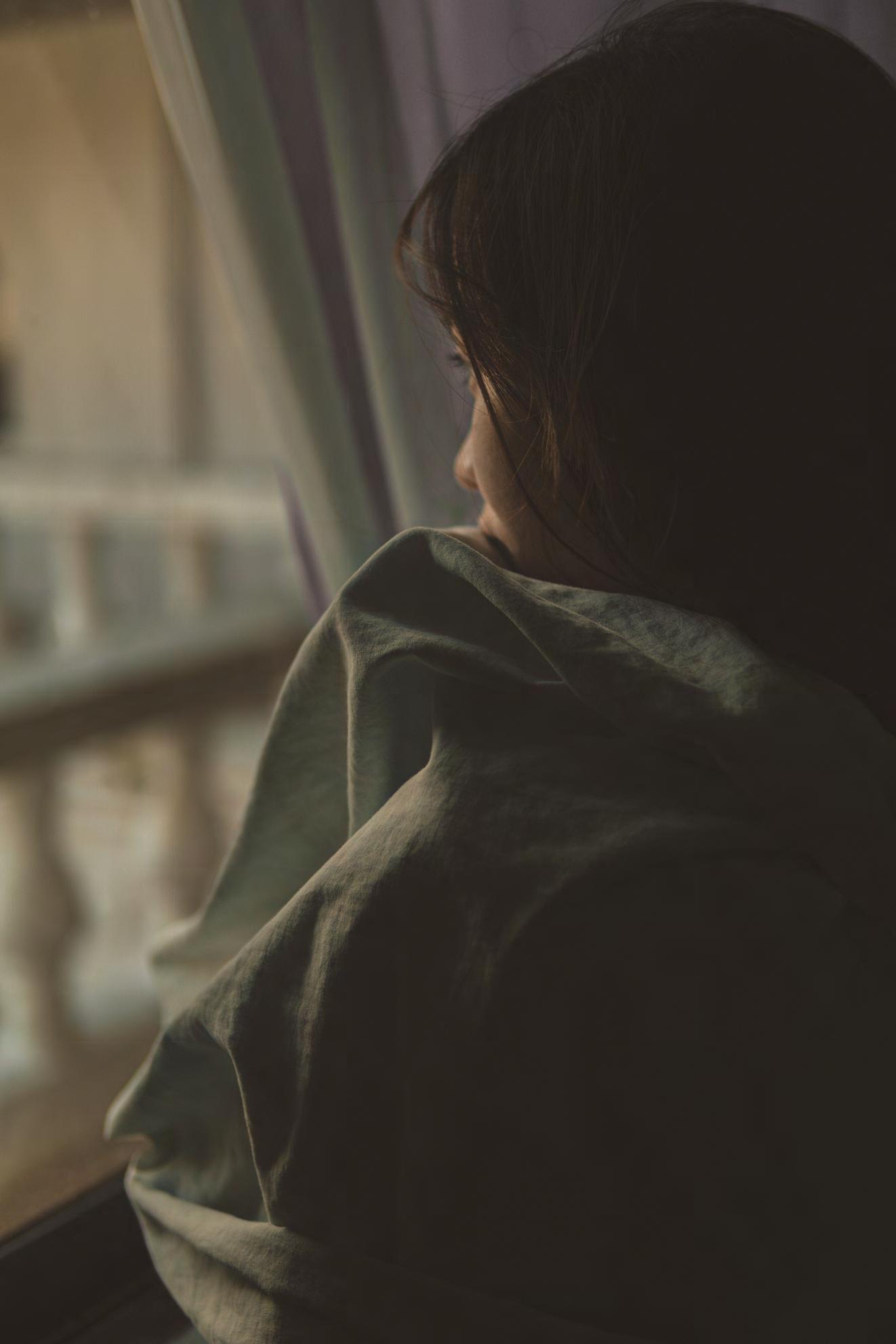
Since that phone call, a whole community was built around integrating the kids into their new surroundings. Zchwiraschwili, who wasborninIsraeltoimmigrantsfrom Georgia and Ukraine and came to Germany at four years old, understood firsthand the importance of integration. They established a kindergarten and a school where the kids are residing. They’ve held celebrations for the chaggim, and were approached by a well-known football club to create a sports program for the kids at the club’s stadium. Months later, work at the improvised orphanage was on-going. “My younger brother works there everyday.Heisahero,”
Zchwiraschwilisays.“Ultimately,it’sa family. We must thank them that we canhelpthem.”
In 2022, Zchwiraschwili received an officialhonorfromGermanPresident Frank-WalterSteinmeierforhercivic engagement and commitment to making Jewish life more visible. Her newestendeavornowisasdirectorof the Pears Jewish Campus in Berlin, a Jewishcommunityfacilityfocusedon educational, cultural, and sport programs,openingin2023.“Thegoal of the campus is that it is an open house.Letpeoplein,JewishandnonJewish,andgiveafeelingthatthereis nodifferencebetweenus,thatweare one,”shesays.

Jewish organizations in Europe mobilized immediately to help refugees and displaced people from Ukraine once the conflict began. For those working in Jewish culture and heritage preservation, their previous activities have been suspended so that they can focus on the humanitarian crisis.
The European Association for the Preservation and Promotion of JewishCultureandHeritage(AEPJ)is a network of European institutions. Headquartered in Barcelona, Spain, AEPJ’s partners and networks are nowatworkhelpingUkrainians.
“We look with admiration at our partners who have transformed their usual field of work to dedicate themselves in depth to offering all kinds of help with humanitarian aid and support to refugees. Their understanding of the role of culture and heritage puts people and communities first” says AEPJ PresidentFrançoisMoyse.

From Heritage Springs, which works in Western Ukraine, to the Agudath IsraelinMoldova,anOrthodoxJewish community, the Taube Center for JewishLife&LearninginPoland,and the Together Plan, a UK charity workingacrosseasternEurope.Allare doingtheirparttoofferhumanitarian aidtorefugees.
Agudath Israel in Moldova has taken in at least 10,000 refugees. “Our Jewishhistorywassofulloftragedies andpersecutionthatweknowbetter

thananybodyelsewhatitmeansand how important is to support people who remained without protection, belongings, home,” Michael Finckel, DirectorofAgudathIsraelinMoldova told the NOA project. In just two months, they celebrated Purim together with over 200 refugees in Chisinau;markedthebatmitzvahofa girl from Odessa; and held the chuppahforacouplefromUkraine.
The Together Plan is currently supportingvulnerablecommunitiesin Belarus. They are also raising money for its partners who are supporting refugees. “The network and connections that we have as a result of our cultural heritage work have proven to be invaluable,” Debra Brunner, CEO of The Together Plan explained.

Hip hop trio Fo Sho isn’t the kind of music group you would expect to come out of Kharkiv, Ukraine – nor from a Chabad school. But it’s exactly that.
"Kabbalah, the Torah, they all say that, that everything happens for the best. And since I’m Jewish, I’ll say that too."

Composed of three black Jewishsistersbornandraised in Ukraine – their parents are EthiopianJews–FoShomade a splash on Ukraine’s music sceneaftertheyfirstformedin 2019. Theyevenbecamesemifinalists for Ukraine for the 2020 Eurovision competition. Theentirefamilyislivingsafely in Germany, having fled after war began in Ukraine in February 2022. From Europe, FoShocontinuestosharetheir message of love and acceptance.
“Everythingthathappensisfor the best,” Betty Endale, the eldestoftheFoShosisterstold the NOA project in a phone interview. “Kabbalah, the Torah, they all say that, that everything happens for the best. And since I’m Jewish, I’ll say that too.” After several monthsofrecoveryafterbeing forced from her home country due to the violence, Endale foundawaytoapproachtheir
newsituationwithhumor.“Last yearmydadcomplainedthathe was getting old,” she explained. “Butbecausehewas60,hewas able to cross the border [out of Ukraine]. So now he says he loveshisage.”
Perhapsnotsurprisingly, Fo Sho’s message has always been about embracing uniqueness and self-expression. “I’msoextra/extratexture,” Fo Sho raps in their hit song ‘XTRA.’ It’s a song about being out of the box – and owning it. “I call myself extra for many reasons,”Endalejokes. “Mysize;mycolor;whileI’m a dentist by training, but also a musician…Ifyouknowwho you are, then you have inner power, and you can do whatever things you want. And youareextra.”
The past months in Germany have given Endale time to reflect on her world view – and it’s only turned towards more loveandacceptance.
“Where
in the world is a safe place for me?” Endale questioned, noting that all the countries where she has attachments –Ukraine, Israel, Ethiopia – are at war. “After this, I understood that actually –I am a global citizen, I am a human being, and Earth is my planet. First things first, we
are all human beings.”

Since receiving special status in Germany, Fo Sho has performed at rallies for Ukraine in cities across Europe. After a several months’ pause they are also writing new music again. In the future, they hope to incorporate Ethiopianand Jewish sounds into their music, together with hip hop.
For Endale, she sees it as room to grow. “I’m curious myself to see what will come next.”
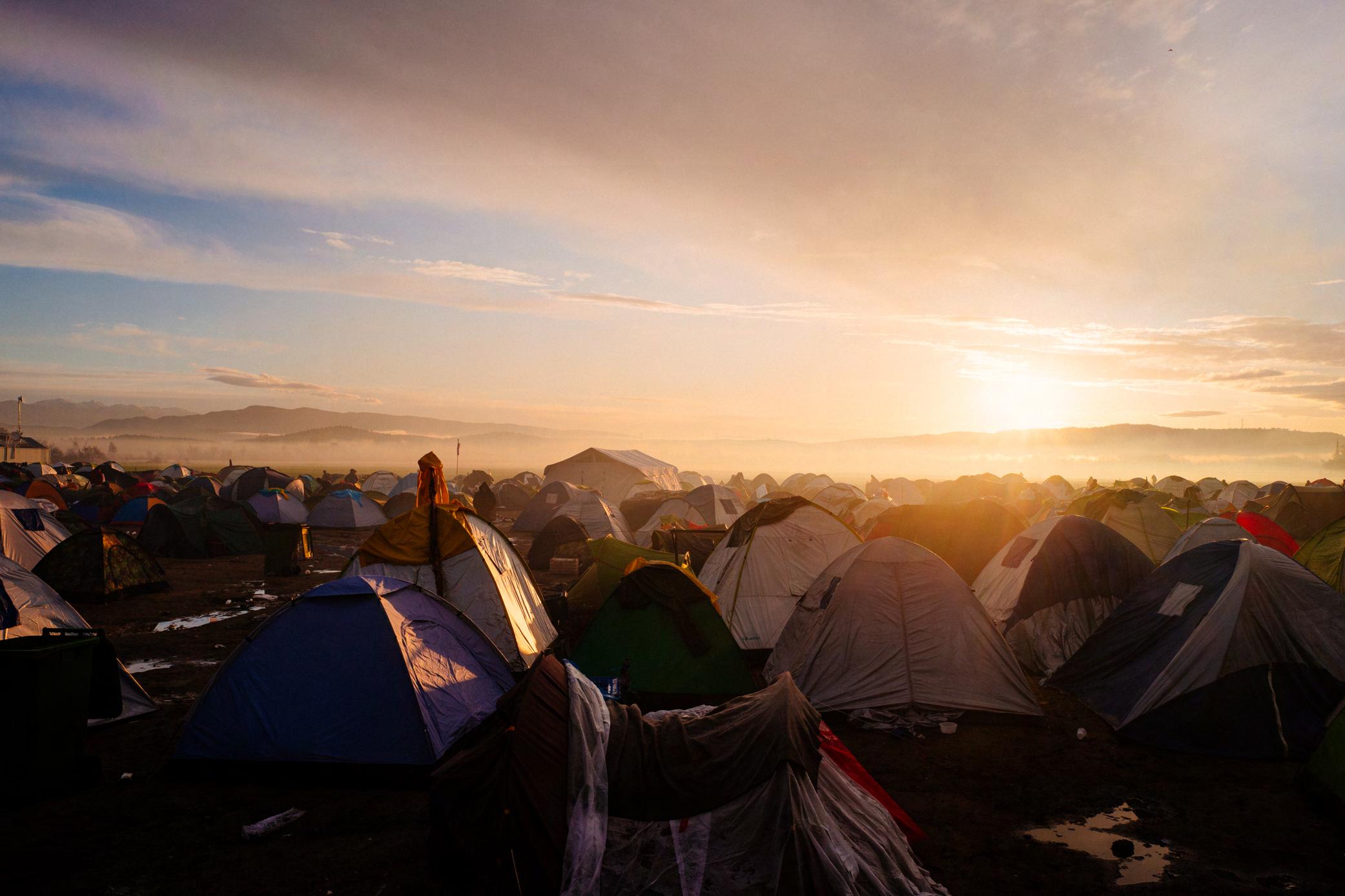
HIAS (the Hebrew Immigrant Aid Society) was founded in 1881 in order to assist Jews fleeing pogroms in Russia and Eastern Europe. Today, HIAS is aiding refugees around the world, following the ethos of the Jewish value of Tikkun Olam, repairing the world.
With the refugee crisis in Europe, more than one million refugees and migrants arrived in Greece in 2015 and early 2016, according to the UNHCR.Tensofthousandscontinue toarriveeachyear.AsofJune2020, 122,000refugeesandmigrantslivein Greece.
HIASisservingrefugeesinGreeceby providingfreelegalassistance,helping them through the asylum procedure andfamilyreunificationprocesses,as wellasaidingasylumseekerswhoare in administrative detention. The majority of clients are coming from Afghanistan,Iraq,andSyria.
The island of Lesbos became one of the main gates to Europe for asylum seekers from Syria, and asylum seekers must stay in their first point of entry during the whole legal procedure. HIAS has provided legal assistanceformorethan400casesin Lesbos.
“That’s why it’s very important that we are here; because the whole refugeestatusdeterminationistaking place here,” says Vassilis Kerasiotis, directoroftheHIASGreeceoffice.
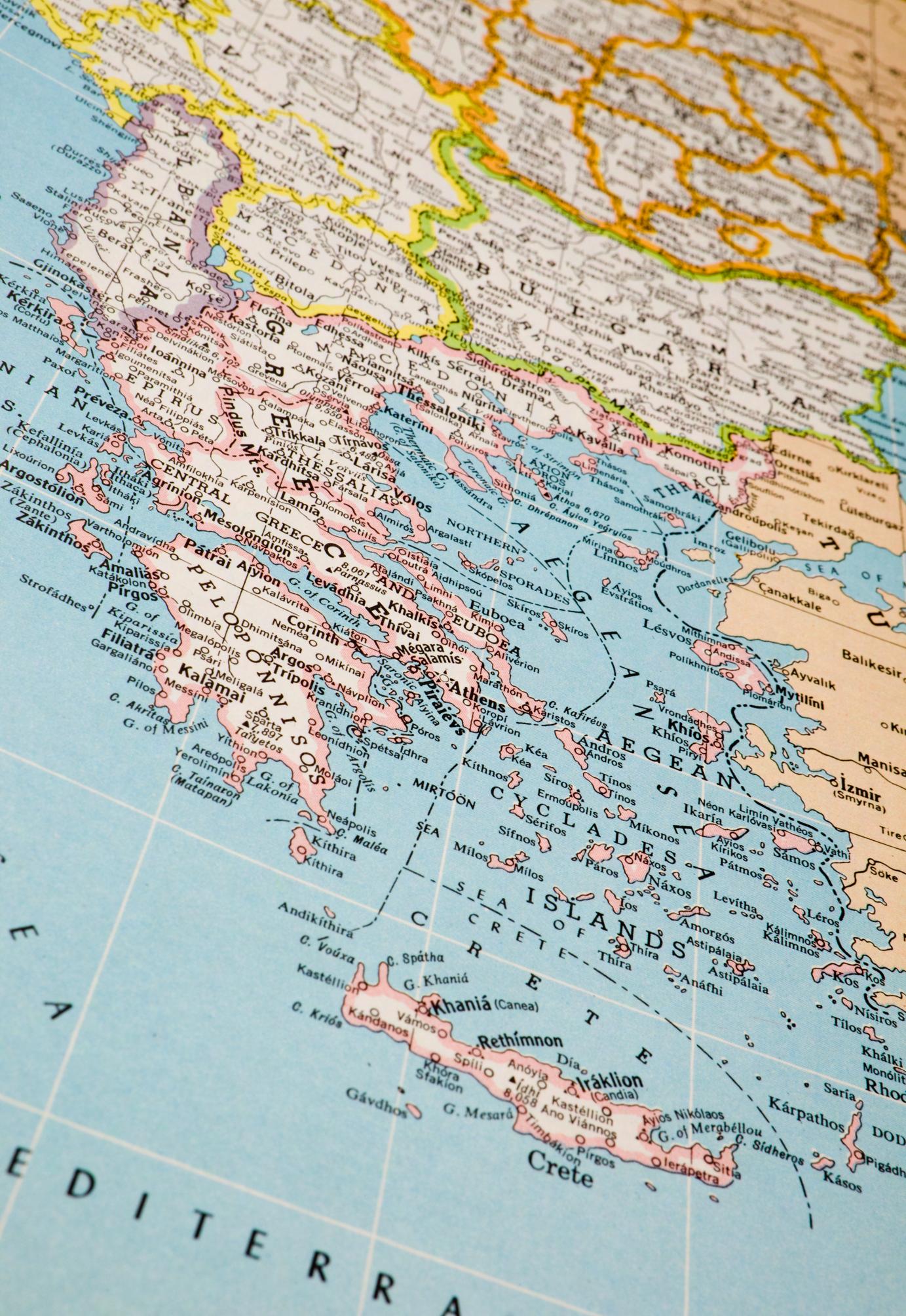
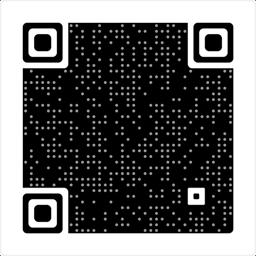

A Roman Catholic priest plays tennis with a rabbi. A Protestant minister discusses the merits of meditation with a Buddhist monk. These are just some of the surprising moments of a ninemonth-long French interfaith program called Emouna.
Launched in 2016, Emouna is the brainchild of France’s first female rabbi,RabbiPaulineBebe,whoworks with the European Union of ProgressiveJudaism.
She founded the program with a diverse group of faith leaders. “My own family history provided inspiration,” Rabbi Bebe explains. “Christianssavedmyfamilyduringthe Holocaust and my parents raised me in an environment of openness and tolerance.” After the 2015 terrorist attacks rocked the French capital, Emouna represented her response to violence.InHebrew,“Emouna”means trust, loyalty, spirituality, adherence, andcommitmentthroughacts.
RabbiBebeteamedupwiththeParis Institut de Sciences Politique. The curriculum teaches religious leaders how to lead in a secular Western democracy. They discuss subjects ranging from biotechnology and abortion, to laws about professional secrecy,howtosupportthefaithfulin prisons or in hospitals, and the challengeofradicalization.Thegoalof the program is not to get an agreementbetweenfaithleaders,but simply understanding. “At Emouna, they can still become friends and worktogether,”RabbiBebesays.


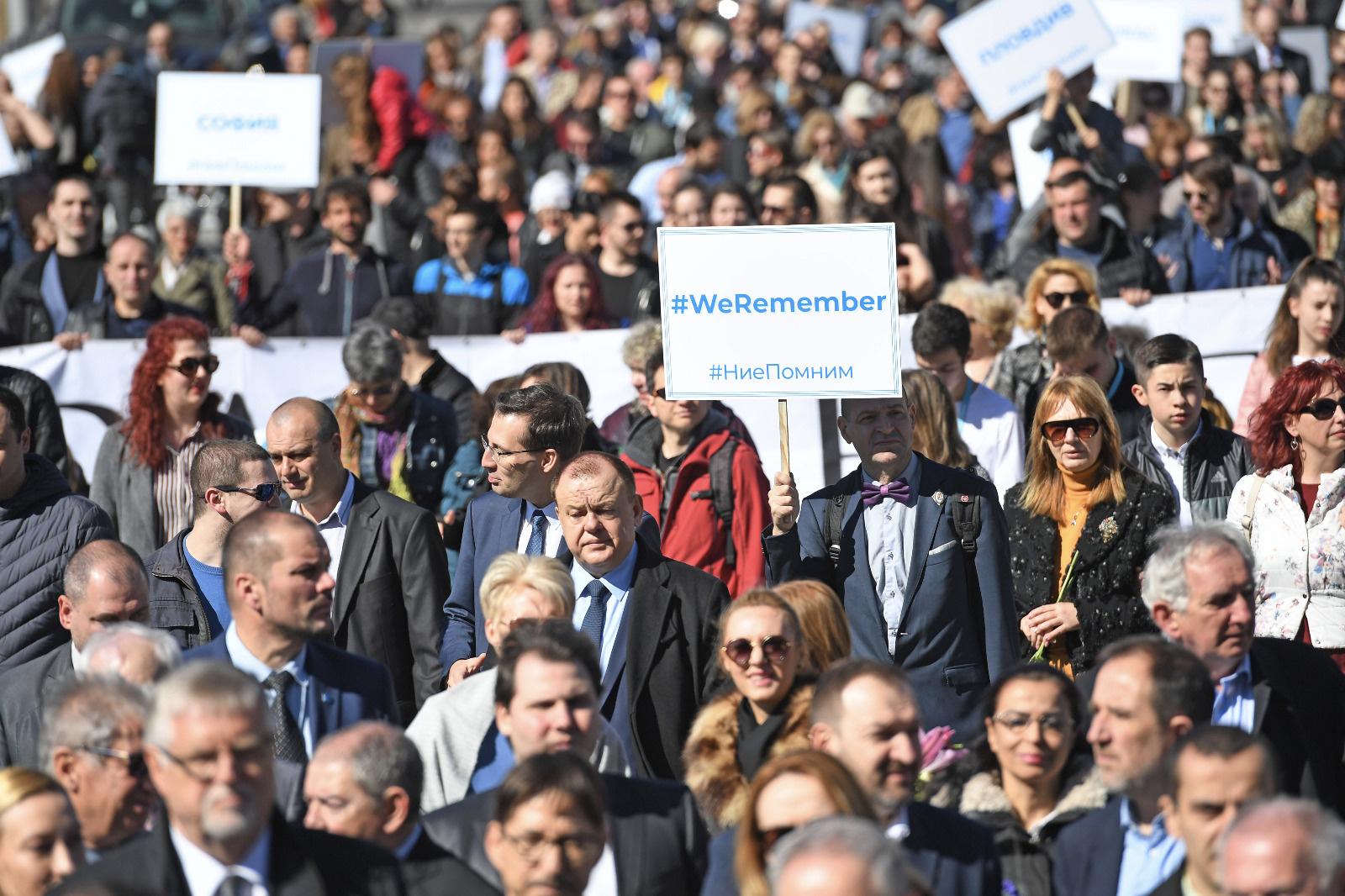
When neo-Nazis ignored a ban and marched through the streets of Sofia in 2019, Bulgaria’s Jews responded by organizing a symbolic March for Tolerance.
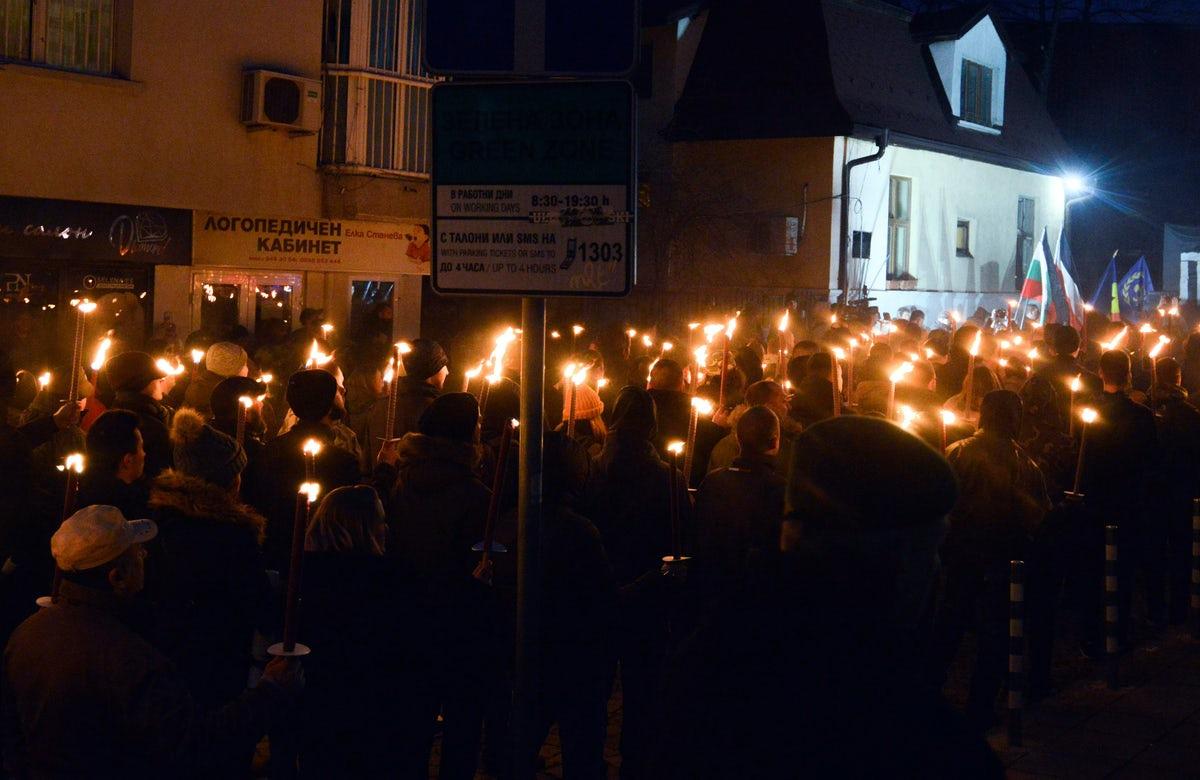
Bulgaria’s Jews have long played a keyroleinthemulticulturalcountry. The Ottomans invited Sephardic JewsfleeingtheSpanishInquisition tosettleintheBalkancountrysome 500yearsago.
‘Shalom,’ the representative body of Bulgarian Jewry, is behind a nationwideinitiativetocurbhatespeech.In 2018, Shalom introduced a ‘Bulgarians united against hate speech manifesto which was signed by politicians and social leaders. Shalom has also joined forces with other faith and minority groups in Bulgaria.

It is working together with the LGBTQ+ community to fight discriminationinBulgariansociety.
TheCouncilofEuropeestimatesthat some750,000RomaliveinBulgaria, andmanystrugglewithpovertyand injustice. A Shalom project provided freeeyeexaminationsandeyeglasses for children from underprivileged familiesintheRomacommunity.
Shalomalsostandsinsolidaritywith Bulgaria’s Muslim minority. It organizedafundraisingcampaignfor thevictimsofa2016trainexplosion in a predominantly Muslim town in northeasternBulgaria.
Itsworkcontinuesinthestreetstoo: A Shalom initiative removes antisemitic graffiti off the walls of Sofia.
From synagogue visits to communal dinners, young members of the Jewish and Muslim communities in theNetherlandsarecomingtogether.
Chantal Suissa-Runne is one of the people who made it possible, developing the “Get to Know Your Neighbors”initiative.

Taking place in Amsterdam and two other cities, the project brings young studentsfromdiversebackgroundsto ‘meet’ the local Jewish community. With visits to synagogues and community centers, they have the opportunity to engage in open conversations about Judaism, Israel, andmore.

So far 14,000 students have participated. Suissa-Runne has led many other interfaith and interfriendshipprograms.
Suissa-Runne told the NOA project that she was strongly motivated by her Jewish family history. “My grandmother, who survived five concentration camps and a Death March, taught me the power of unconditionallove,andalwaysseeing thegoodandhumanityinpeople.”
To celebrate Hanukkah, Peninah Zilberman from the Tarbut FoundationsharedwithNOAalittle ‘miracle’ story about a friendship in Romania connected by the love of Judaism:
“Severalyearsago,astudentfromthe Babes Boyle University in the city of Cluj,MadalinaMiron,contactedusat the Tarbut Foundation in Sighet for somehelp.Shewasdoingresearchfor her graduation paper on the mystical traditions in the creation of the ‘Golem’inJewishculture.
I am always interested to learn how young adults in the post-communist era are interested in studying about Judaism. During our conversation, Madalina told me about how much she respects the Jewish people. She asked various questions about Judaism and about the menorah. I explained to her what it is and what the difference is between a menorah and a hanukkiah. Then she asked whereshecouldgetone.Idecidedto sendheroneonbehalfoftheTarbut Foundation, as a gesture for her interestinJudaism.
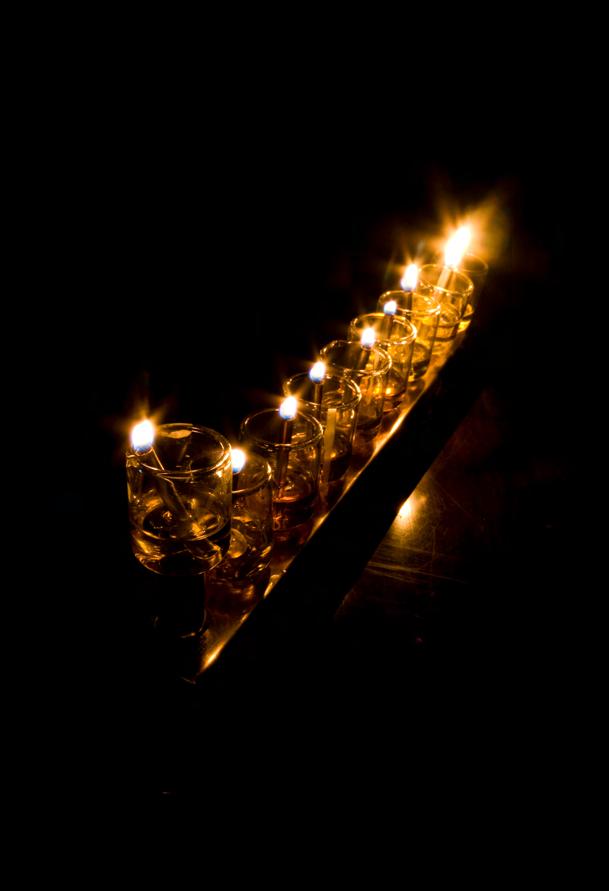
Afewyearslater,wearestillintouch. Madalina updates me on her studies. Andeveryyear,shecontinuestolight the Hanukkah menorah that Tarbut giftedher.
Madalina Miron is one of Tarbut’s ambassadors for the Jewish people, who stands for Jews in times of darkness. Interestingly enough, Madalina’s last name, ‘Miron,’ sounds like a name with Jewish origins. In Romania, there are thousands of people who have lost track of their roots and family identity due to the upheavals of WWII and the communistera.
Light brings freedom, hope, understanding, clarity, joy, happiness. Most of all, it is a source of illumination.”

Racism and antisemitism pervade European football, from the top professional to bottom amateur leagues. Amid the hate, one team stands out for its commitment to sportsmanship–Maccabi.
Across the continent, the Maccabi teams formed by local Jewish communities are setting an example forsportsmanshiponthefield–and opening their ranks to all religions andraces.
In Belgium, Holocaust survivors launchedtheBrusselsMaccabiteam in 1953. In 2004, Flemish players from the village of Haren began shoutingantisemiticchants,
including“Hiss,Hiss,TotheCamps!”
The Belgian Football Association refusedtodisbandtheHarenteam,so Maccabi’s club leaders launched a vocal public campaign against violence and racism. Today, Maccabi players wear a jersey with the logo “Noviolence.Noracism.”
Brussels Maccabi’s welcoming spirit nowreachesalmost300playersfrom agesixtoadultonatotalof14teams, making makes it one of the city’s largestfootballclubs.
“It’s not like most Belgian football clubs,” the parent of one player of North African origin told NOA. “There’satruespiritoftolerance.”

In Hungary, Adománytaxi or ‘Charity Taxi’ is collecting donations door-to-door in Budapest and bringing them to communities-in-need throughout Hungary. 700,000 Romani people live in Hungary, according to the Council of Europe, but are socially and economically marginalized.
Adománytaxi provides a platform for people from diverse backgrounds to engage with each other.
Volunteers pick up the donations, including clothing, food, toys, and more, and then make trips to rural settlements where they are most needed.They’vemadewellover50 trips with the help of over 500 volunteers.
FounderTamásHornwasinspiredto give back after observing the 2015 migrantcrisis.“Adománytaxiisbased on the knowledge and values I got from the international Jewish community,” he told the NOA projectin2020.“ItfeelsgoodthatI can give back something from the huge amount of inspiration I received.”
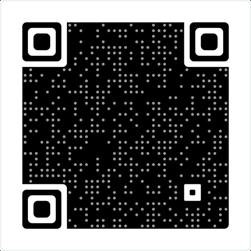

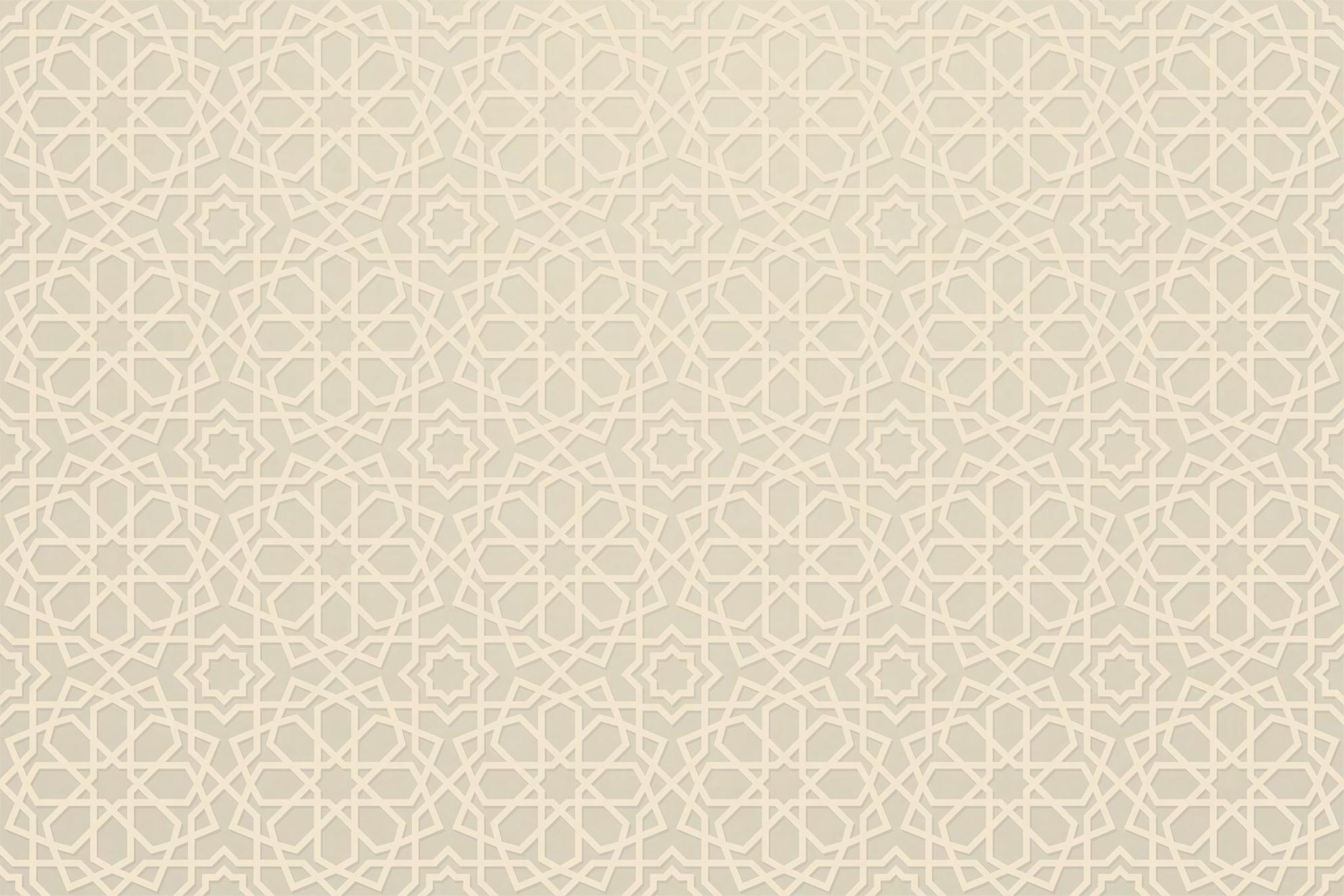

For International Tolerance Day, this is the story of a religious odd couple, who through their friendship, are advocating for greater tolerance between different faith communities.
When Progressive Rabbi Nathan Alfred wanted to learn Arabic, he went to enroll in a class at West London’s Muslim College, a postgraduate Islamic seminary. The administratorrejectedhim.“Whenhe walked out and one of the administratorssaid,‘I’mgladwetold him that the class was full,’” Imam Mamadou Boucom recalls. In revolt, Mamadou approached Nathan and offeredtotutorhim.
The two soon became best buddies. Mamadou,borninSenegal,istalland slender. He arrived in London and earned two masters and a PhD. Nathan,sturdyandstocky,grewupin South London and graduated from Cambridgewithhonorsinclassics.He has served as a progressive rabbi in Brussels, Luxembourg and Singapore. Thetworeligiousleaderssharemany passions,fromfootballtoaferocious beliefinaprogressivepathto
to spirituality and interfaith tolerance.
While Jews and Muslims often live side by side, in London, Paris, Brussels, and elsewhere, tensions betweenthemaregrowing.Jewsfear rising Muslim antisemitism. Muslims accuse Jews of helping the establishmentsuppressthem.
Nathan and Mamadou partner to overcome the divide. They have visited and spoken at Jewish and Muslim communities. They share kosherandhalalmeals.
Their next common project: A documentary project called The RabbiandtheImam.Itwillfollowthe two religious leaders as they travel throughout Europe, how Jews and Arabs share a long history and culture,andacommonfearofbeing aminorityinEurope.

When it comes to Jewish engagement in Poland, there’s nothing Ania Ciszewska aka Betty Q hasn’t done. From volunteering at Limmud; to leading youth groups to Israel; to organizing and cooking up rooftop Shabbat dinner for young adults.

Butsince2010,AniaCiszewska has also been the powerhouse behind Poland’s growing burlesquescene. AsBettyQ,she leads workshops in burlesque dance, and uses her platform to promote women’s empowerment, body positivity, LGBTQ+awareness(lendingher support to Poland’s LGBTQ+ community, Betty Q showed up in full burlesque makeup and attireatapop-upstreeteventat 6amonabitterlycoldday),and toco-createasafeandinclusive spaceforpeopletodance.
She was inspired to create her burlesquealteregoBettyQafter acommunityPurimparty,where she came dressed as the character ‘Ugly Betty’ from the American TV comedy series of the same name. Her friends started calling her Betty from that day on. The name not only stuck, but grew into her burlesquestagename.
Judaism and Jewish texts have made their way into Betty Q’s performances. For a workshop, Betty Q once took inspiration fromthefigureofJewishheroine QueenEsther,a feministsymbol within Judaism. She also has a playful act surrounded on the traditionsofHanukkah,where
sheisdressedasadreidelgiving out chocolate gelt, and then becomes a Hanukkiah with candlesondifferentpartsofher body.
For Betty Q, burlesque is about feminism. Her persona is also tiedtoherJudaism.“Burlesqueis allaboutthejoyoffreeingyour bodyfromthechainsofsociety, about impersonating strong and powerfulcharacters,andlearning from them off-stage,” Betty Q said in an interview with the NOAproject.
Decades after the Holocaust, BettyQispartoftherebuilding of a young - and modernJewish community in Poland, as thousands of Poles have rediscoveredandembracedtheir Jewishroots.
One of her more serious acts, ‘Morte,’visualizesthepositionof her generation in Poland - of Jewswhoweren'traisedJewish. “’ButweallcomefromEve,don’t we?’” she asks the viewers during the act. In the performance, the dancer’s Jewishfamilynamesarewritten acrossherarms,astheyarethen scrubbed away, symbolizing the attempts throughout history to erasethem.

"I cannot imagine just walking on stage without understanding all the details and stories behind my act. Most of my acts are narrative. I am a storyteller. And I guess, these features make my work Jewish."
Nela Hasic, who grew up in Sarajevo’sJewishcommunity,isthe founder of the Think Pink Foundation in Bosnia and Herzegovina. It supports women with breast cancer through every stage, from mammogram tests, to treatment, through post-surgery psychological support, and with awarenesscampaigns.
In developing or conservative countries,women’smedicalhealthis often a taboo topic in the public sphere. In Bosnia and Herzegovina (BiH), which has a mixed Muslim, Orthodox, and Catholic population, access to information and services for breast cancer is often limited. Especially in rural areas, women oftendonotknowwhichpreventive services are available to them. For BreastCancerAwarenessMonth,the NOA project spoke with Hasic, one ofthepeopleworkingtochangethat.
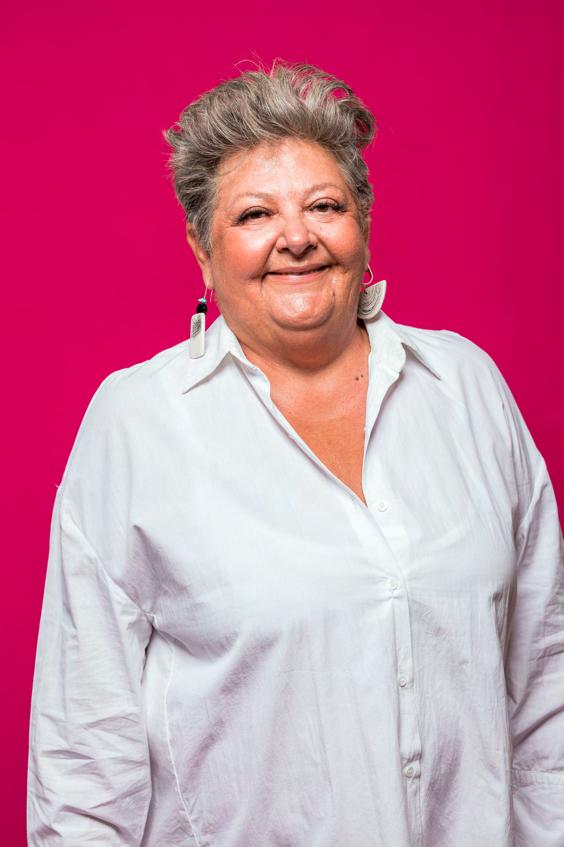
ThinkPinkhasbuiltanetworkoflocal NGOsacrossthecountry,andacross religious and ethnic groups, to implement their work, especially in rural areas. “It is very important to treateveryoneequally,thatisthekey. When you treat everyone equally, everyone feels welcome to collaboratewithyou,”Hasicexplains.
It’s not an easy task in BiH, which is stillsufferingpoliticallyfromtheaftereffects of the Bosnia war of the 1990sthatdividedthecountryunder ethnic lines. During the war, Hasic was evacuated with her family to Israel, where they lived for 10 years. When she returned to live in her native Sarajevo, she began working with the JDC on a women’s health program,andlaterfoundedThinkPink in 2017. She explains that the fact that she is Jewish – and not one of theconstitutionalminoritiesinBosnia – enabled her to work more easily withallofBosnia’sethnicgroups:
“I was thinking: This initiative could bring us together. I really saw that women’s health issues can help with reconciliation. When you are sitting people at the table with an agenda that is common to everyone, and puttingasidewhatisdividingpeople. Wearelikeanhonestbrokerbetween differentgroups.Theyknowwewere a program supported by JDC, but there is no problem with that; they feelourgoodintention.”
ThinkPink’spublicprofilehasearned thempublictrust–andenabledthem to access all communities. This year, theyrana45-daycampaignonbreast cancer awareness, inviting media, radio, and working with local influencers to talk about it on social media. In the last 12 months, they have provided 2,500 free check-ups. For the women who were diagnosed with breast cancer, those check-ups werealife-saver.
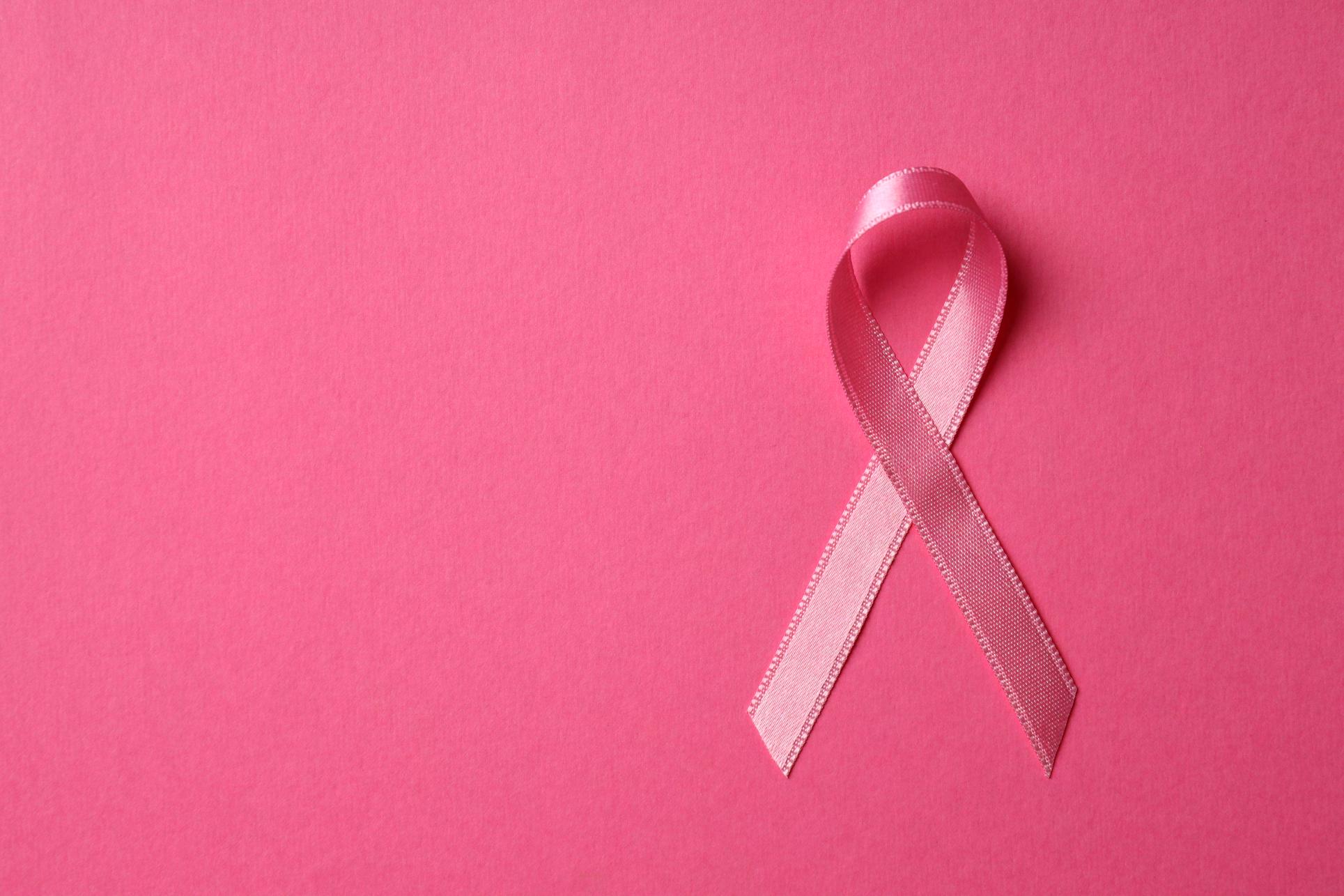
“What mattered was ‘tikkum olam,’ that is what was always in my mind. To make this world a better place,” Hasic says.
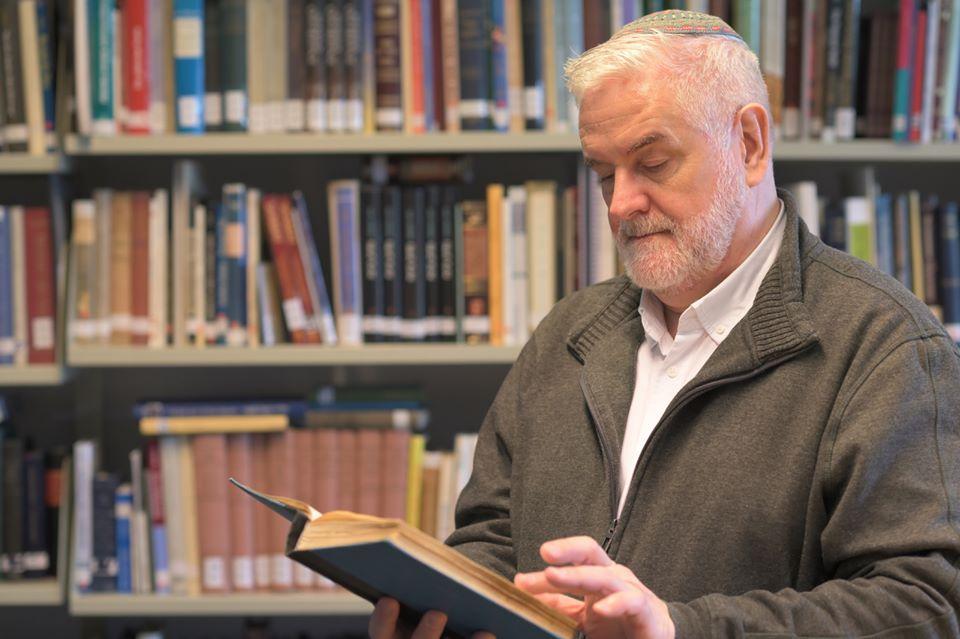
Brian Doyle-Du Breuil is a soon-tograduate rabbinical student of Abraham Geiger College at the University of Potsdam in Germany. He’s also gay –part of a growing trend of LGBTQ+ rabbis in Europe.

“There are LGBT rabbis pretty much everywhere in Europe, some leading congregations, others involved in education or Jewish social justice projects,”saysDoyle-DuBreuil.“Just as society has evolved, so have Jews.”
Nottoolongago,themereideaofa gay rabbi seemed an oxymoron. At best, gay rabbinical students and rabbis hid their personal lives. Attitudes are changing, first among Progressive Jews, but also in the Orthodoxworld.
Doyle-DuBreuilwasborninScotland and moved to Belgium in 1987 to study, winning tenure at the University of Leuven as Professor of the Hebrew Bible. He started the processofconversiontoJudaismasa teenagerandcompleteditasanadult
with the International Jewish Centre ofBrussels,wherehewaslaterasked tobearabbiwhilestillstudying.
“When I applied to Abraham Geiger College,theywelcomedmeandother LGBT candidates with extreme openness and welcome,” he recalls. “Genderequalityisakeypillarofthe college’s profile.” He hopes to graduate from the University of Potsdam in September and will officiallybecomethefull-timerabbiof the International Jewish Centre of Brusselsattheendoftheyear.
“Judaisminspiresustohelprepairthe world wherever we find it broken. That includes the world of relationships. Covid has isolated us fromoneanotherfortoolongandour societiesarestressed,sothere’ssome repairingtodo.”

Albert Oliveras, from Barcelona, Spain, has dedicated much of their time to community building. They are currently working for Moishe House, helping young Jews around the world create and sustain community spaces that are enriching, joyful, and welcoming.
“The positives for queer Jewish people right now are that many people are just not choosing to stay silent.
Many individuals are choosing torepresentthemselvesasqueerand Jewish,andproudlyso.

We are looking for our own definitions. Even those who like to study Jewish religious text and sources,wearelookingthroughthose texts,andaretryingto‘queer’Judaism – and that’s a positive. We want to connect with the text, the traditions, rituals, the community, and culture. It is our birthright to have that connection.
Sadly, it’s easy to think about the challenges.Alotofqueertalentislost in the established communities. We are often not allowed to be leaders whocanreallyexpresstheirqueerness inthewayweshapecommunity.
Little visibility is given to us, mostly superficial. But we are not really allowed to practice that, we are not allowedtoworkthroughaqueerlens, belayleadersinaqueerlens.Ifeelwe are being asked to ‘assimilate’ into straightness,tothenormativityofthis Jewishspace.”
I’dlovetoseethatwecanbeourfull selvesandvisiblewhenengagingwith thewiderJewishcommunity.Because in many places we are small Jewish communities, and we can’t afford to beinourbubble.”
Rabbi Mati Kirschenbaum, a freelance rabbi sharing his time between London, UK and Poland, told NOA about how European Jewish communities need to work together when it comes to LGBTQ+ rights.
"AsaPolishJewintheUK,I’maware ofthedifferencesthateffectLGBTQ+ Jewish life between the different partsofEurope.TheUKisquitehigh on the list of progressive societies when it comes to freedoms for LGBTQ+people.Likewise,theReform andLiberalmovementsinJudaismare the most welcoming organized religious bodies that embrace and affirmLGBTQ+Jews.Butatthesame time,thisisnottheexperienceofthe majorityofEuropeanLGBTQ+Jews.
France and Germany have large Jewish populations. Both are progressive countries when it comes to LGBTQ+ rights. But compared to theUK,theyarenotasvibrantwhen
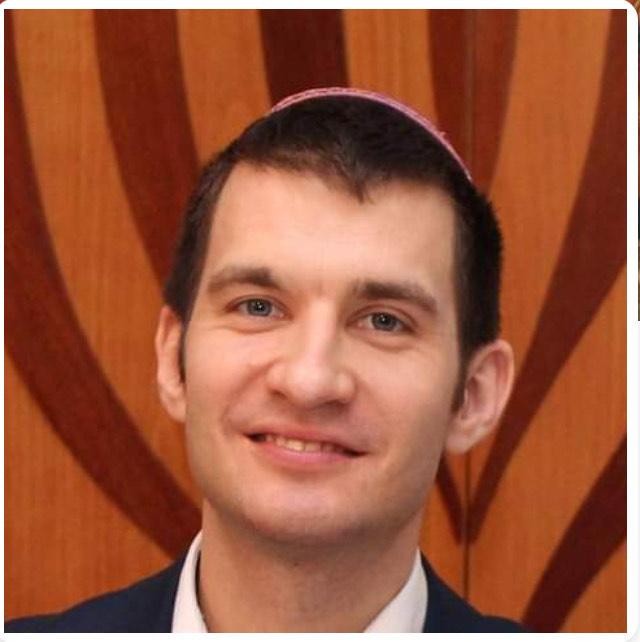
it comes to infrastructure for the LGBTQ+Jewishcommunity.
It’s also partly country-specific. In Germany, the majority of Jews came fromtheformertheSovietUnionand brought those attitudes that being LGBTQ+ is something that is stigmatized. Now, the younger generation that grew up in Germany has the knowledge to tackle these issues.
This discrepancy towards Jewish LGBTQ+ rights between European countriesgrowsevenmorewhenyou lookatcountrieswithsmallerJewish communities. And this is exactly whereactivistsandlocalleadersmake a difference. In countries where the larger society does not embrace LGBTQ+ people, then there’s no impetusfortheJewishcommunityto doiteither.Inthosecases,it’supto local Jewish leaders to sway the internaldynamicofthecommunityto bewelcoming.
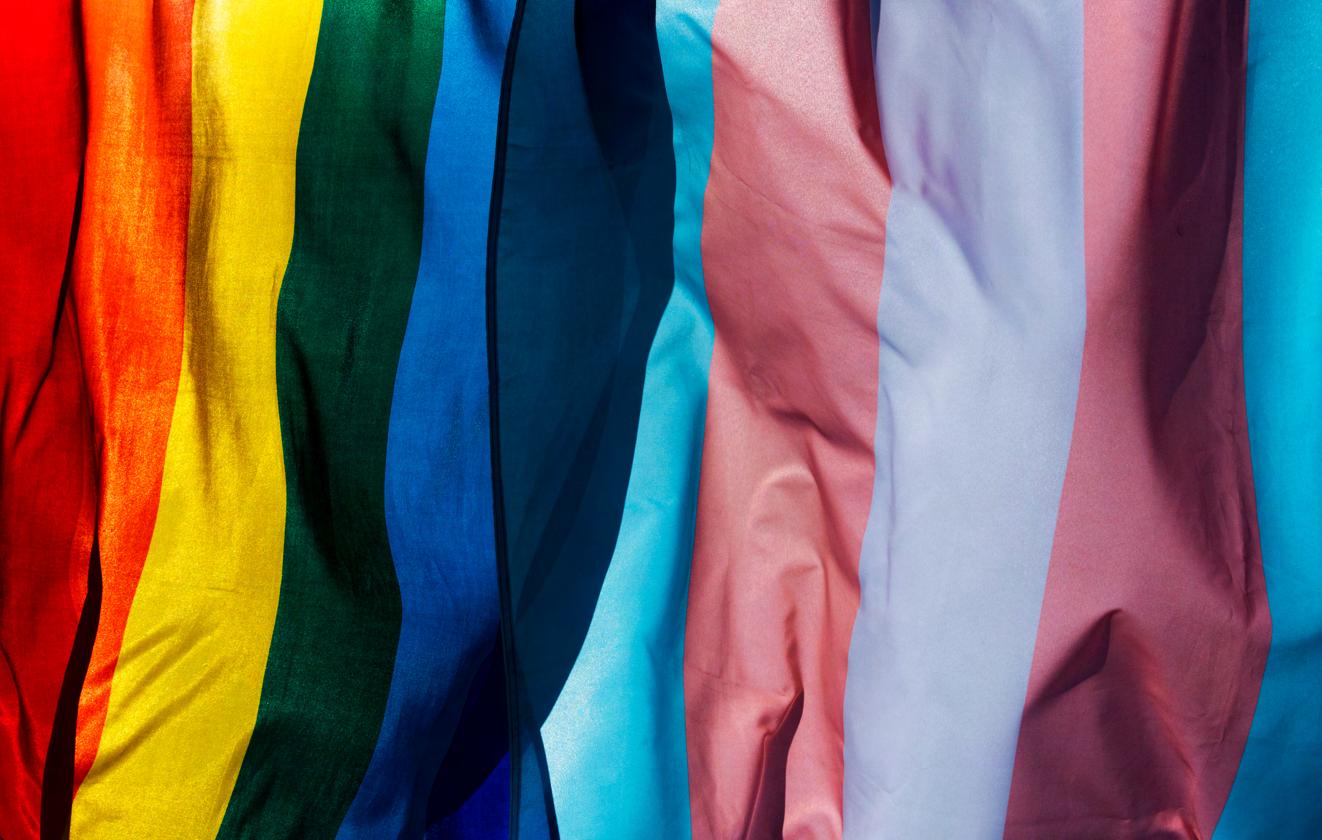
Themostimportantissuehereisnot totreatcountriesasseparateentities, because the Jewish community in Europe is too small for this. It’s particularly crucial right now, when we are seeing a wide level of European Jewish migration. In the wake of the Ukraine war, Jews are becoming refugees again, migrating from Ukraine to Europe, and among themareLGBTQ+Jews.
ItisinJews’bestinteresttocondemn homophobia coming from any governmentorpoliticalparty.Wecan allagreethatJewishcommunitiescan standupandvoicetheiroppositionto intolerance towards all minority groups, because that goes against Jewishvaluesoflovingyourneighbor.
Thisisaquestionofhumanrights,and of Jewish opposition to the weak being oppressed. When freedom of speechisendangered,itisathreatto theJewishcontinuityinthatcountry.
Becausewithouttheprotectionof
freedom of speech, the Jewish community’s continuity is then dependent on the graces of the politicalleadership.It’smuchbetterto speakoutbeforethesituationcomes tothat.
Ofcourse,thisismuchmoredifficult in countries that are not democratic. In non-democratic societies, I would embrace a policy of creating a democratic climate internally within thecommunity.Andwhenitcomesto LGBTQ+rights,tocreatesafespaces within the community. It’s a difficult position, where Jewish leaders need to effectively play the official tune outwardly, but then have an active policy of embracing LGBTQ+ Jews internally.Theseleaderswouldneeda lot of support from the larger EuropeanJewishcommunity.
Thereisn’tasinglepolicyforensuring LGBTQ+ equality within Jewish communitiesinEurope.Itisasdiverse asEuropeisdiverse.Butwhatwedo needisEuropeanJewishsolidarity."
Far-right movements and antisemitism are on the rise in Europe.TheNOAprojectspokewith DutchJewishactivistLievnathFaber on her efforts to unite the fight againstantisemitismwithotherantiracismcivilsocietymovementsinthe Netherlands.
“It’s about building bridges. The hate andstereotypesfinddifferentwaysto expressthemselves,butweshouldbe unitedinunderstandingthatwewho are fighting racism are all in this together,”shesays.
Faberistheco-creatoroftheOyVey Jewish cultural hub in Amsterdam, which began in 2018. Most of their activities are held in the Uilenburgersjoel,ahistoricsynagogue buildingintheformerJewishQuarter. ForFaber,beinginthecitycenterwas very important, as most Jewish community buildings are located in otherdistrictsfurtheraway.

And while central Amsterdam does have a Jewish museum, synagogues, and Holocaust memorial sites, through Oy Vey they wanted to createanopen,inclusiveJewishspace where anyone regardless of religion, ethnicity, orientation, or age feels welcometodropby.
Oy Vey is “unapologetically Jewish,” Faber told the NOA project. “Which means we are celebrating Jewish culture and identity and not hiding it inanyway.Notbehindsecuritywalls, [and without] the feeling of unsafety in broader society which makes you not want to say you are Jewish. We wanttocreateaspacewhereyoucan beloudlyJewish.”
After the murder of George Floyd in theUSinMay2020,OyVeyreleased a statement of solidarity with the black community, Jews of color, and allcommunitiesofcolor.“Attheheart ofJewishethicsisthecalltospeak
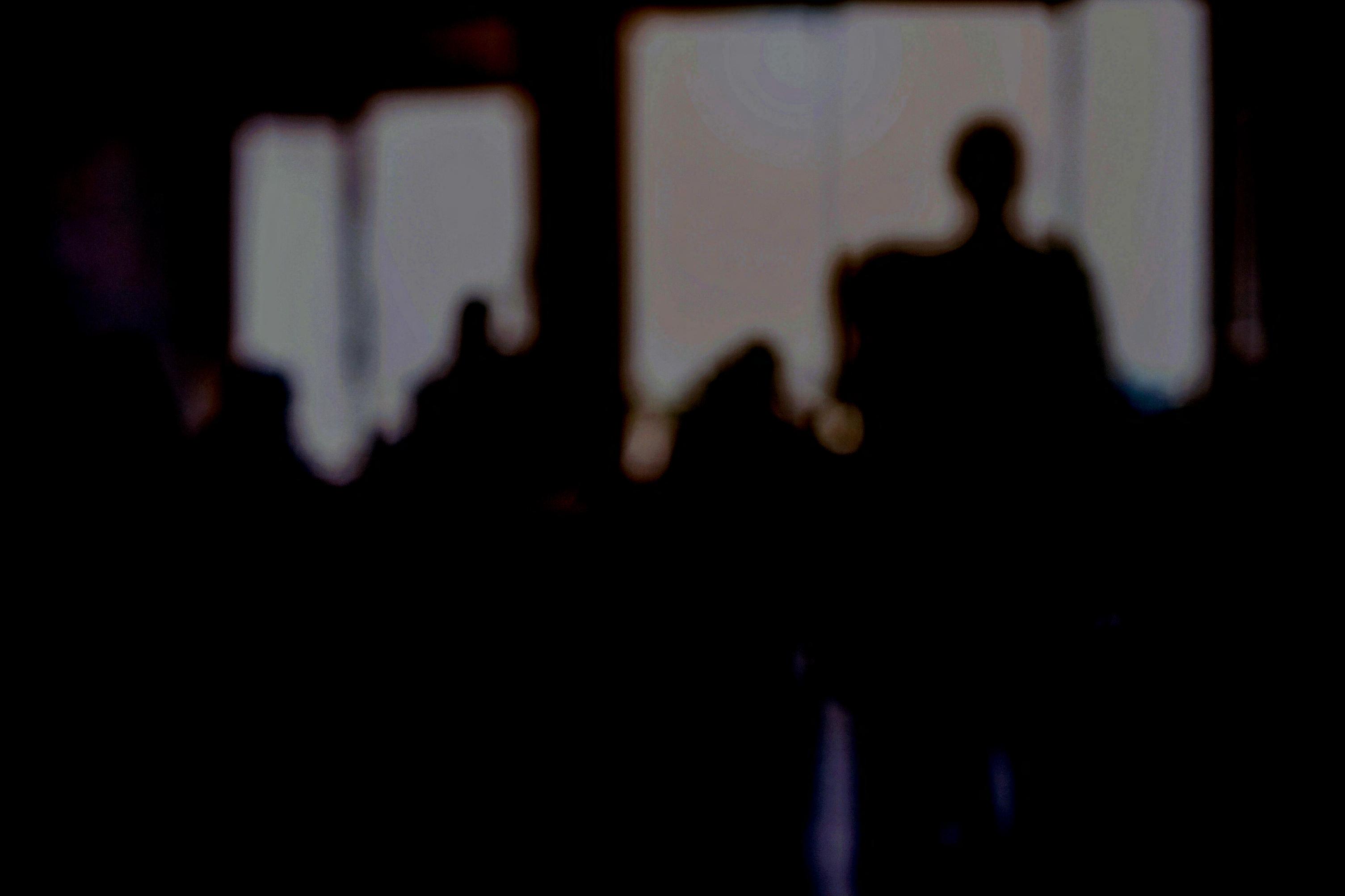
out against injustice and not be indifferent to the suffering of others,”thestatementread.
Since then, Faber got involved working on the intersection of racism and antisemitism as an Alfred Landecker Democracy Fellow, supported by Humanity in Action. Oy Vey gathered a grassroots group of Jewish activists that are working with a plethoraofanti-racism,feminism, climate, and other movements. NotonlydotheyexpressJewish solidarity, they are also enabling Jewish voices to be heard. “By being present as Jews in these spaces, we also take space to express Jewish needs, our worriesaboutantisemitism.Allof us have felt and still feel unsafe in these movements… There are alotofblindpostswhenitcomes toJews,”Faberexplains.
During local Dutch elections in 2022, Oy Vey Acts, their grassrootsactivistbranch,joined talks with other societal groups advising political actors on what needs to be done regarding institutional racism, discrimination, and exclusion, including when it to comes to antisemitism.
In 2021, a coalition group includingOyVeyActs,anAsian
rights group, black rights group, anti-Islamophobia group, and an undocumented people’s rights group won a municipal grant from the city of Amsterdam’s diversity department. Covering two years, they are working on initiativestohelpcombatracism and exclusion. Oy Vey was also anorganizerofthe2022‘Week against Racism’ program, and is hosting educational talks with otherJewishcommunitiesonall things antisemitism, Israel, and the need to introduce intersectionality into the conversation.
On her part, Faber co-curated a 2021 exhibition at the Jewish Museum asking the question, “Are Jews White?” which explores how Jews are viewed differentlyindifferentcircles.In one video piece, a Jewish participant describes that by being white, he doesn’t experiencepolicediscrimination.
On the other hand, he states, “weJewshaveneverbeenwhite, never the norm, never the majority.Throughoutthelargest part of history we have been excluded as an ethnic minority, persecuted, and massacred. That’snotexactlywhite.”

It comes back to the Jewish experience of marginalization and persecution – and the very purpose of why Oy Vey exists as such an ‘unapologetically Jewish’ hub.
"It’s hard for others to understand that the trauma of the war, and hiding your identity, is very ingrained," Faber says. "You may pass as white, but you never feel safe. This is how it plays out in our lives."
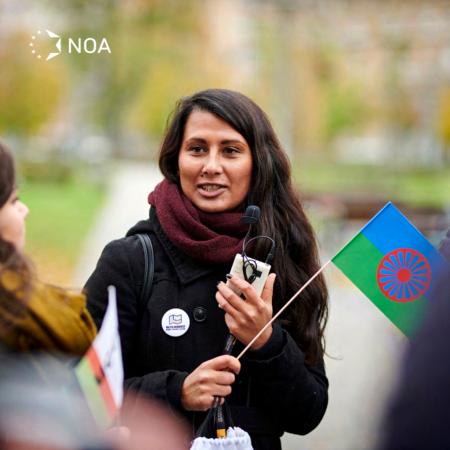
August 2nd is Roma Holocaust Memorial Day, commemorating the 500,000 Roma murdered during WWII in Nazi-occupied Europe. Nearly eight decades after the genocide, Romani people remain a socially and economically marginalized community in Europe.
Yet “Roma history, literature, and culture are not taught in schools,” explainsJuditIgnácz,aRomaactivist from Hungary. “Roma thematic content is not found in any books. Thisknowledgeislacking.”
TheUccu Roma Informal Educational Foundation, a civic organization where Ignácz works, is looking to changethat.Usingtoolsofnonformal education and workshops, they provide factual knowledge to school studentsabouttheRomacommunity, in an effort to counter negative stereotypesandprejudices.
Uccu runs its programs in four cities, connecting Roma and non-Roma youthtosimplymeet,talk,andgetto knoweachother.“Intheory,everyone knows that having prejudices against oppressed groups is not good. Some kids know because they learn that from their parents. But in practice they don’t really understand the concept,”Ignáczsays.
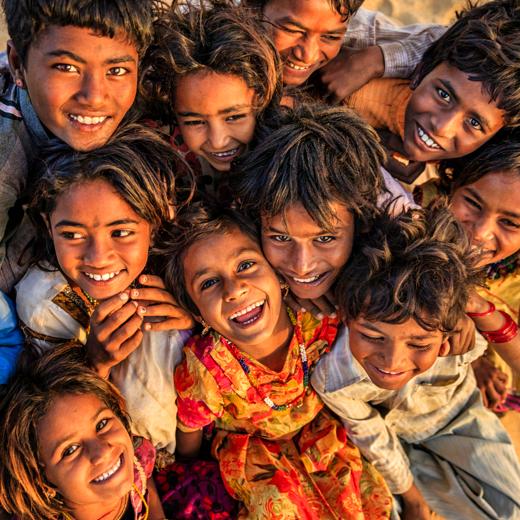
Uccu is also assisting a future generationofRomaleaders.With4045 young Roma volunteers visiting schools, they are strengthening their Romani identity and creating a communityandsenseofbelonging.In addition, the NGO organizes walking tours in Budapest’s “District 8,” commonly known as a ‘no-go-zone’ due to misconceptions about its inhabitants,partlyconsistingofRoma. Uccu is bringing people there to exposethemtotherealneighborhood andcutdownthestereotyping.
It’s not an easy project. Hungary’s marginalized Roma have been exposed to the violence of far-right groups. Uccu was founded in response to the 2008-2009 attacks on Roma settlements by neo-Nazis who killed six Roma people, among thema5-year-oldboy.
More recently, during the early days ofthecoronaviruspandemicinspring 2020,hundredsoffar-rightextremists
held an anti-Roma demonstration in Budapest in response to a stabbing during a football feud, yelling slogans about ‘gypsy criminality.’
Angered about the situation in their country, Ignácz and a group of friends went on Facebook Live simply in order to share their opinions and raise their voices. They then organized a series of Facebook Live talk shows, becoming the brand Ame Panzh (‘We5’)onTVBaxtale,
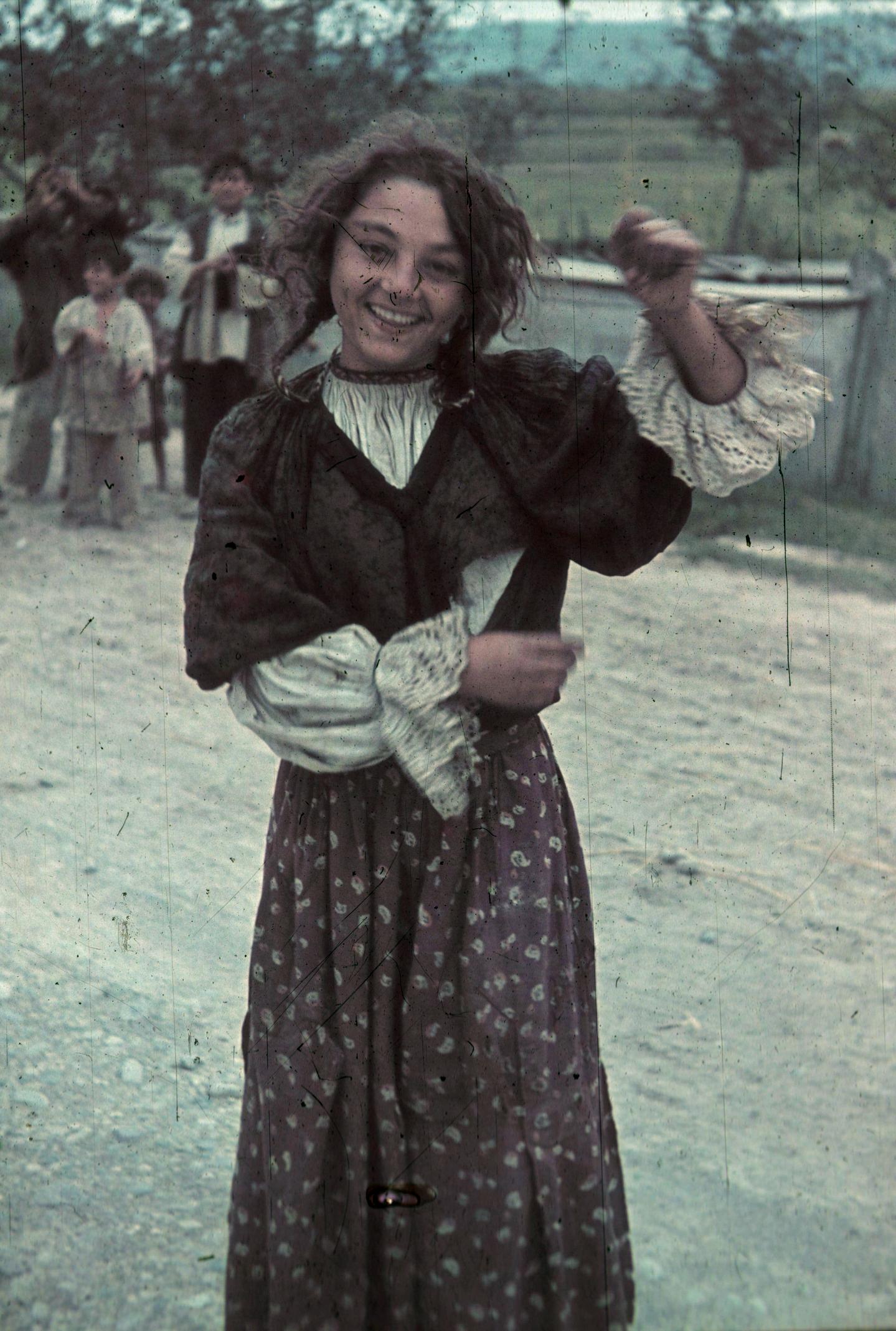
anonlineandinformalRomamedia group, where they speak about issues affecting Roma. Topics ranging from racism, police, and school segregation, to diversity inclusion, intersectionality, gender &sexuality,depression, andburnout.
Romavoicesaresimplymissingin mainstreammedia,Ignáczexplains. So they had to do it themselves: "One of our aims is to get our content in mainstream platforms. Amplifyourvoices."
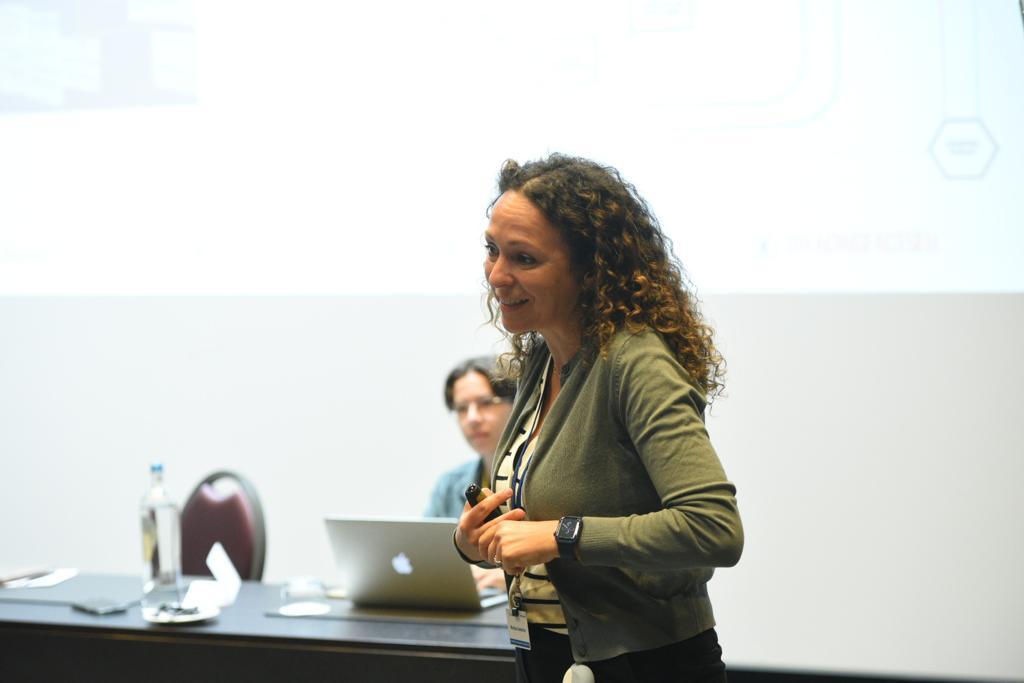
Withthecoronaviruspandemic,hate incidents and hate speech have intensified, both online and offline. Online tools to counter hate are neededmorethanever.Thisiswhere FacingFactscomesin.
Facing Facts is a unique European project working to counter hate speechandhatecrime.Itwasstarted in 2011 by the Brussels-based organization CEJI - A Jewish contribution to an inclusive Europe. At the time, LGBTQ+ and Jewish groups joined forces on monitoring hate crime and sharing their knowhowandexperiencewitheachother.
“We were committed to creating an on-goingplatformforcommunitiesto connect and learn from each other –and about each other – in fighting hate,” explains Melissa Sonnino, Facing Facts’ Coordinator at CEJI (pictured).

Today, the project brings together civil society, law enforcement, policymakers, universities, and activists. The platform, Facing Facts Online, provides trainings and online courses that focus on hate crime recognitionandmonitoring,aswellas understanding and countering hate speech.Morethan3,000participants acrossEuropehavetakenpart.
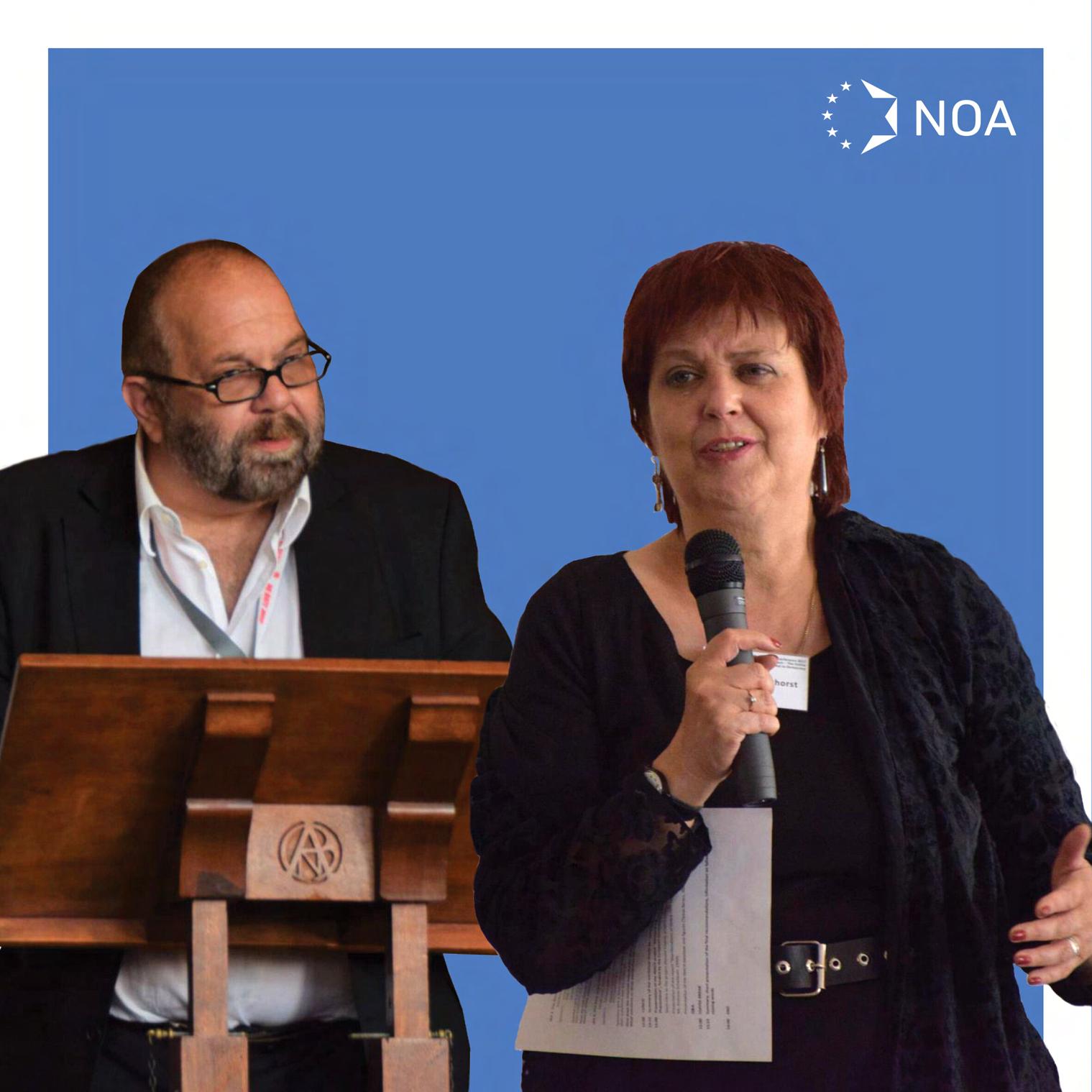
Suzette Bronkhorst founded INACH (International Network Against Cyber-Hate) together with her late partner Ronald Eissens back in 2002. They were pioneers in responding to the problem of the internet as a breeding ground for spreading discrimination and antisemitism –and its ability to influence young people.
Before INACH intervened, only law enforcementintheUScouldcontact Twitter about dubious content,” Suzette highlights regarding the challenges they had when they got started. “So we brought hate on the internet as an issue to the UN, the OSCE,andtheEU.”
Beginning with the duo of dedicated volunteers in the Netherlands, the project grew into a European, and now, a truly international project.
INACH unites and empowers organizations that are already active inadvocatingforhumanrightsonthe internet and are countering cyber hate, extremism, and incitement to violence. Its member organizations deal with hate speech affecting all groups, including antisemitism, antiRoma and anti-LGBTQ+ hate speech, and beyond. INACH recently led the coordination of EU-level hate speech monitoringexercisesthatprovidedata on whether social media companies removeillegalhatespeechinatimely manner.Thisiscrucialinensuringthat illegalincitementtohatredorviolence doesnotstayonline.

topics and connects organizations fromacrossEuropeandbeyond,most recently expanding their work into Africabyonboardingtheorganization Africa Sans Haine, ‘Africa Without Hate.’
The importance of countering online hatewasmadealltooclearyetagain in 2020. With the COVID-19 pandemic, the online phenomena of hate speech, fake news, and conspiracy theories increased dramatically almost everywhere. INACHcontinuestoworkonallthese
For Suzette and her late partner Ronald, both children of Holocaust survivors, it has been their life’s mission to stop hatred and discrimination from spreading online. InSuzette’sview,thecurrentsituation can be summed up relatively easily: “Thebeautyoftheinternetisthatit’s thebiggestinformationsourceinthe world.TheproblemofInternetisthat it’s the biggest information source in theworld.”
Jews make up only 0.2% of the population in Germany. Since most people in Germany don’t have personal interactions with Jews as a result,theirknowledgeaboutmodern Jewish life is not based on real-life experiences.
“Meet a Jew” is a project of the Central Council of Jews in Germany under the patronage of the Federal President of Germany, Frank-Walter Steinmeierandsupportedbythe“Live Democracy!” program of the German Federal Ministry for Family Affairs, Senior Citizens, Women and Youth. Launched in 2020, the initiative travels throughout the country to introduce Jews and Judaism to nonJewish people. Over 450 volunteers regularly visit schools, universities, sportsclubs,andothergroupstotalk about their daily life, their Jewish identity, and answer questions about Jewish life in Germany today. By meetingpeopleface-to-face,theyaim

to debunk stereotypes about Jews, replacing them with actual experiences. During the pandemic, many of the encounters occurred online.
The initiative comes at a sensitive time, as antisemitic incidents have beenincreasingacrossGermanyover the last years. In 2019, a far-right shooter tried to break into the Halle synagogue on Yom Kippur while worshippers were inside. During the coronavirus pandemic, anti-vaccine and other conspiracy myths often intertwined with anti-Jewish stereotypes.
“Being a minority in Europe and having the awareness of the Shoah, Jews understand and value the importance of fundamental democraticrightssuchasfreedomof religion, freedom of expression, and theprotectionofminorities,”Dr.Josef Schuster,PresidentoftheCentral
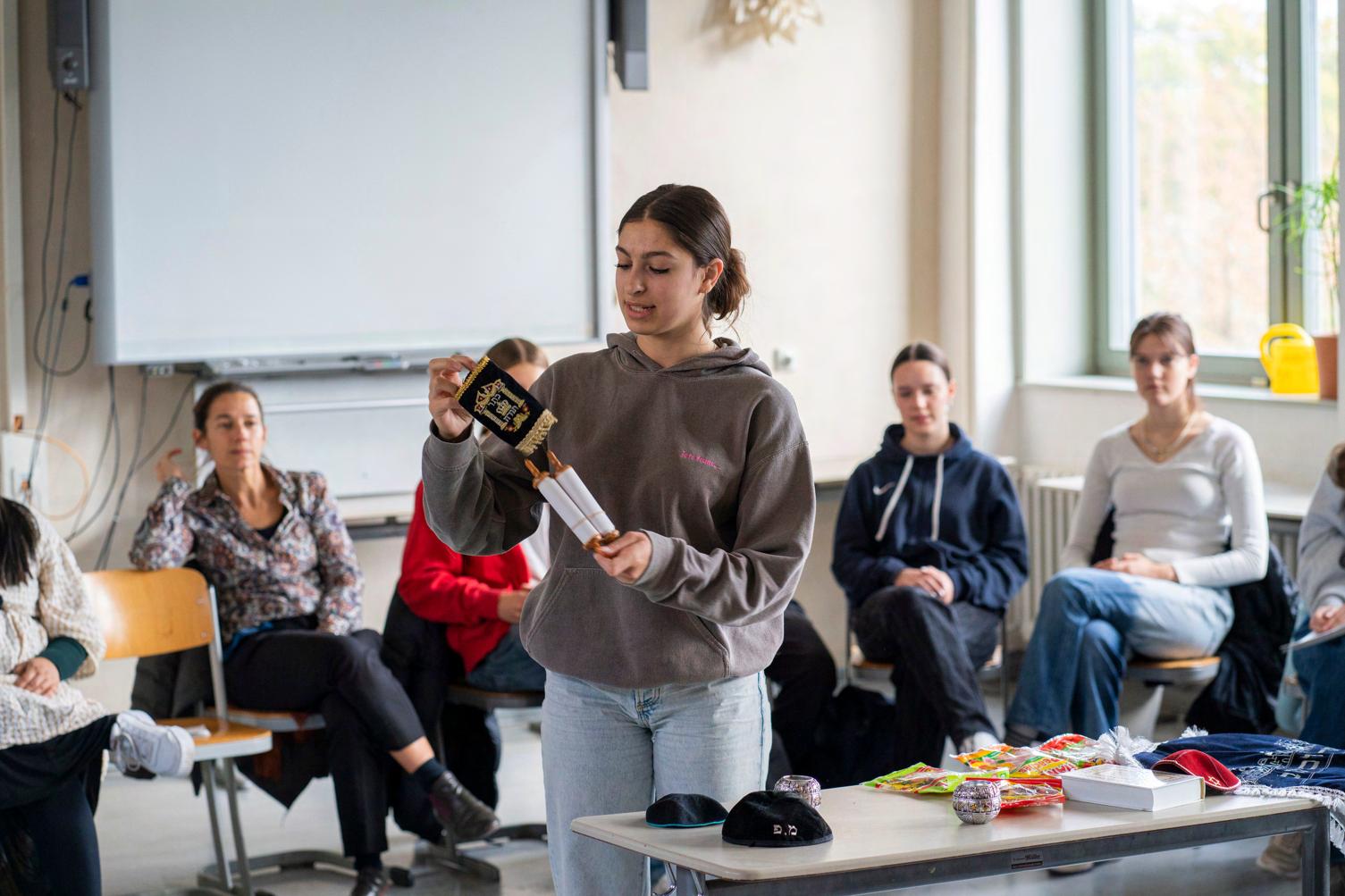
CouncilofJewsinGermanyandVicePresident of the World Jewish Congress, explained to the NOA project.
“Jewish volunteers with Meet a Jew therefore see their involvement not only as a service to the Jewish community, but as a contribution to Germany’sandEurope’ssocietiesasa whole. They are sensitive to antidemocratic developments, which try to attack the core values of free societies and often come along with conspiracy theories and antisemitic tropes.”
JewishvolunteerswithMeetaJew
encouragedialogue,introduceJewish people as individuals in contrast to abstract and generalizing representations of Jews as a presumably homogenous group, and help debunk stereotypes. They also strive toward building allyships between different minority groups andencourageyoungpeopletospeak up. “My motivation [is] that we can finally start focusing on what unites us,” Alexandra, one of the young volunteers relates. “Instead of frantically searching for what makes usdifferent.”
For more information please visit www.meetajew.de.

StéphanieLecesne,basedinBrussels, is a dedicated advocate for intercultural understanding and cooperation among diverse communities.Withaferventpassion for fostering inclusivity, she has channelledherexpertiseineducation andtrainingtobridgeculturaldivides andpromotedialogueacrossEurope, NorthAfrica,andtheMiddleEast.
Originally from France, Stéphanie's professional journey began at Caen University, where she pursued a Master's degree in ‘European Local DevelopmentProjectsExpertise,’and alsocompletedaninternshipatCEJI.
Over the years, she honed her skills in designing and developing courses centred on intercultural learning, integrating innovative non-formal educationtechniques.
StéphanierejoinedCEJIin2011asa Training Coordinator. She has reached thousands of teachers, youth, and social workers through her trainings, equipping them with the knowledge and skills to drive positive change. Moreover, Stephanie co-constructed and continues to deliver CEJI's awardwinning BelieforamaTM trainings on religionandbeliefdiversity.

The European Jewish Community Centre(EJCC),basedinBrussels,isa hub for Jewish events, services, and resources, working to enrich the qualityofJewishlifeintheEU.
The centre offers an array of conferences and courses, covering topics on Judaism and Hebrew languageclasses,andwhichcatersto bothchildrenandadults.
One of its main goals is to cultivate harmony between groups, so that all peoples can thrive in safety. The EJCC’sDialogueandDiversityproject aims to foster intercultural dialogue among people of different religious and cultural backgrounds, bringing together Jews, Muslims, Christians, Buddhists, and non-confessional individuals to promote understanding and reducing stereotyping and prejudices. They host workshops, trainings,andpublicevents.
The EJCC’s solidarity program, called Yachad-Together, aims to create interpersonal relationships between people from different age groups, backgrounds, and religions. Volunteersandparticipantsgatherfor weeklyvisitsandforspecialholidays, creatingcommunityandbelonging.
Since the start of the war in Ukraine in February 2022, they extended the programtocreatenetworkofhomes to welcome refugees in Brussels, integrating and including them into theircommunity.
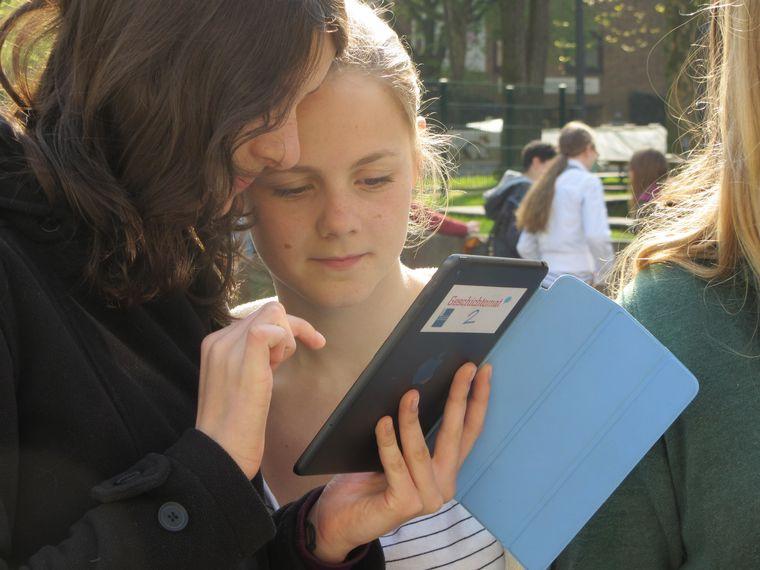
2021 marked 1,700 years of Jewish life in Germany. A good opportunity to discover the Jewish history of the city of Hamburg – perhaps with the help of a digital map created by German high school students?
The organization Geschictomat, meaning“historymachine,”isgiving high school students independent accesstotheJewishhistoryoftheir citythroughmethodsfarbeyondthe classroom.
AccordingtoGeschictomat,teaching Jewish history in Germany is almost alwayslinkedtotheHolocaustanda narrative of persecution. They wantedtoaddadifferentlayerthat narrative.
Within the frame of the weeks-long project, students get familiar with historical figures and places around the city. They visit synagogues and Jewish cemeteries, kosher factories, the state archives, museums and galleries, and conduct interviews. At theendtheywritearticlesorrecord videos about their research, which arethenuploadedontoadigitalmap ofthecity.Itbecomesadigitalmap of Jewish Hamburg through the experiences of Hamburg students. Morethan800schoolstudentshave participatedsofar.
“Attheendofeachprojectweek,the young people have gained a small insight into the Jewish history of their city,” says Dr. Carmen Bisotti, Geschictomatprojectmanager.“


“Jewishpeoplearenolongerseenas just an unknown minority, but suddenly part of their own history andeverydaylife.”
Geschictomat won the 2020 Obermayer Awards in Berlin, honoringpeoplewhoarecommitted to remembering Jewish life in Germany.

"Ajourneyofathousandmiles begins with a single step," a proverb says. For countering climatechange,everystepcan help.
In the UK, EcoSynagogue and the Board of Deputies of British Jews are supporting Jewish places of worship with the tools to help combat the climate crisis. Their initiative was launched ahead of the COP26 UN Climate Change Conferencewhichtookplacein Glasgow in October –November2021.
The world is currently not on tracktolimitglobalwarmingto 1.5 degrees. If temperatures will carry on rising, it would bring even more catastrophic flooding, bush fires, extreme weather, and destruction of species.Strongandsustained
reductions in emissions of carbondioxide(CO2)andother greenhouse gases would limit climatechange.
EcoSynagogue is helping synagogues assess how they can be more eco-friendly. By forming Environmental Impact Teams and creating a synagogueeco-policy–suchas recycling, reducing packaging, using energy-efficient lightbulbs,composting,planting acommunitygarden.Bytalking about environmentalism in sermons and in ‘shiurim.’ By hosting environment-centered programs and discussions for congregants and youths. Their EcoShabbat program in November 2021 hosted a range of events, such as an alternative vegan Friday night dinner, with vegan recipes for traditionalJewishmeals.
Every community is different: Some operate in rural areas; some urban; some in old buildings; and some in new buildings. But every community can play a part in reducing their carbon footprint.
"Judaism teaches that every species matters," Rabbi Jonathan Wittenberg, a co-founder of EcoSynagogue, says regarding the initiative. "And that we are responsible not only for other human beings, but for the rich biodiversity of our planet."
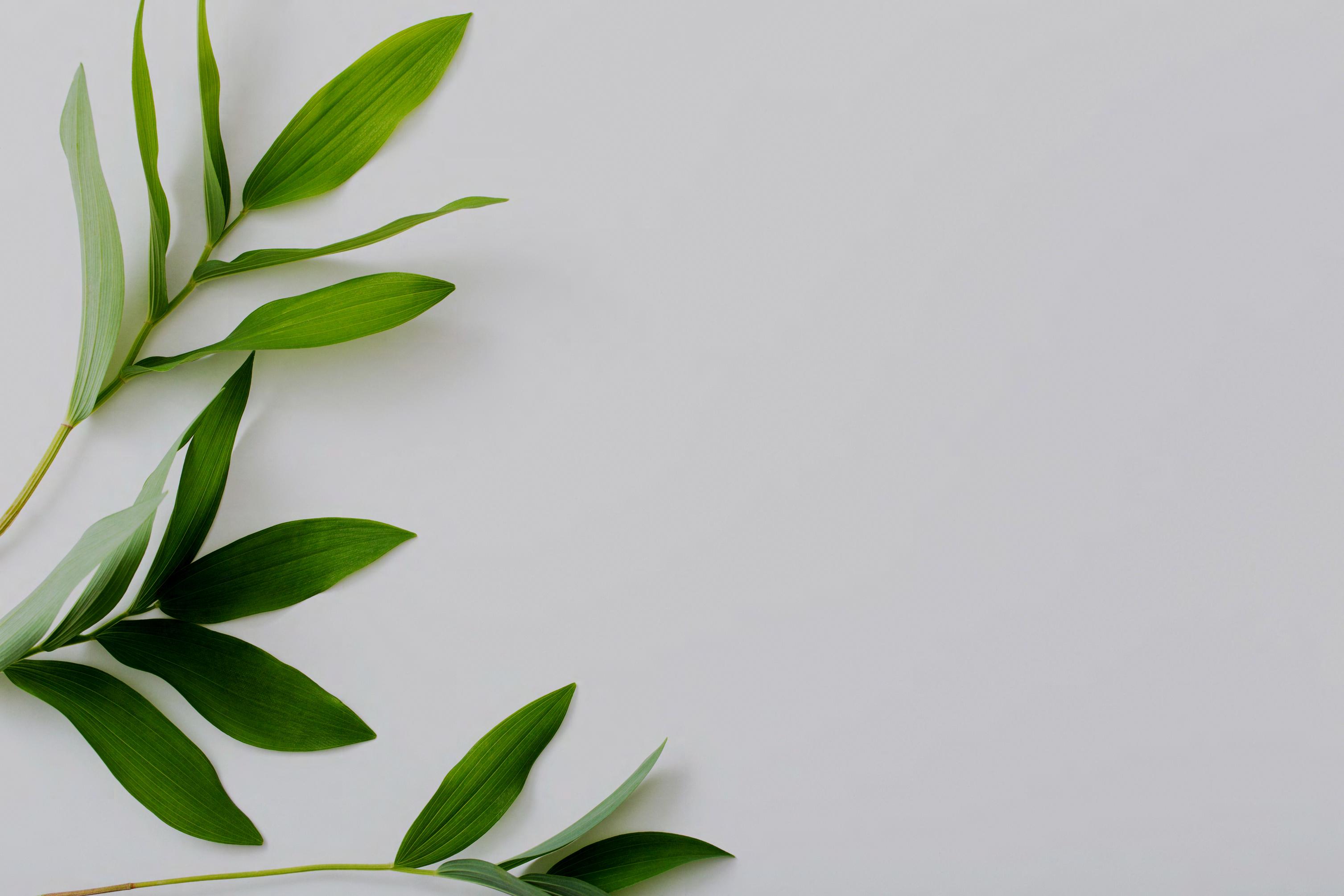
When Rabbi Daniela Touati finished her studies and assumed leadership in France, she formed a group to create an eco-synagogue – and invited local Muslim and Christian groups to participate. On June 20, 2021, the garden of Lyon’s Progressive Keren Or synagogue (www.kerenor.fr)wasinaugurated.
InJewishbelief,theCreatorlovedall his creations: Plants, animals, and humans. The Bible tells us that the earth is given to humankind “to use and protect.” In this era of climate change, more and more Jewish communities realize that they must playtheirpart.
TheLyonsynagoguepartneredwitha local NGO called “The Green Hands” and began gardening. Fruit, vegetables, and herbs are planted. The plan is to have two growing seasons,springandfall.
Each month, a dozen participants from the synagogue, church, and mosquemeettoworkonthegarden. Although most of the products will be donated to charities, the synagogue plans to consume some forinterfaithpicnics.

Keren Or aims to become a fullfledged“ecosynagogue.”Inaddition tothegarden,ithasheldconferences on subjects such as digital pollution to inform the community about the challengesoftacklingclimatechange. Rabbi Touati plans to use the synagogueformuchmorethanfood production. In this era of lockdown restrictions which limit synagogue participation inside, she is using the garden to lead services for the cheder, hold kiddushim, and other synagogue events. “All religions can sharethisgreenfaith,”shesays.Her community’sgardenislivingproof.
NOA-PROJECT.EU
Scan to watch NOA's video content
